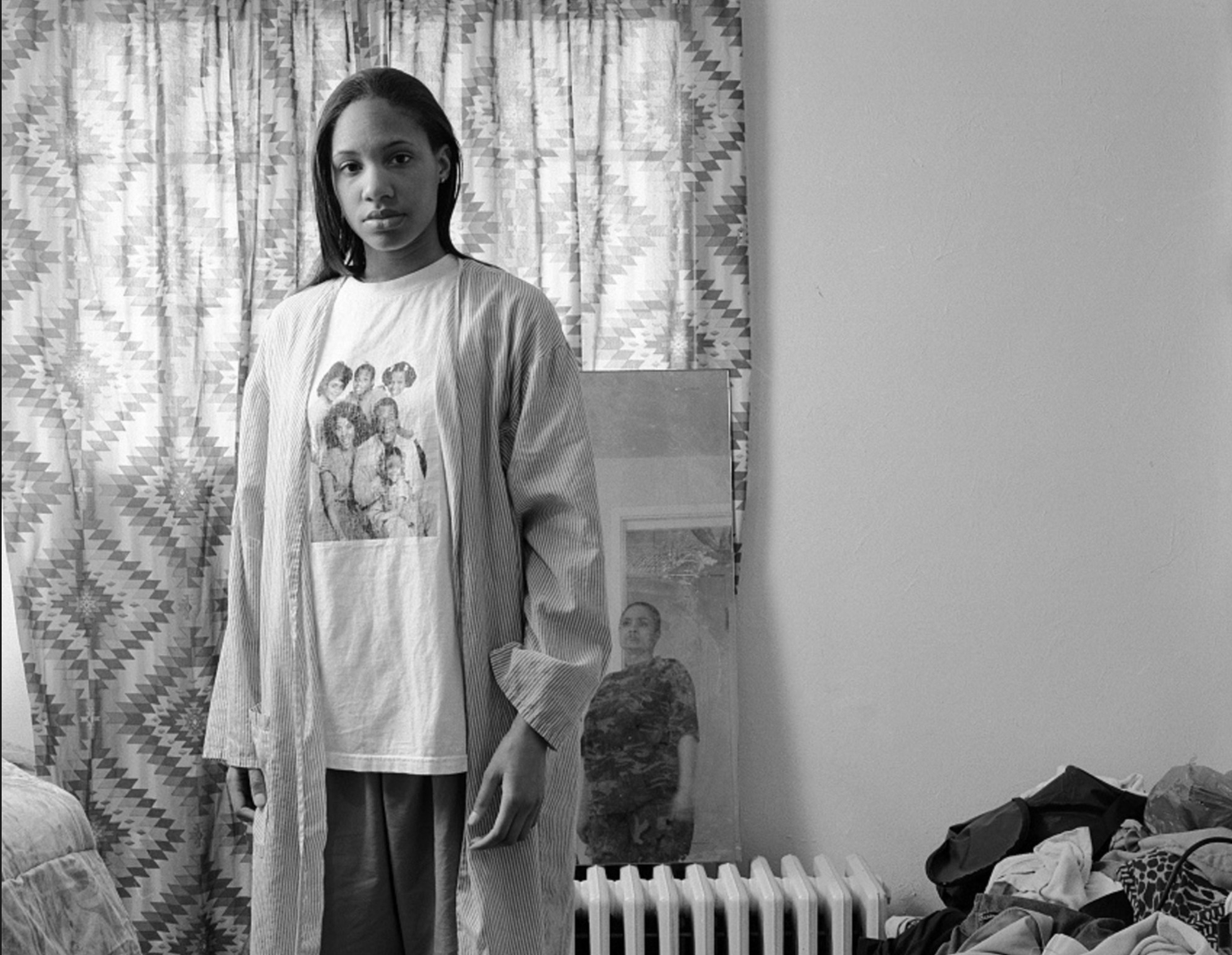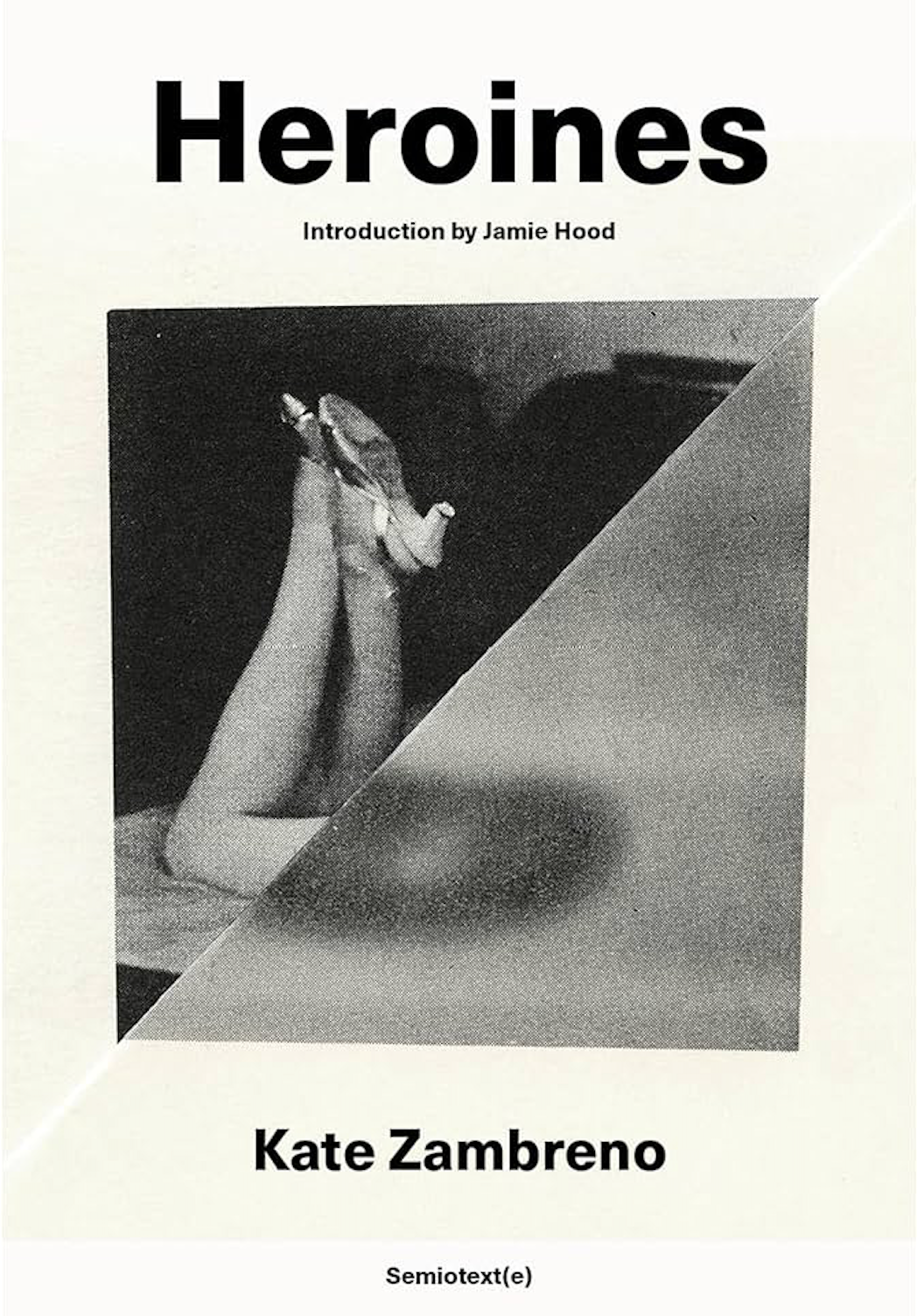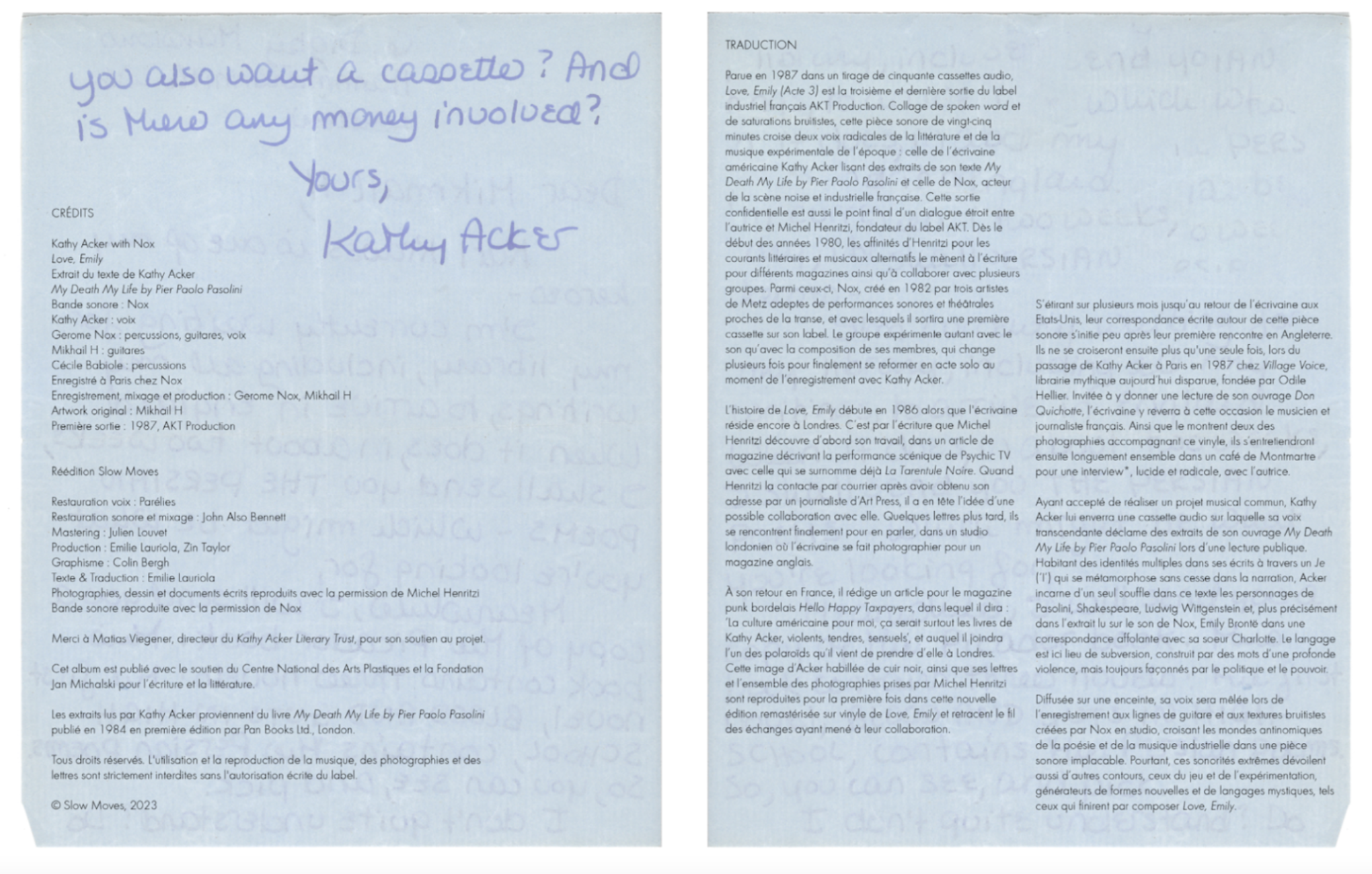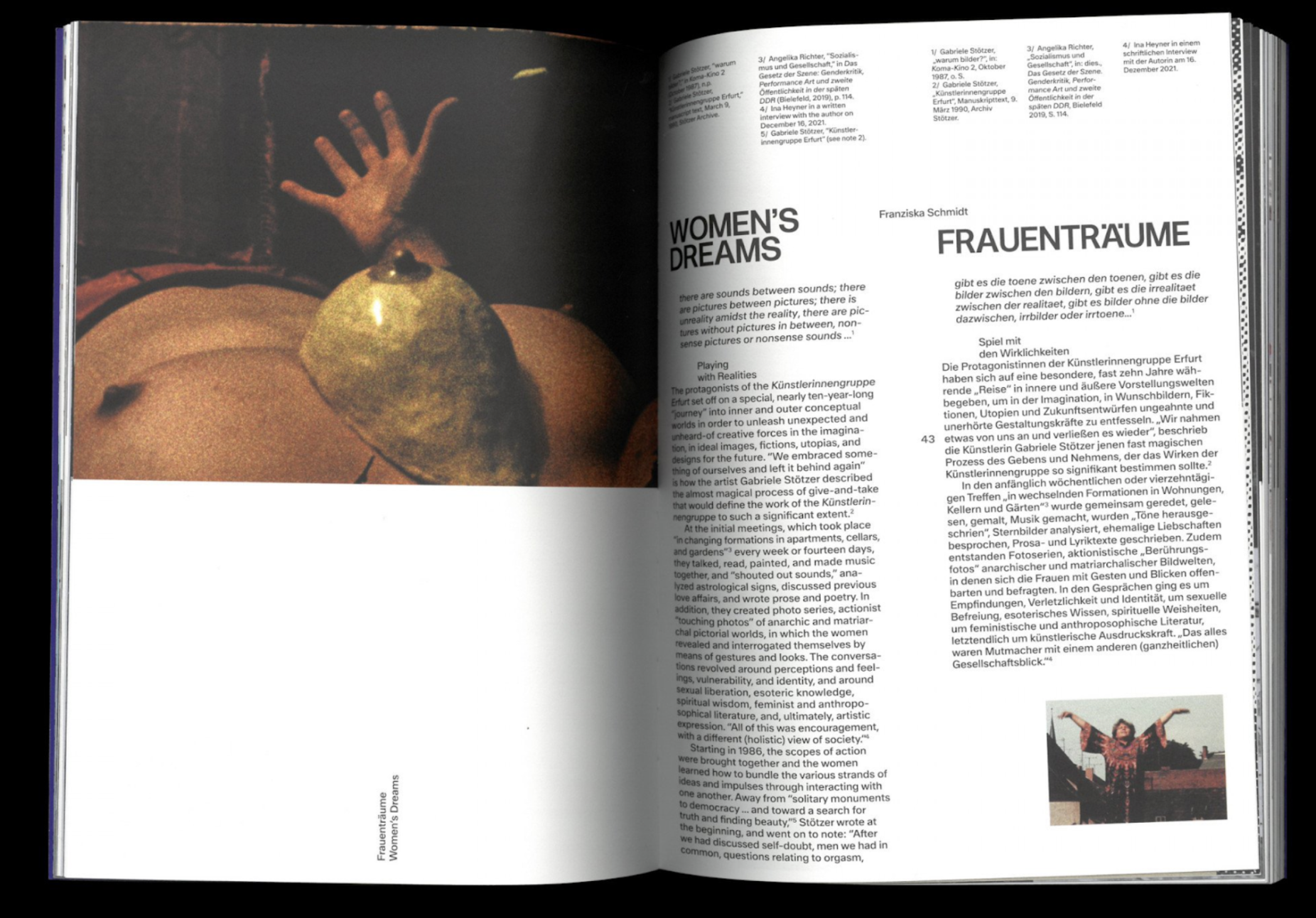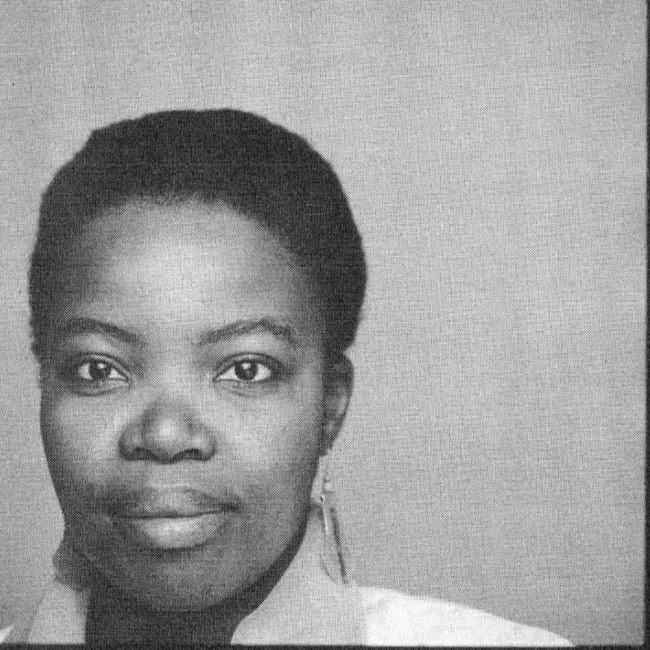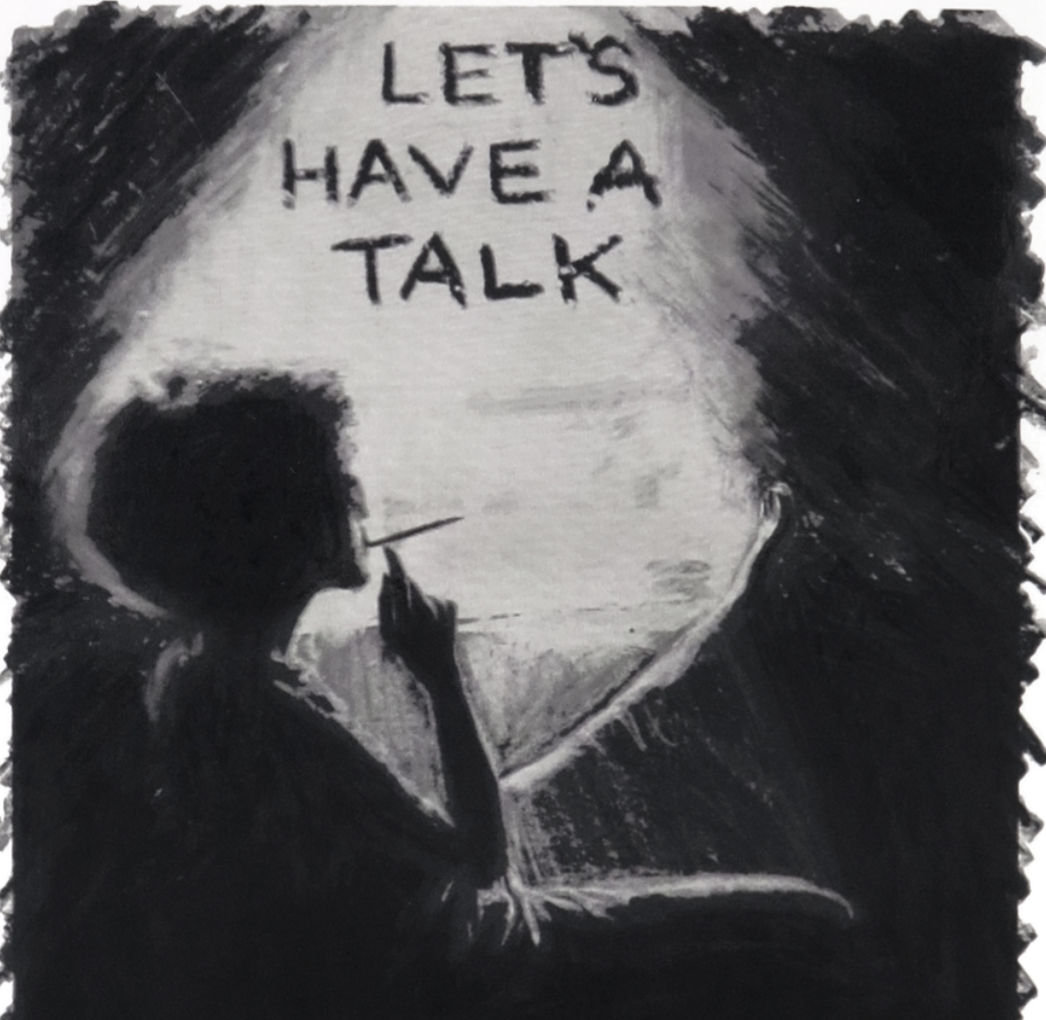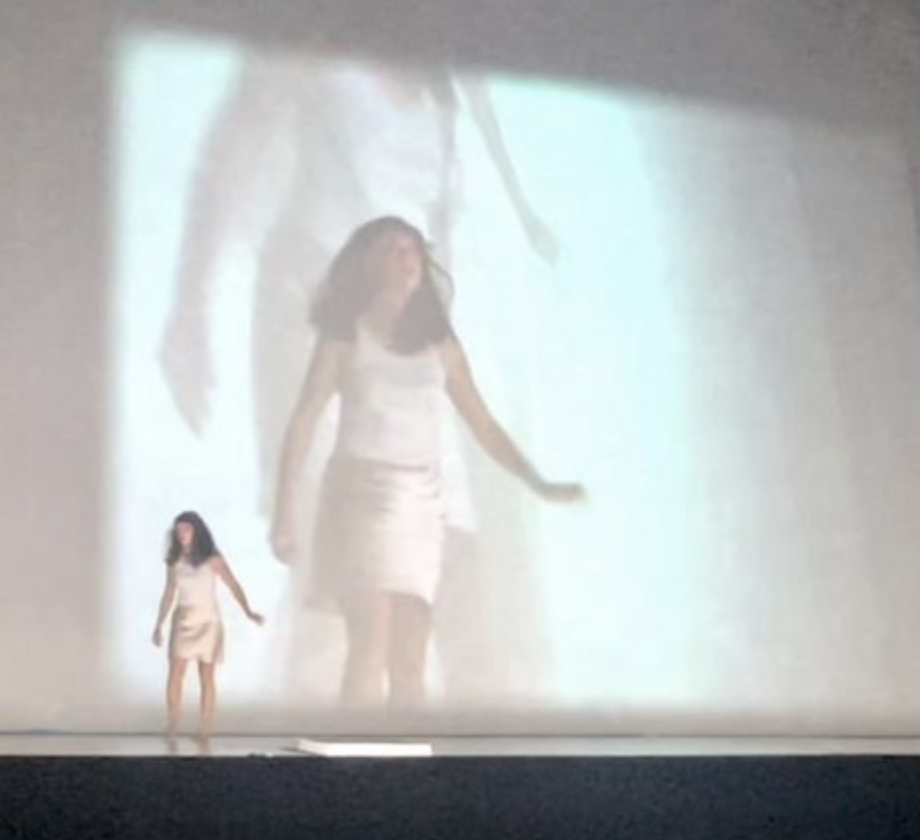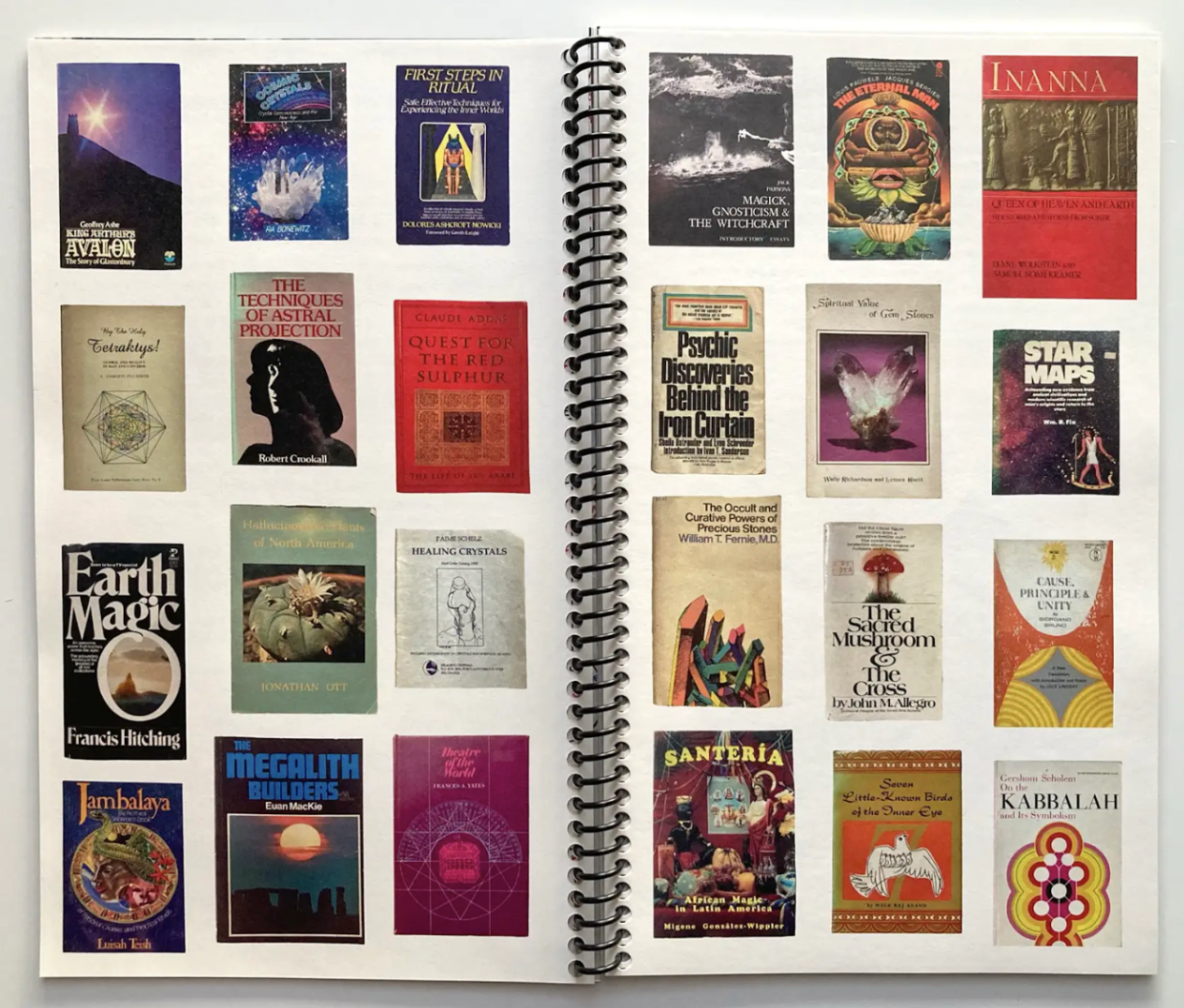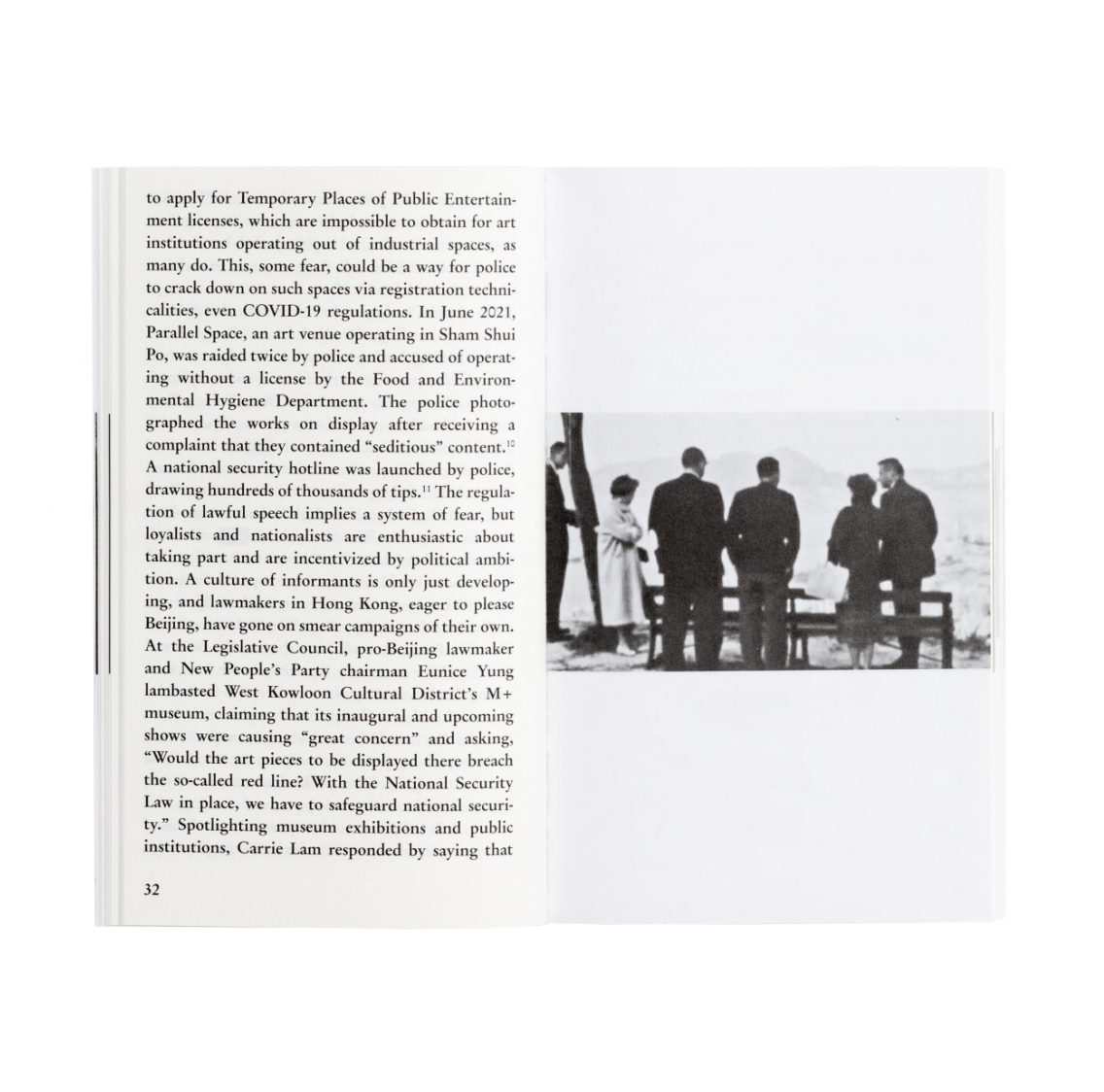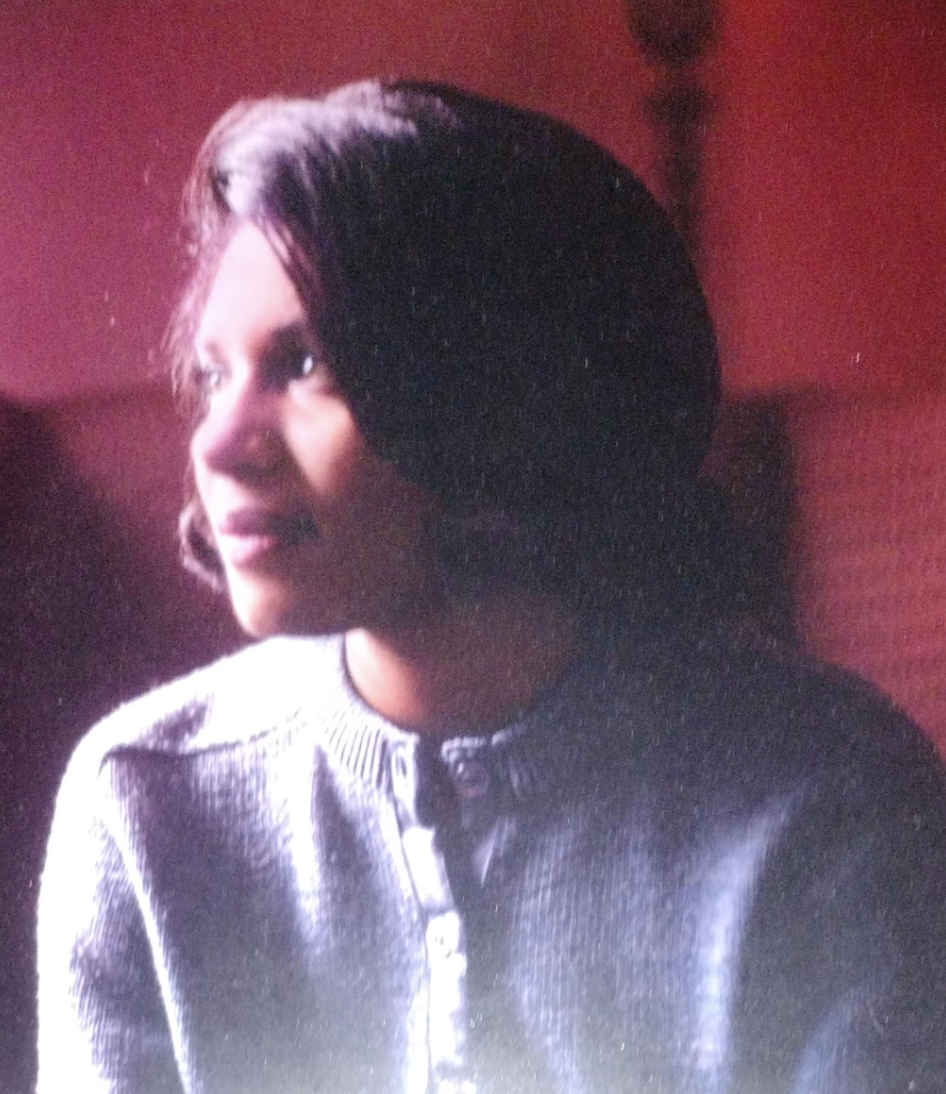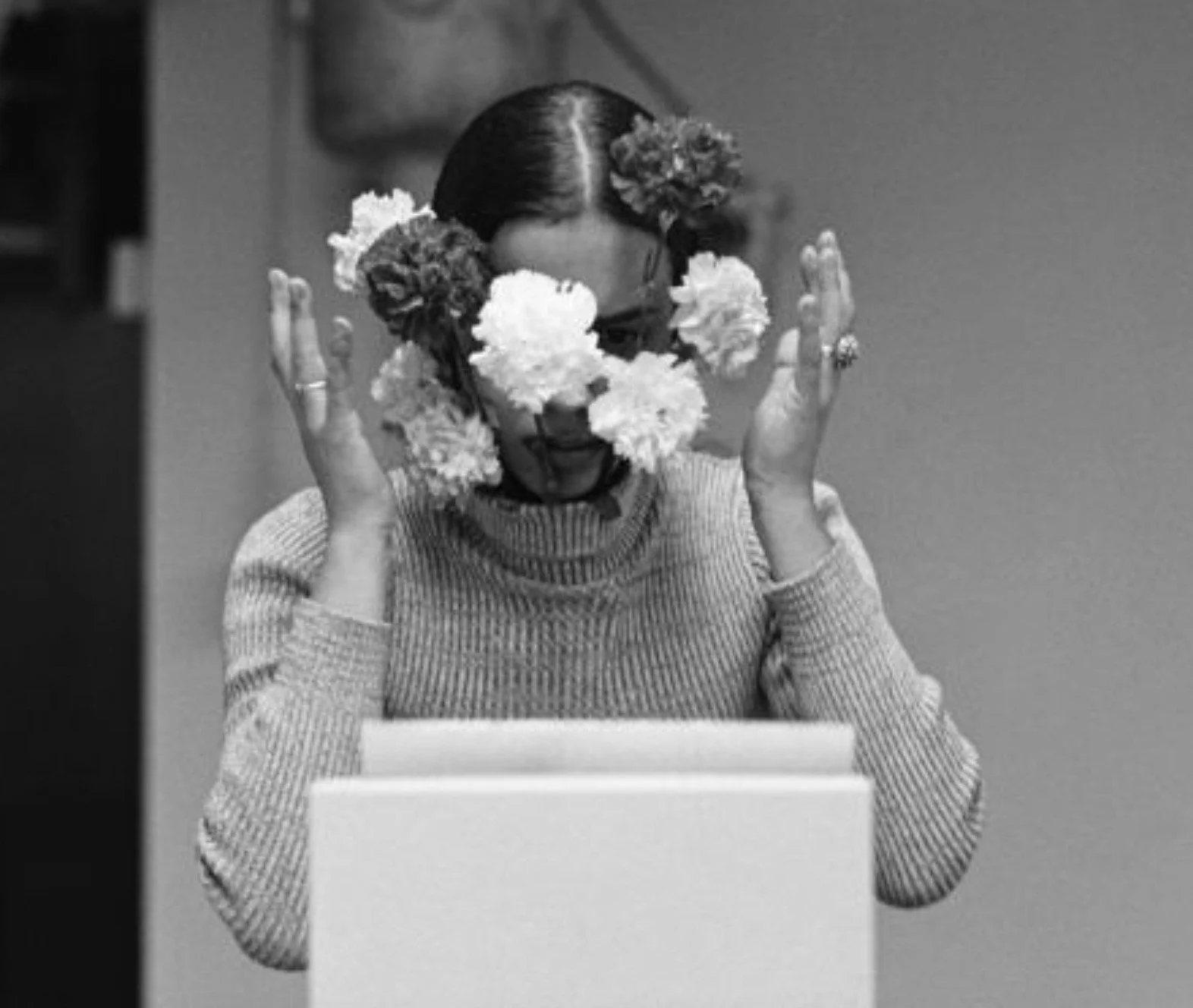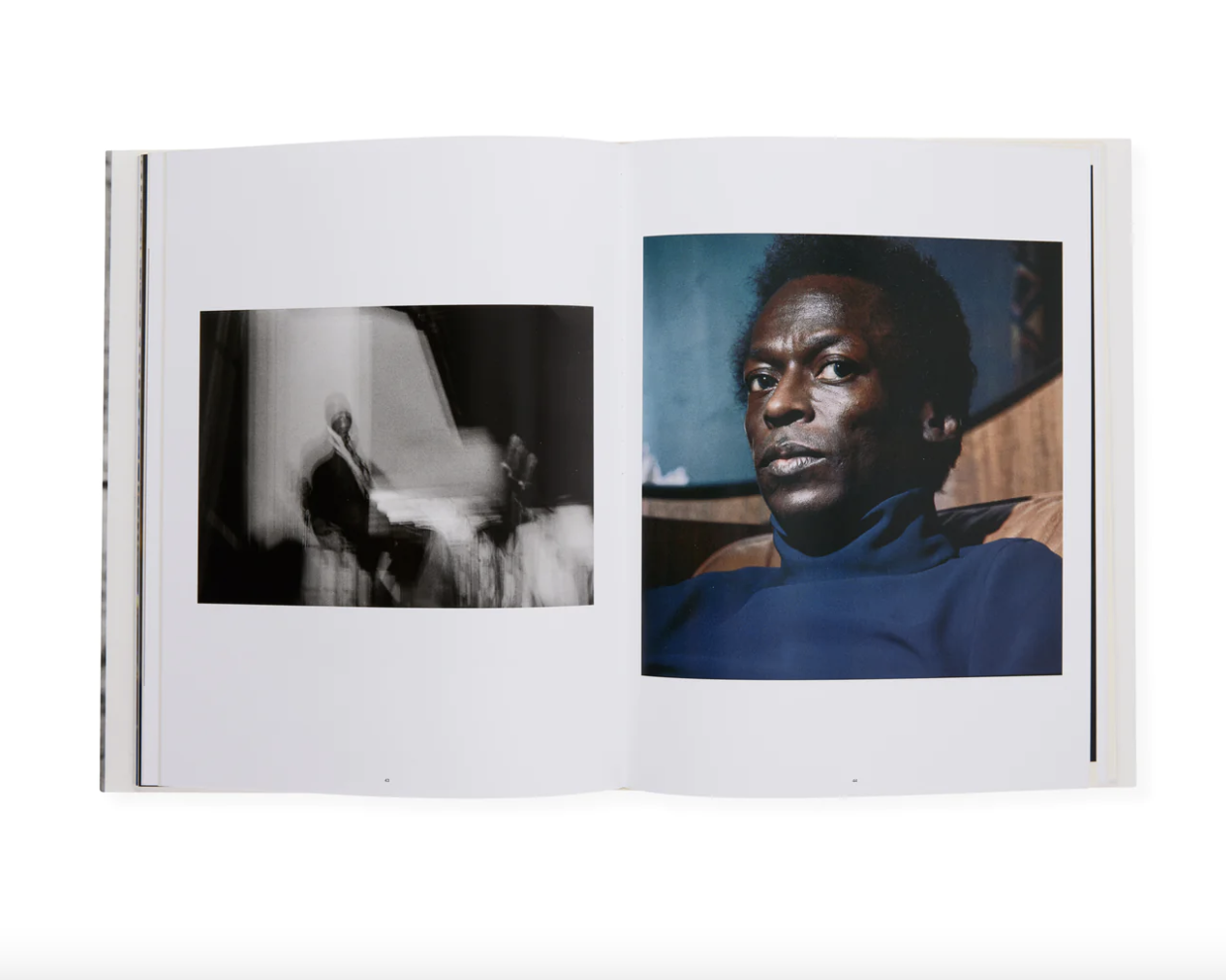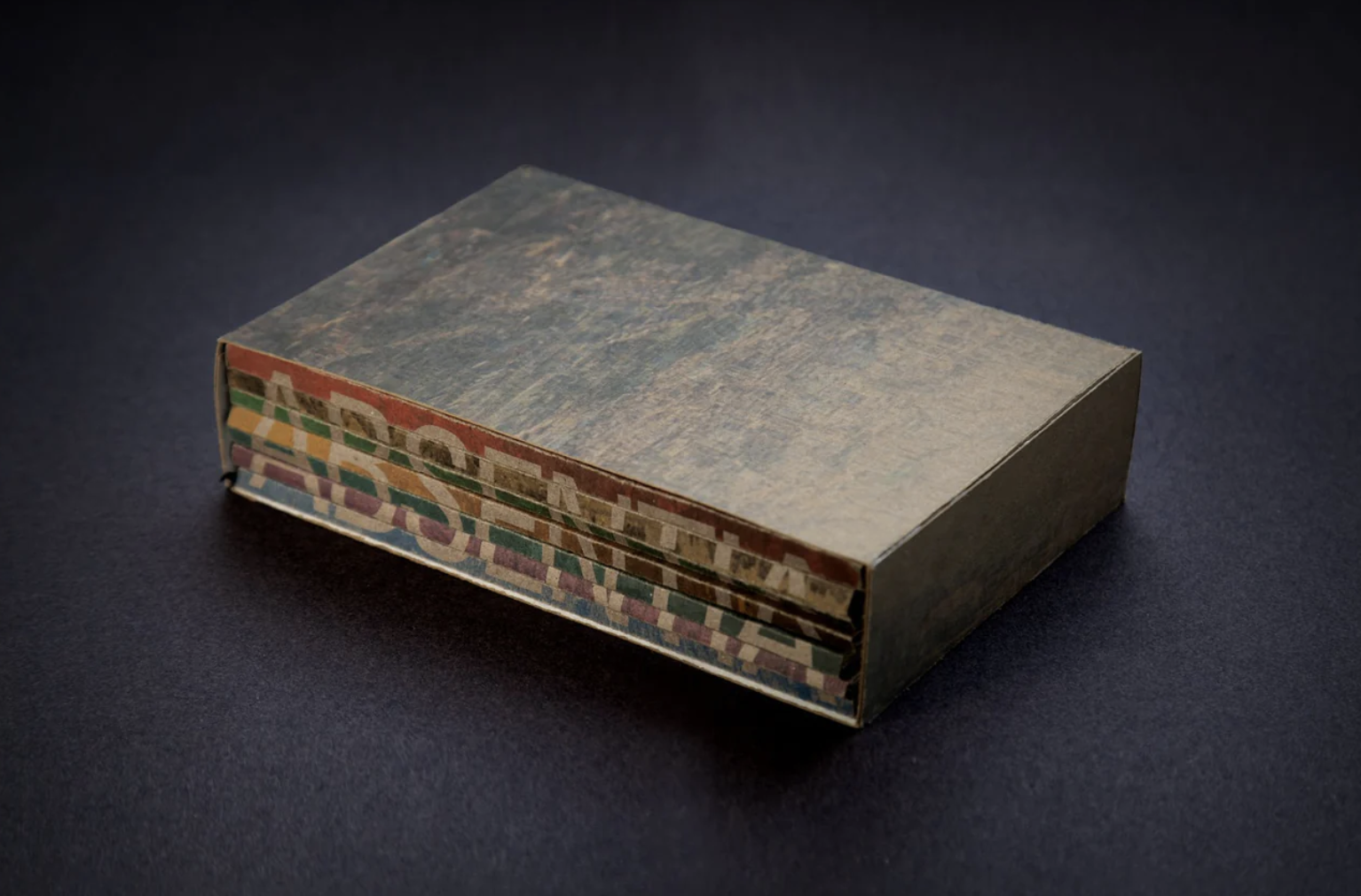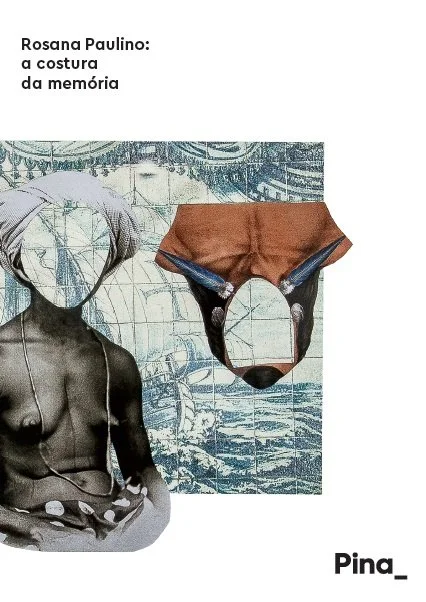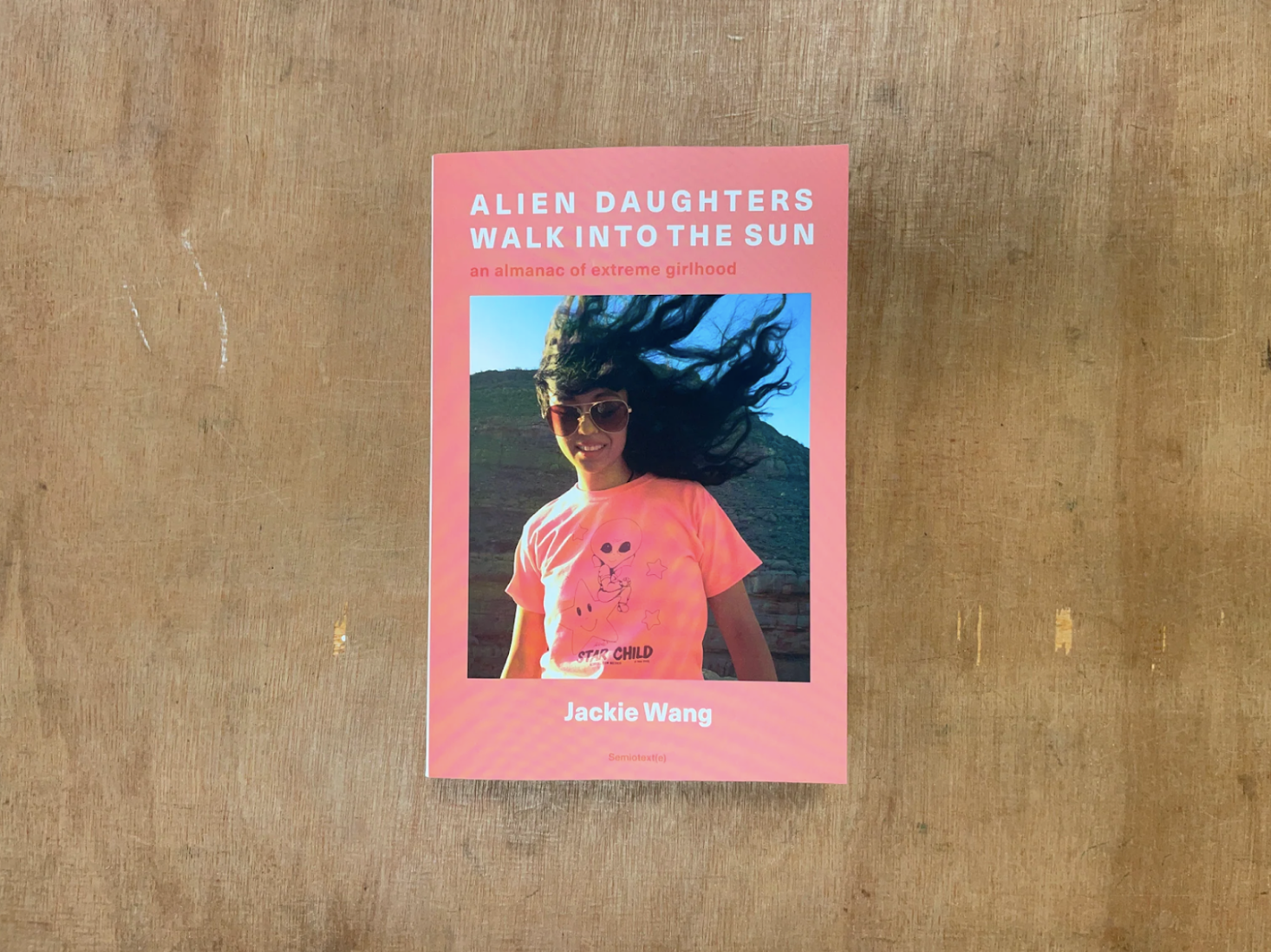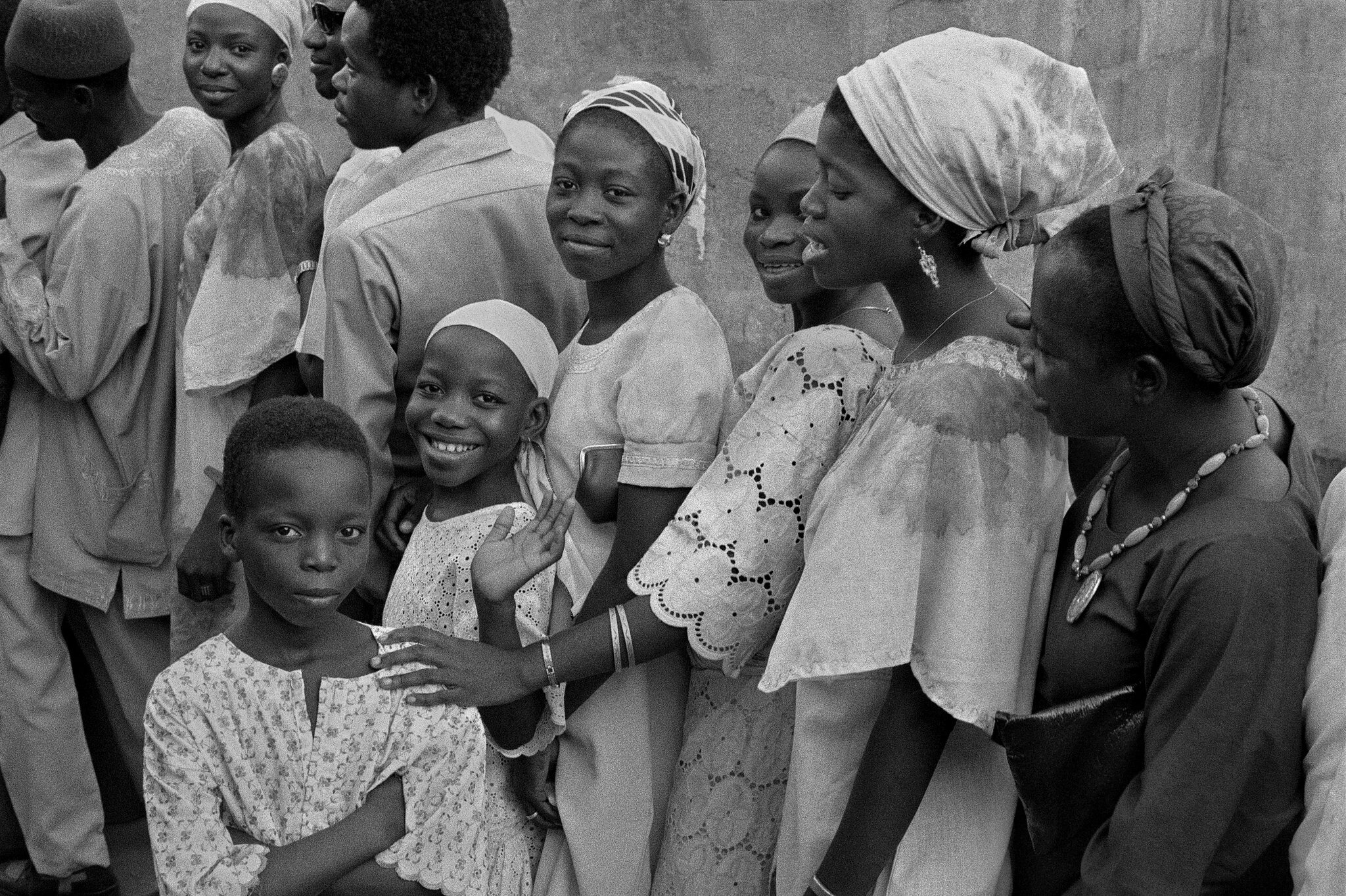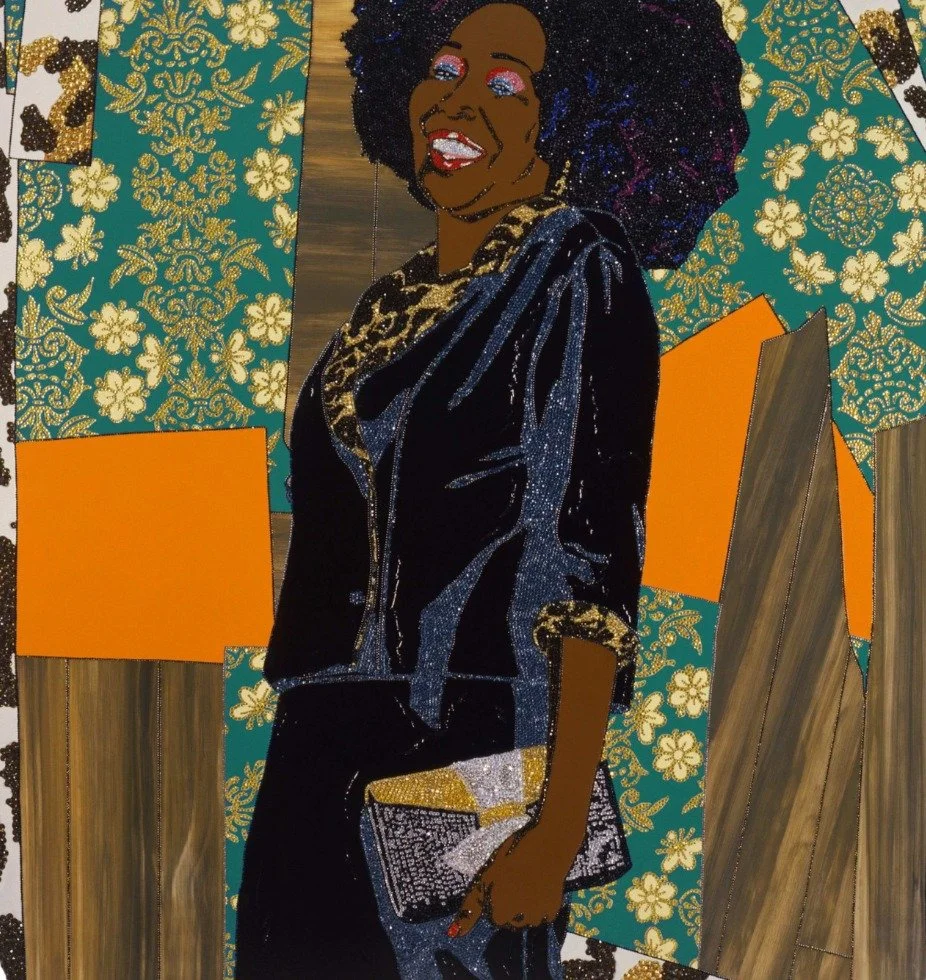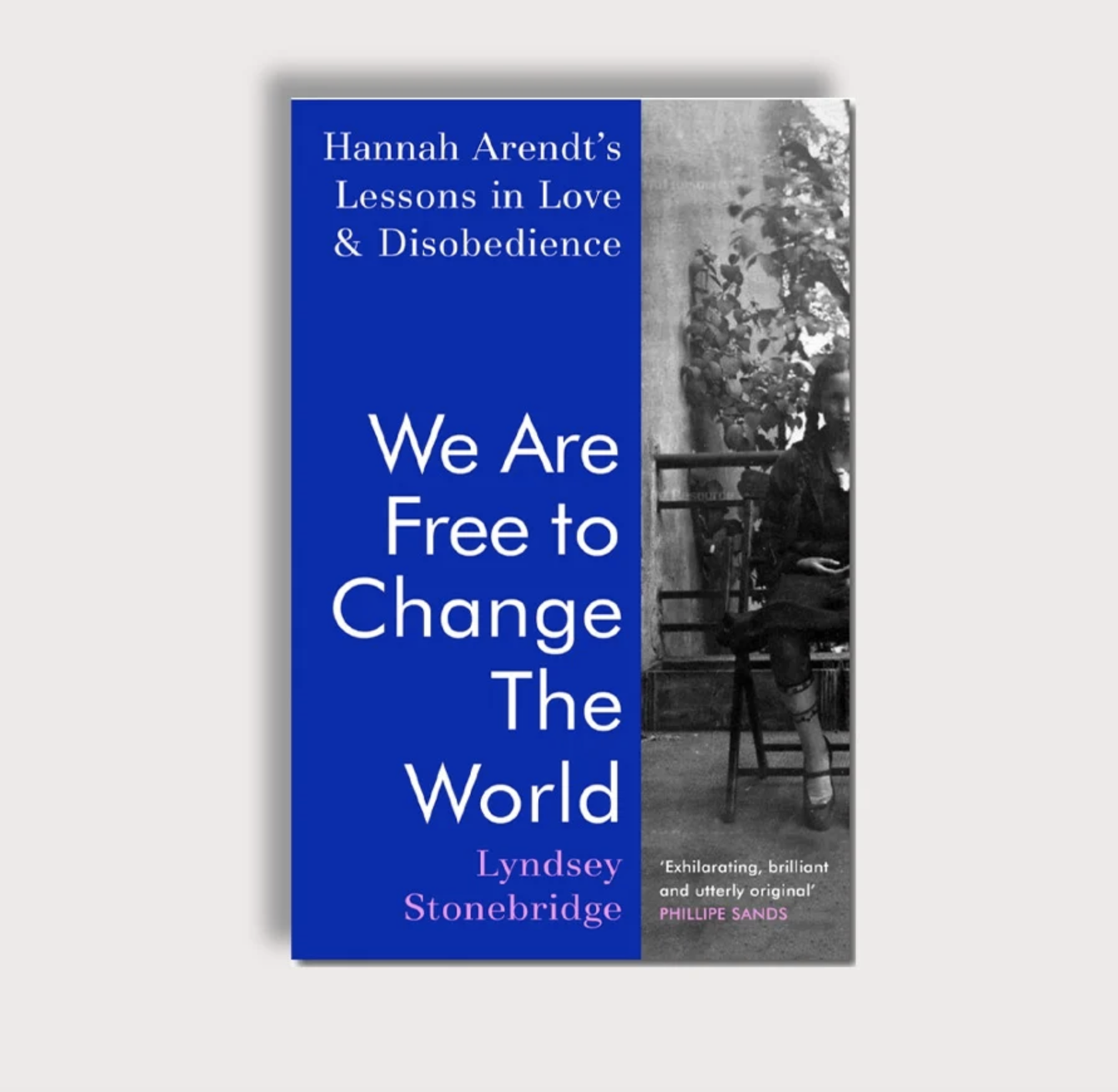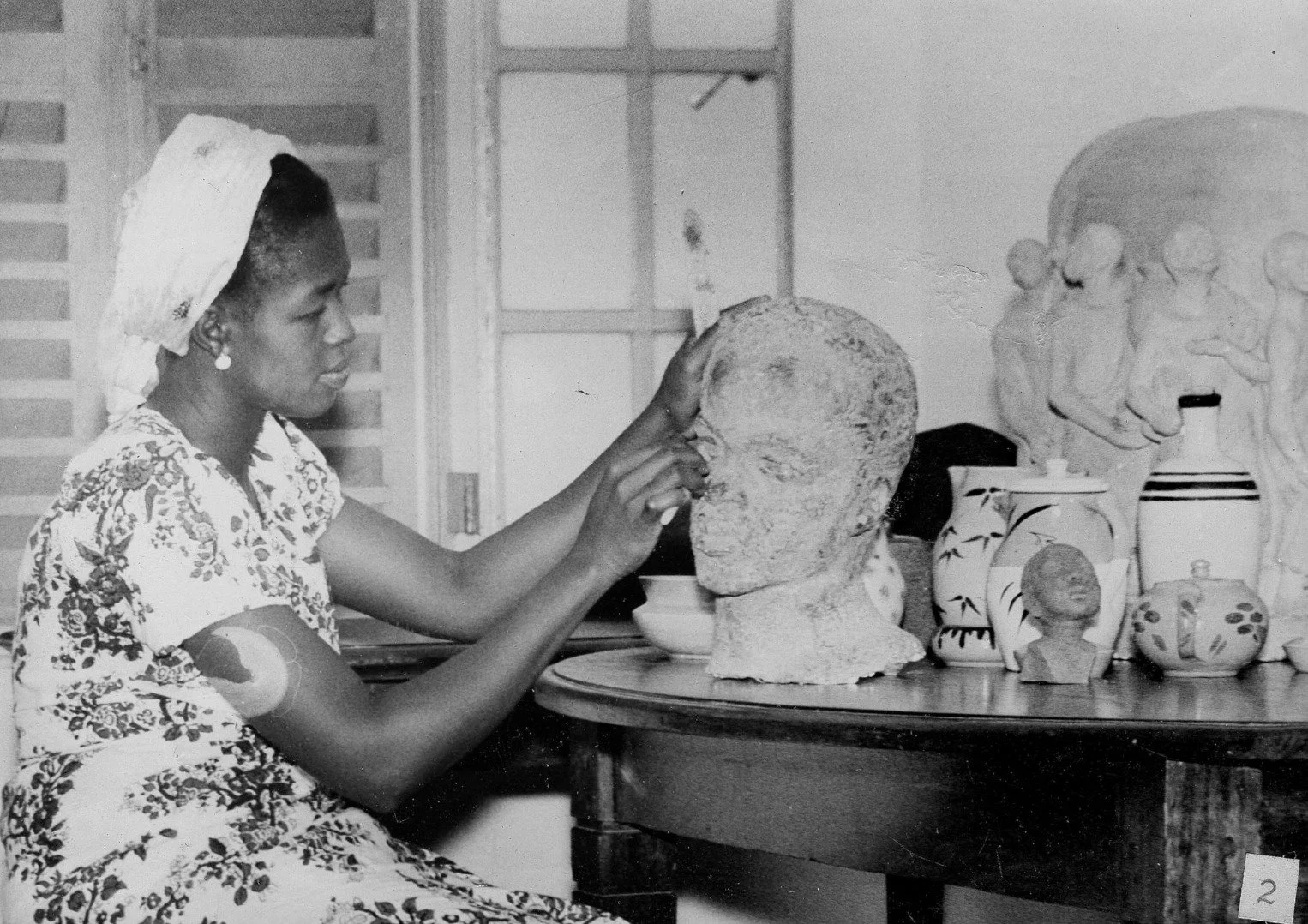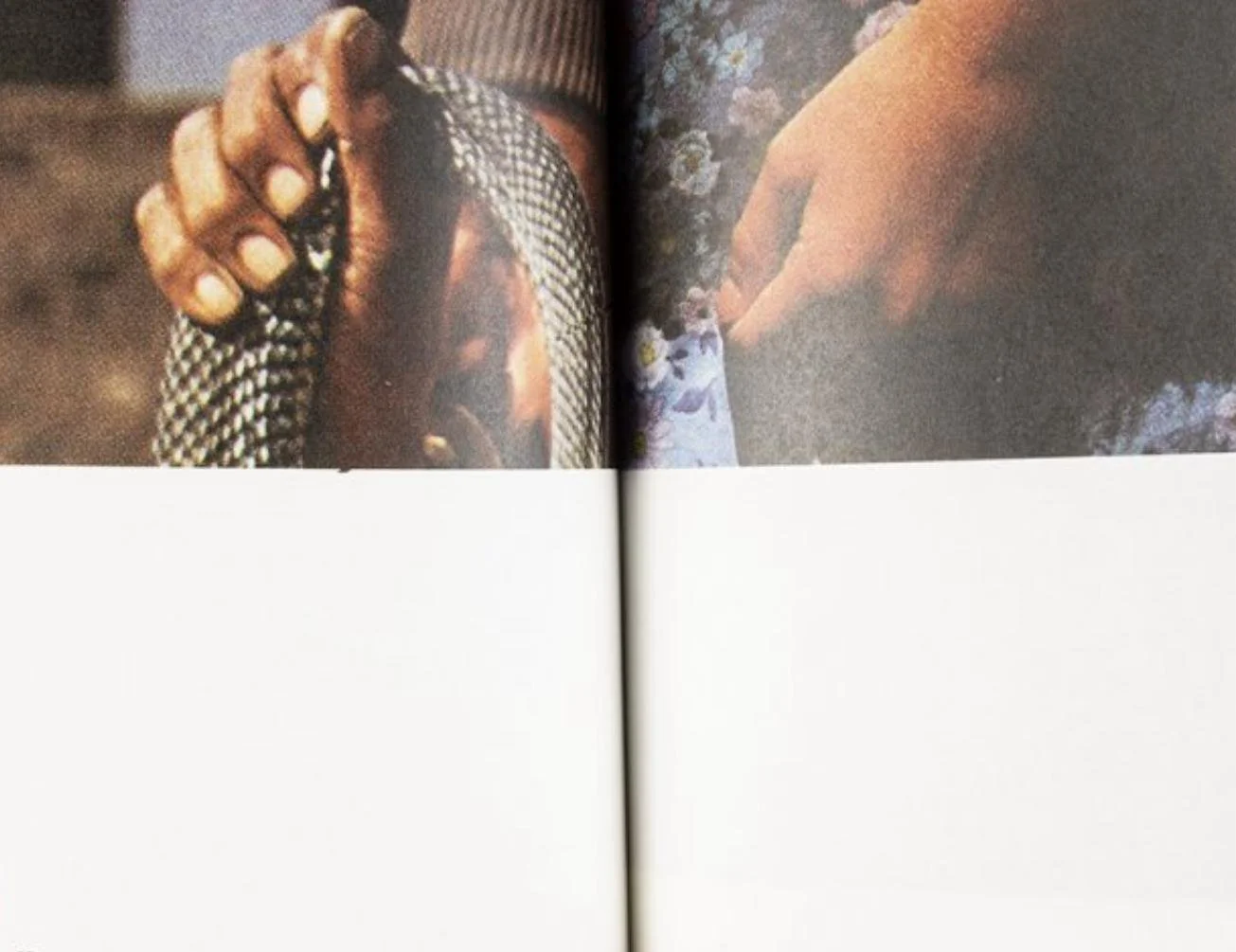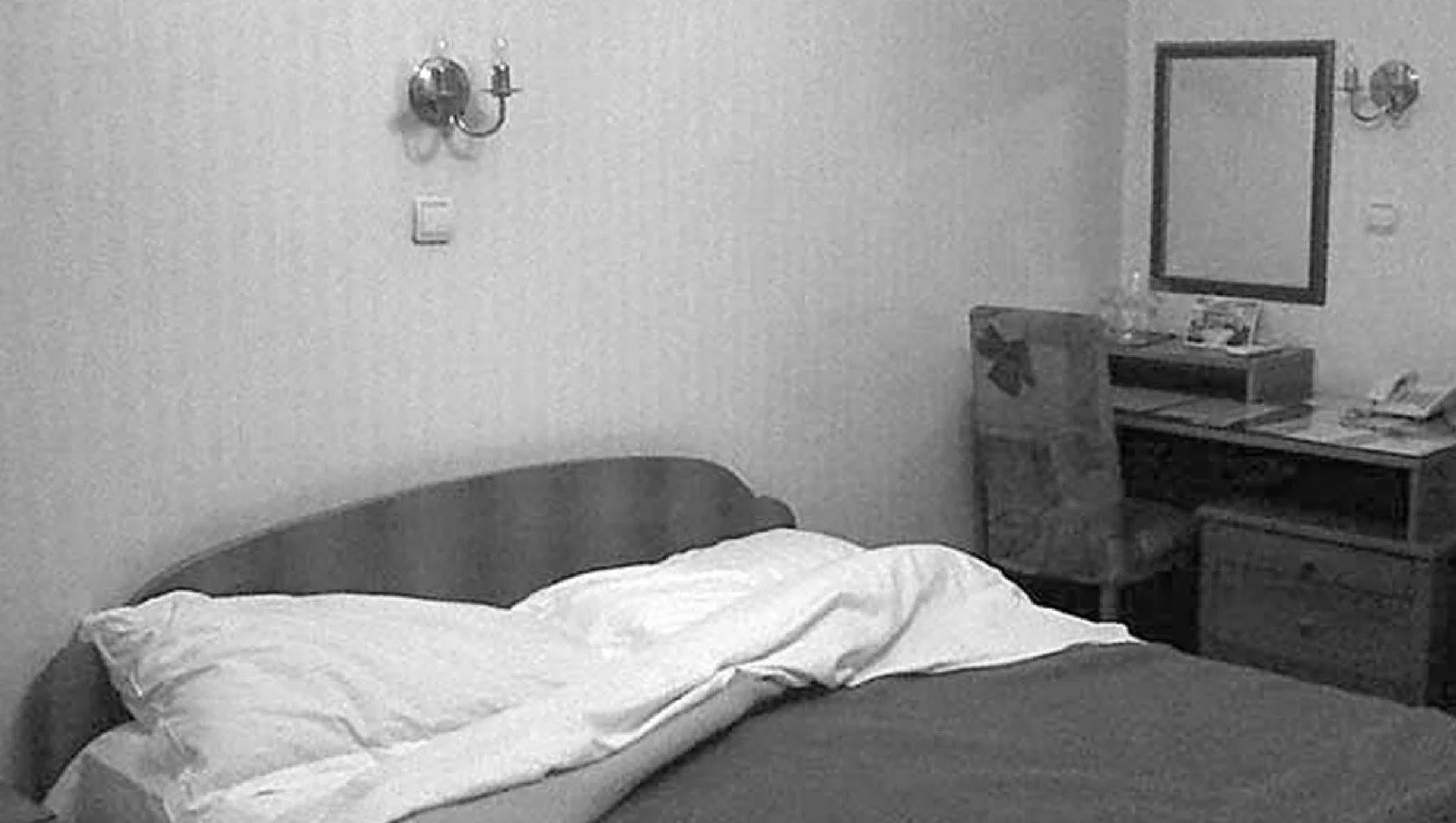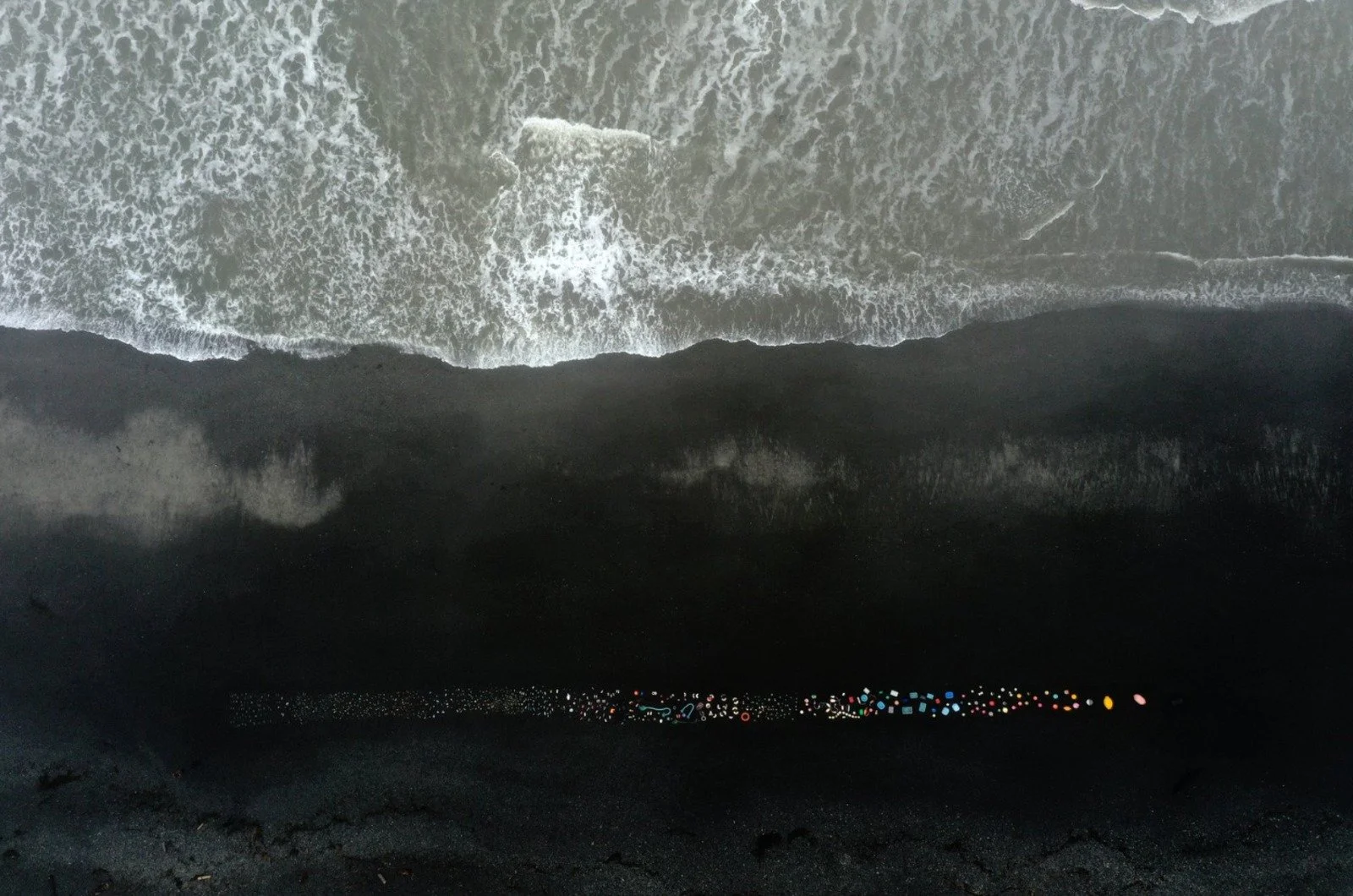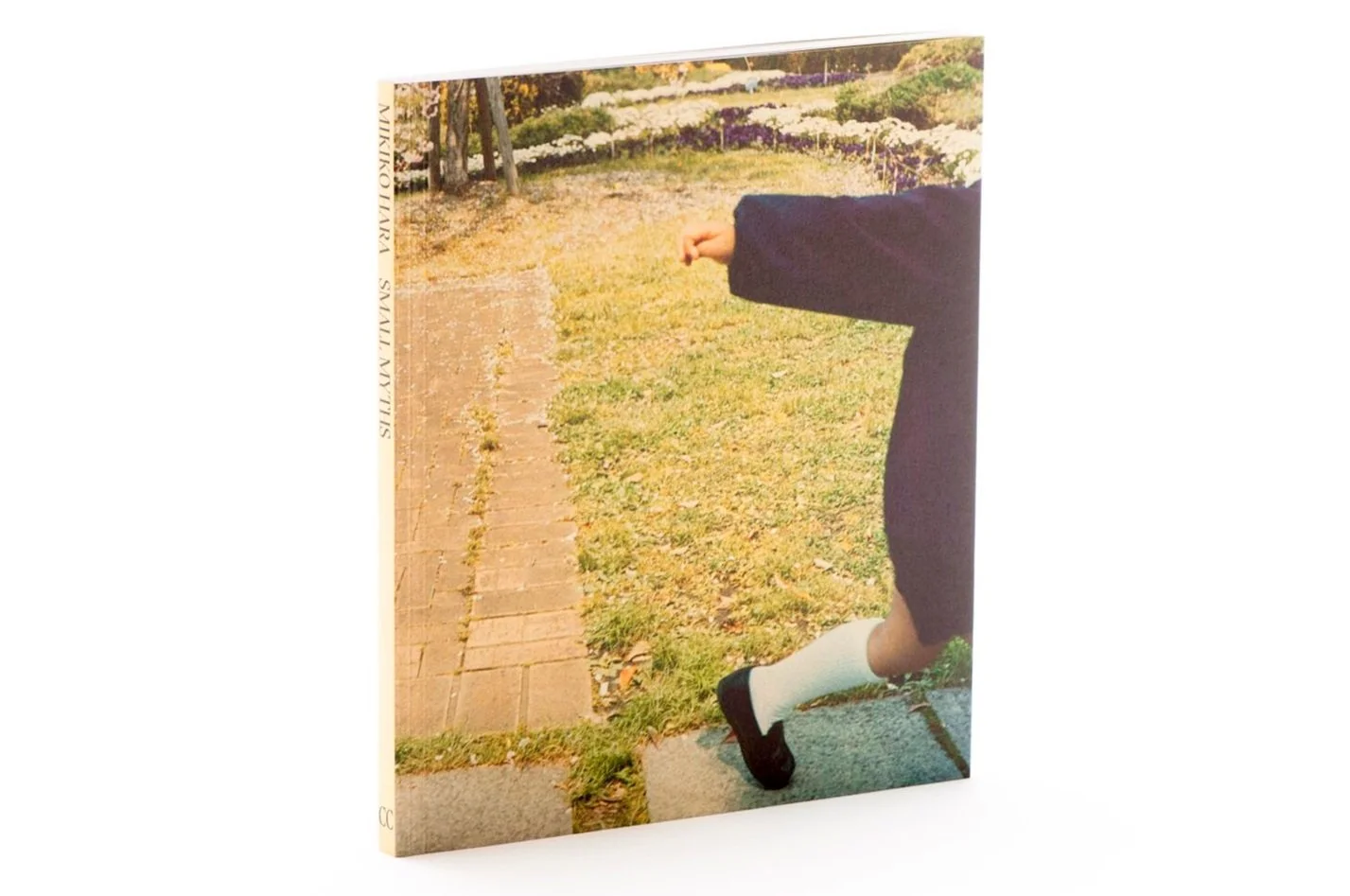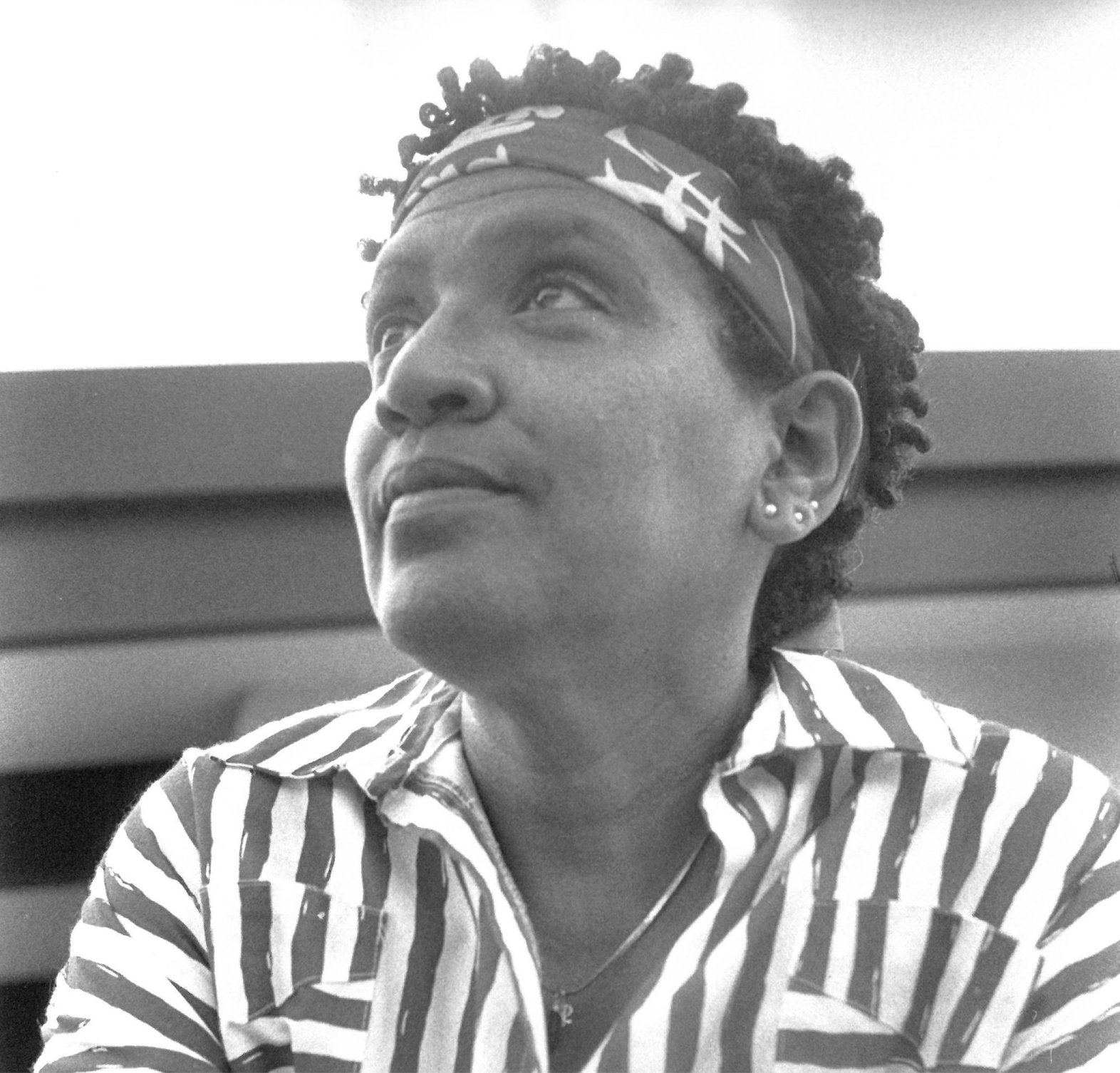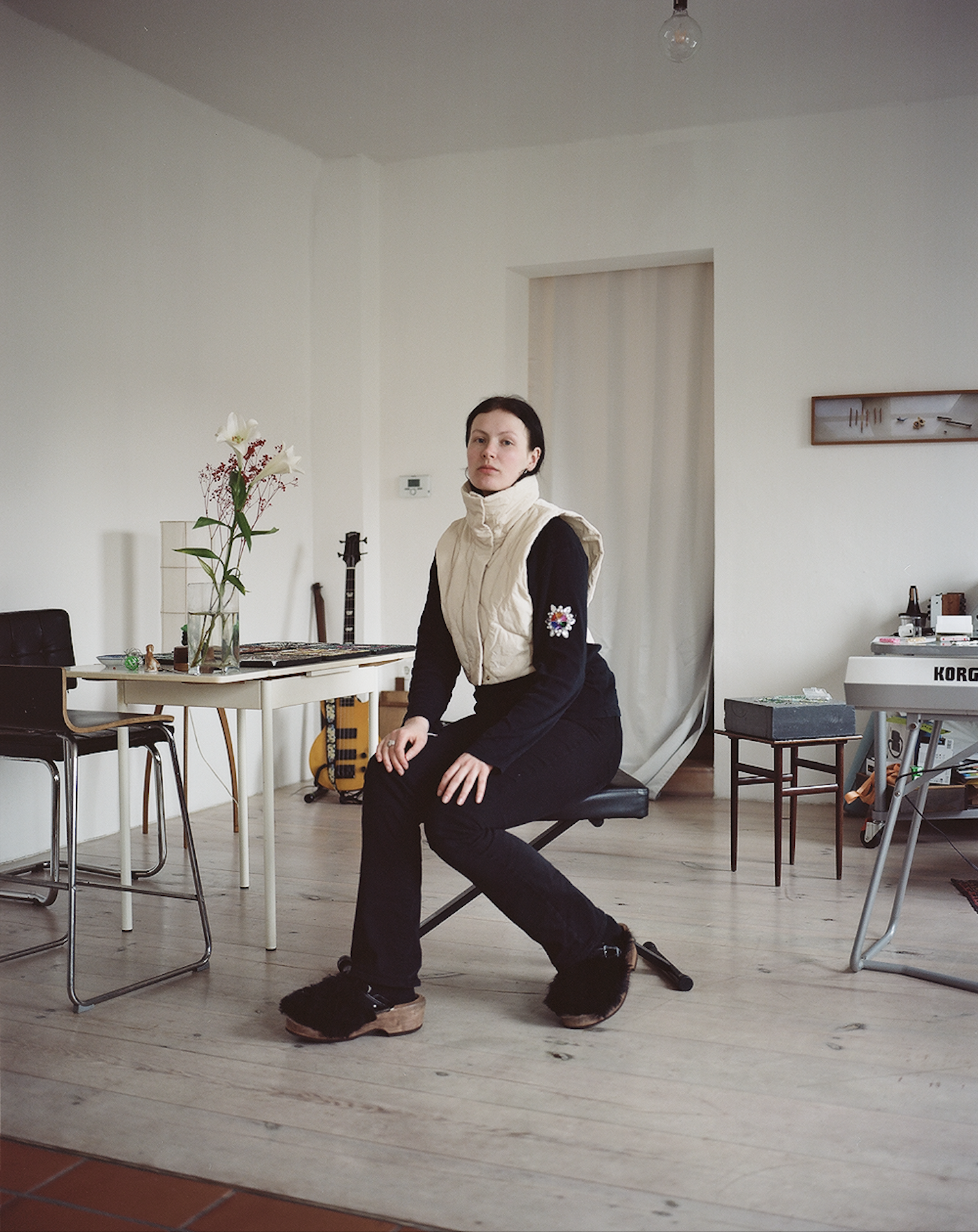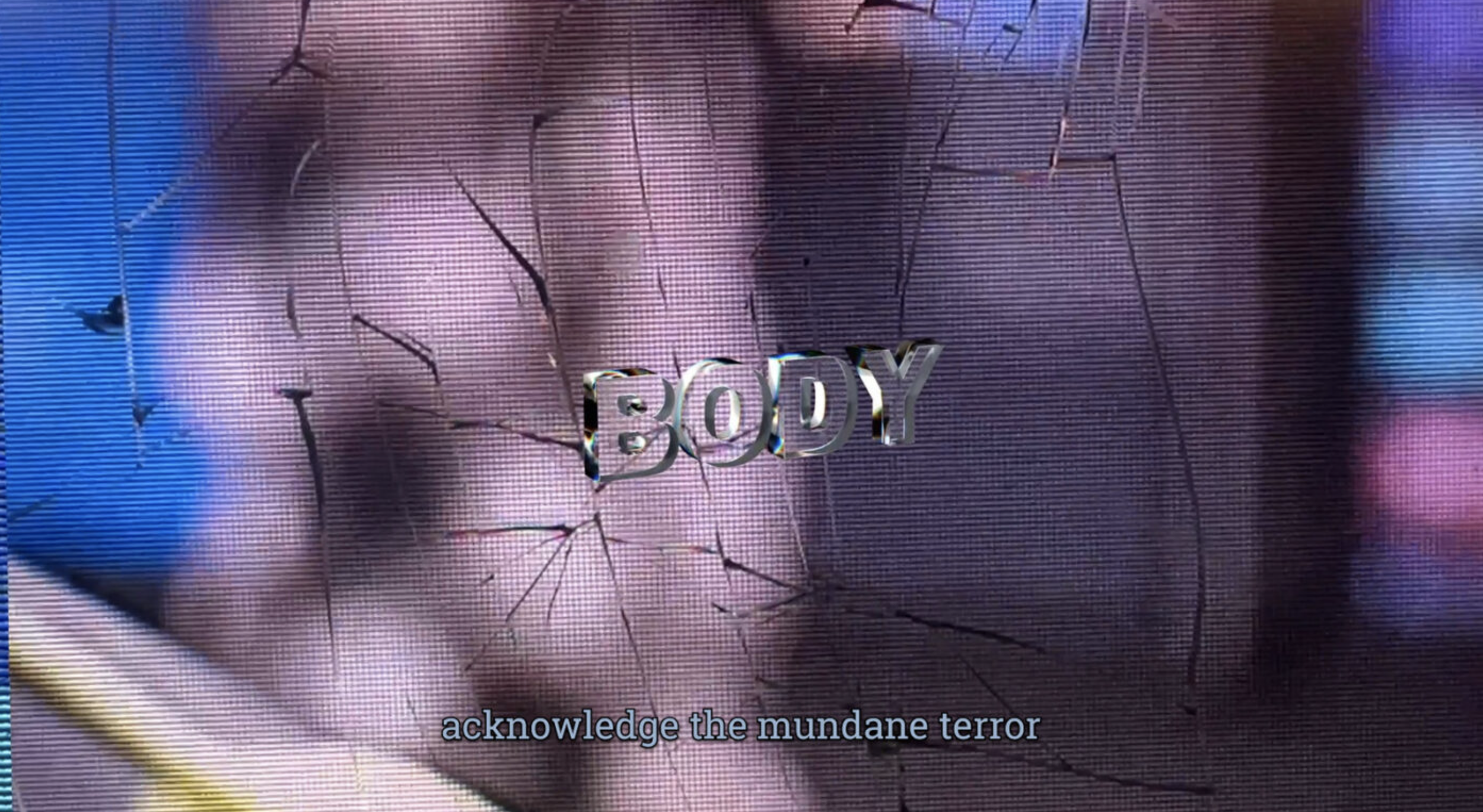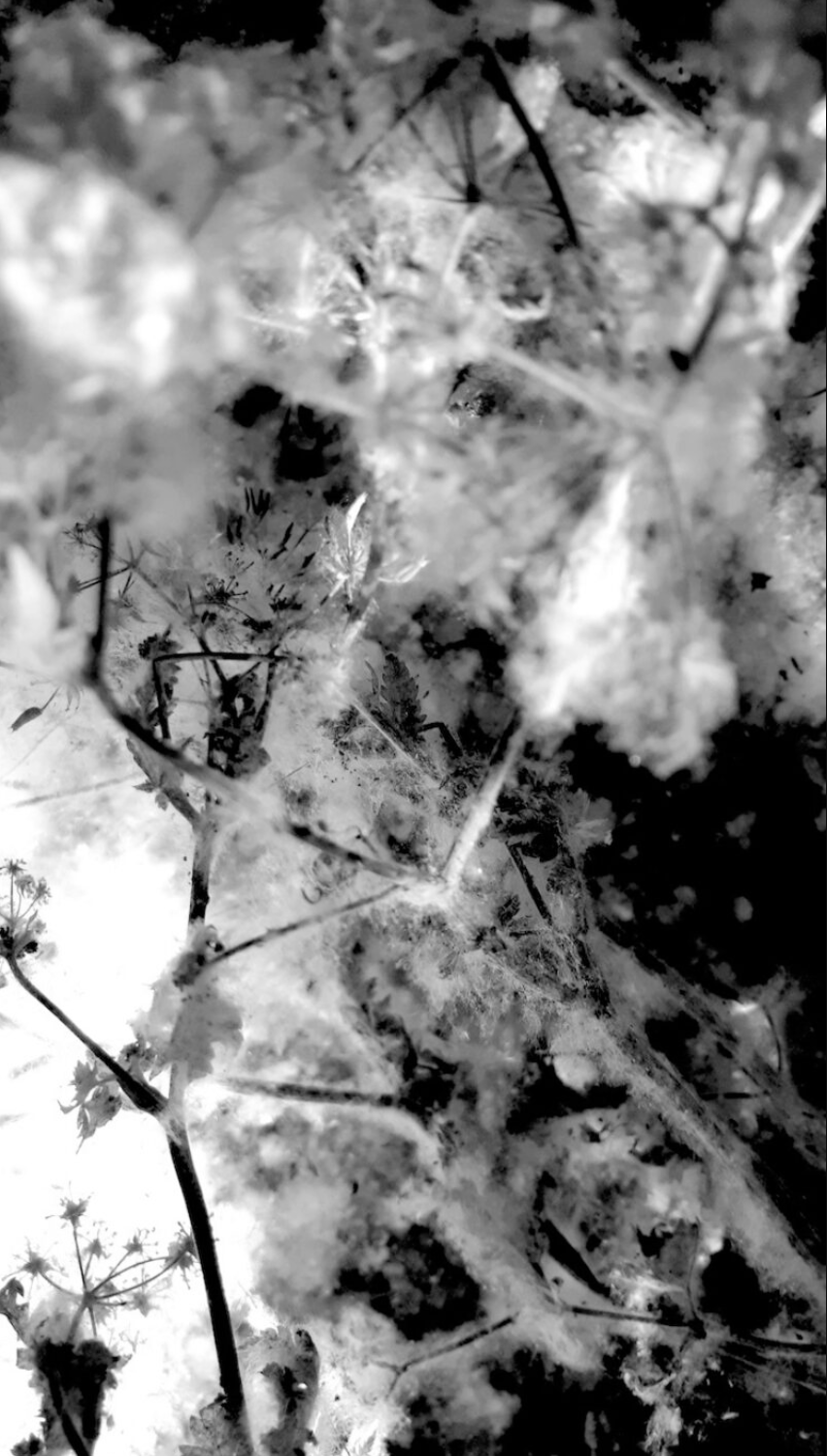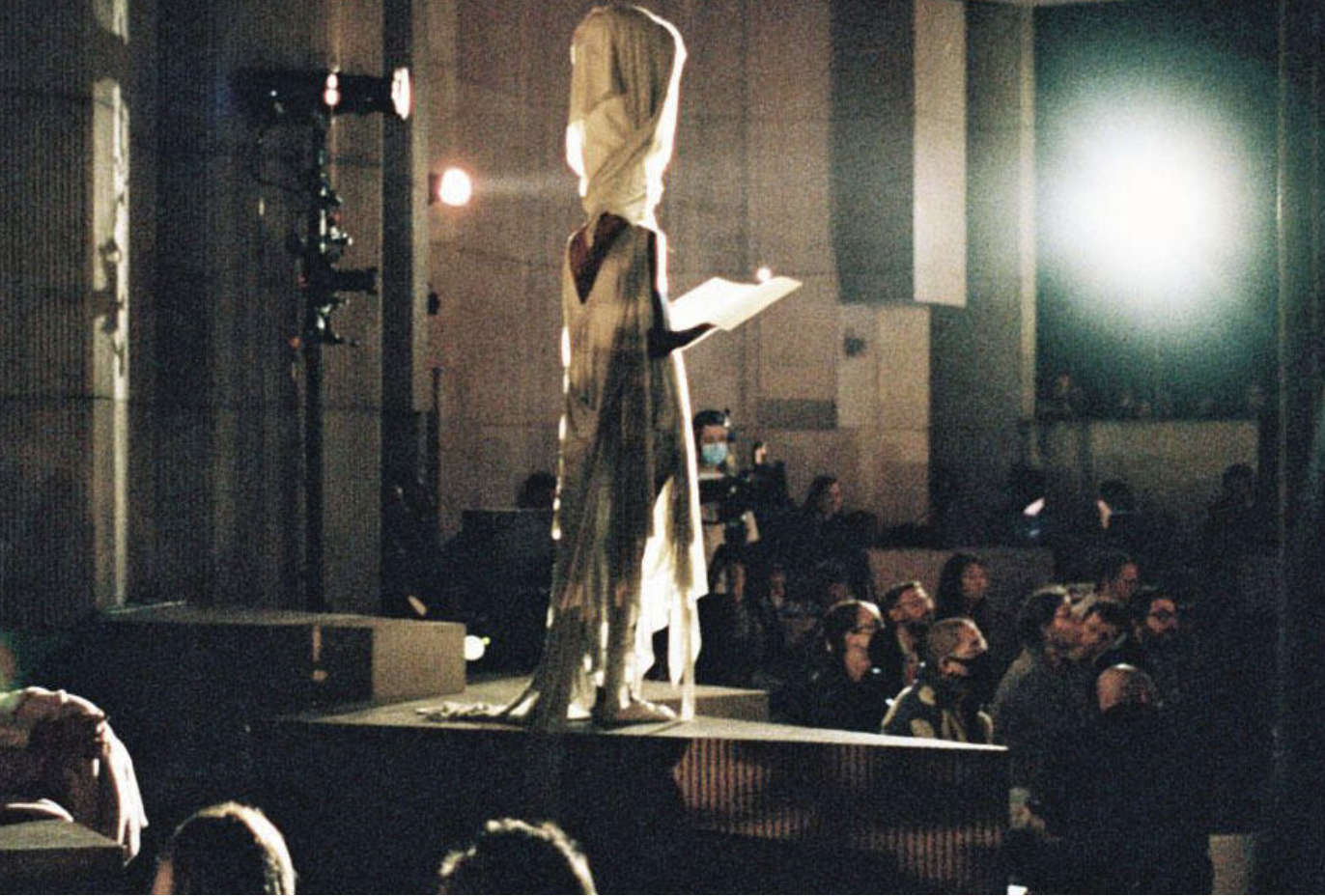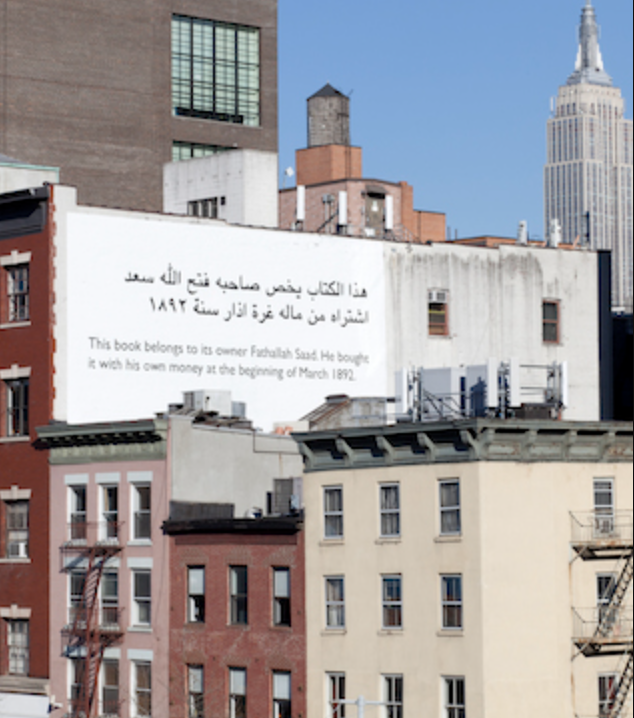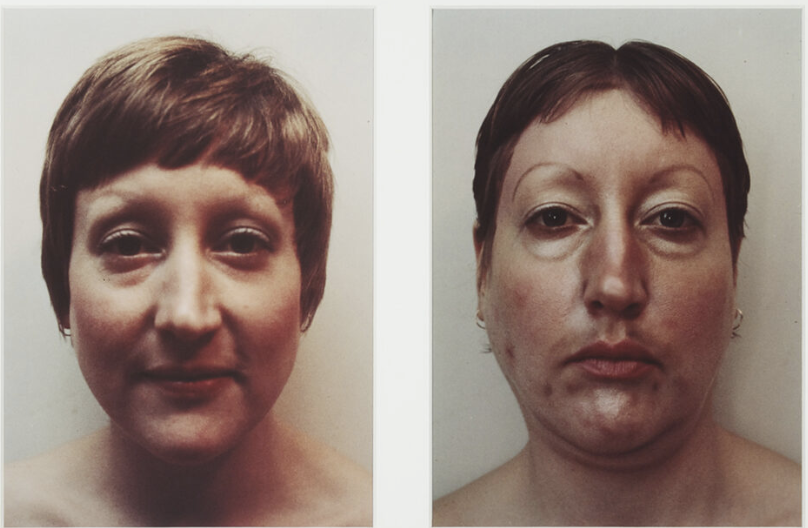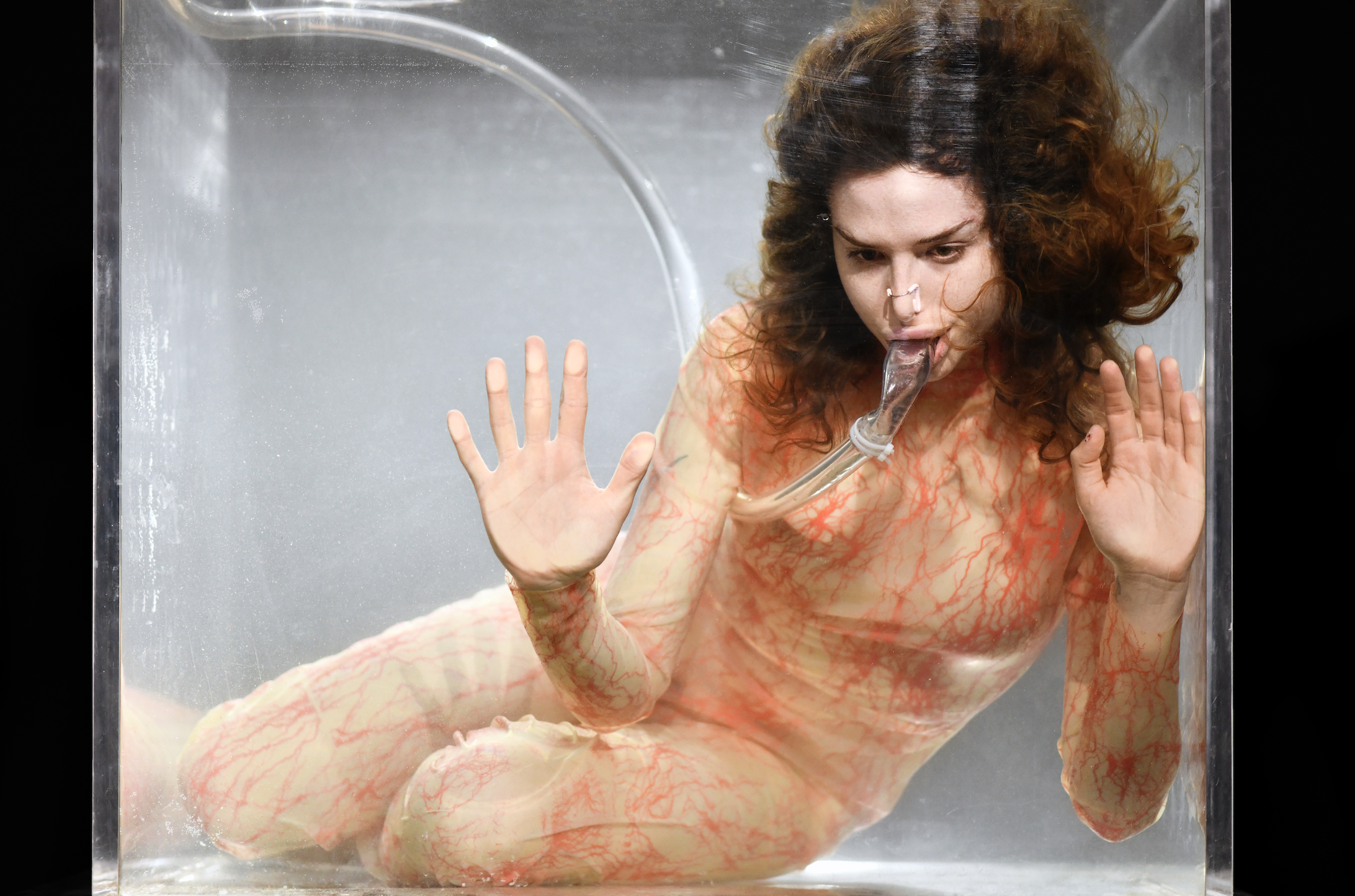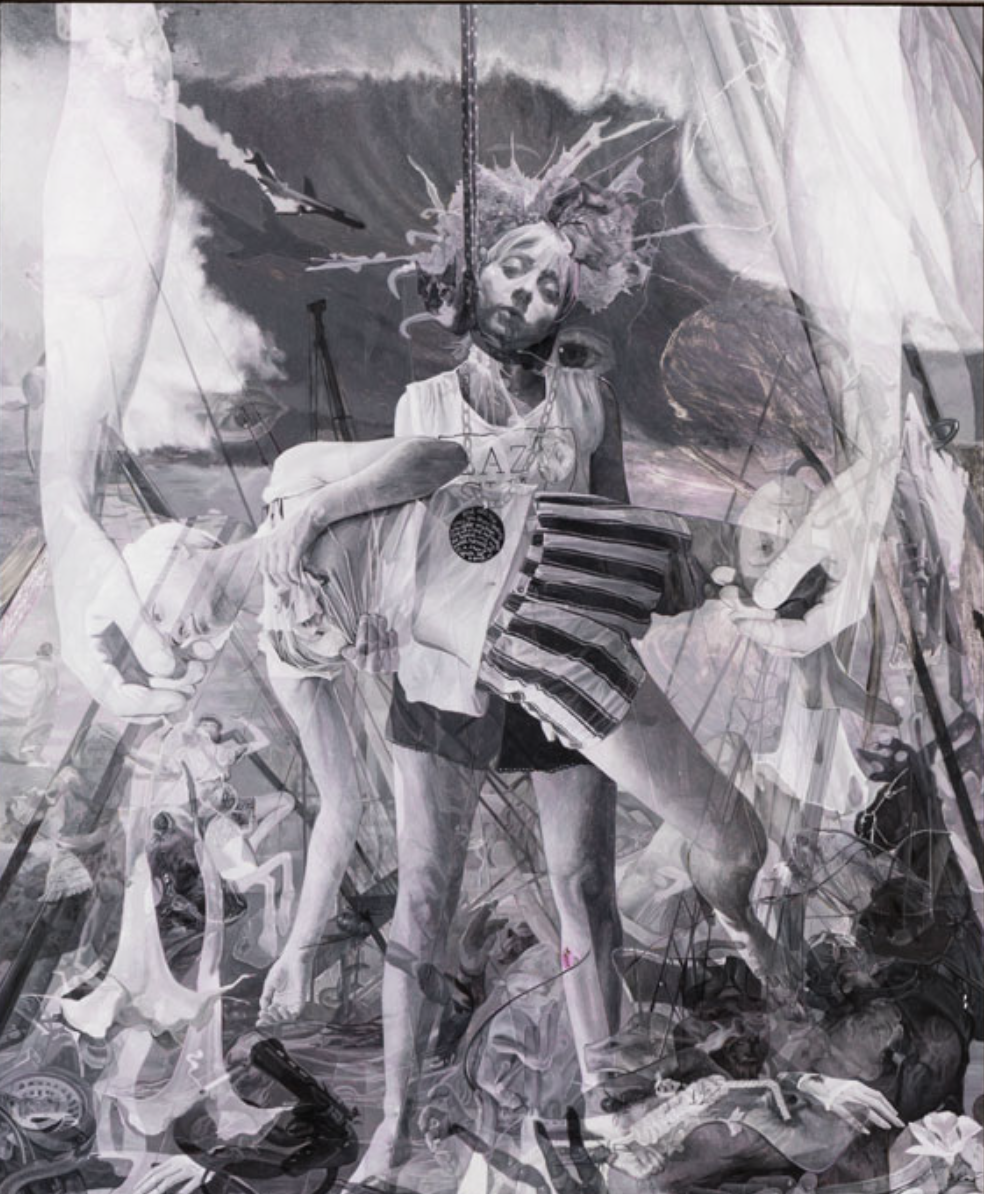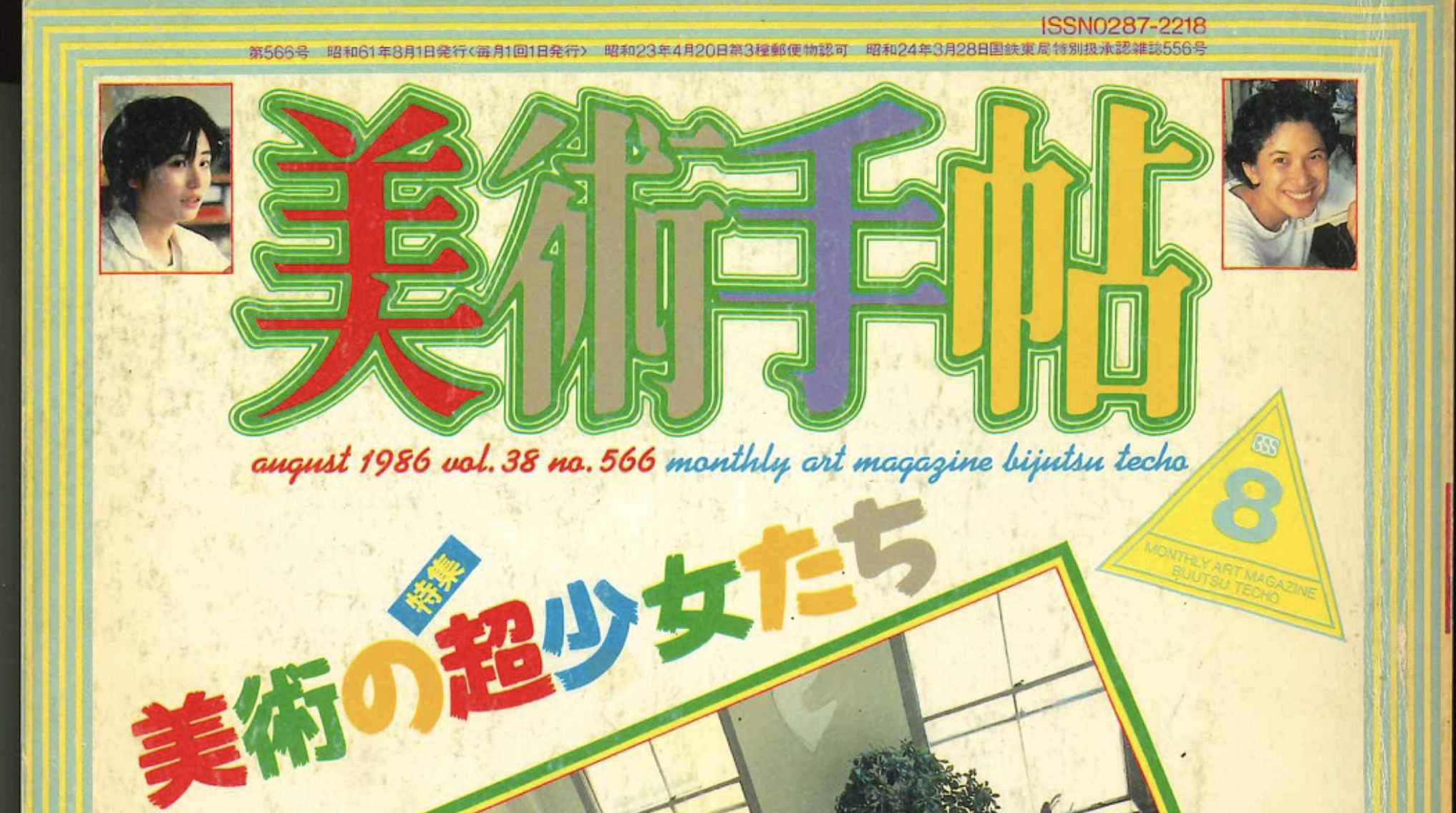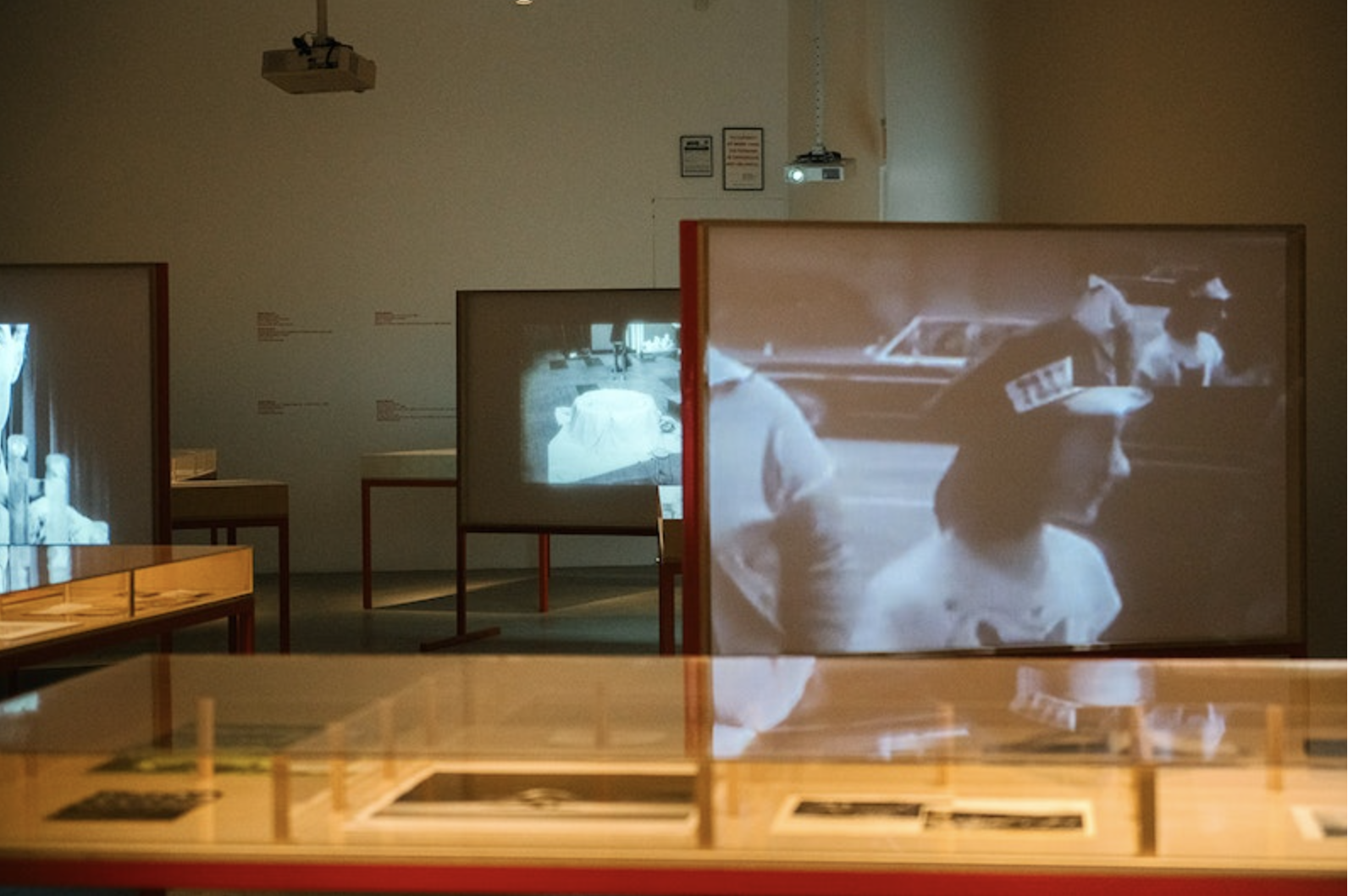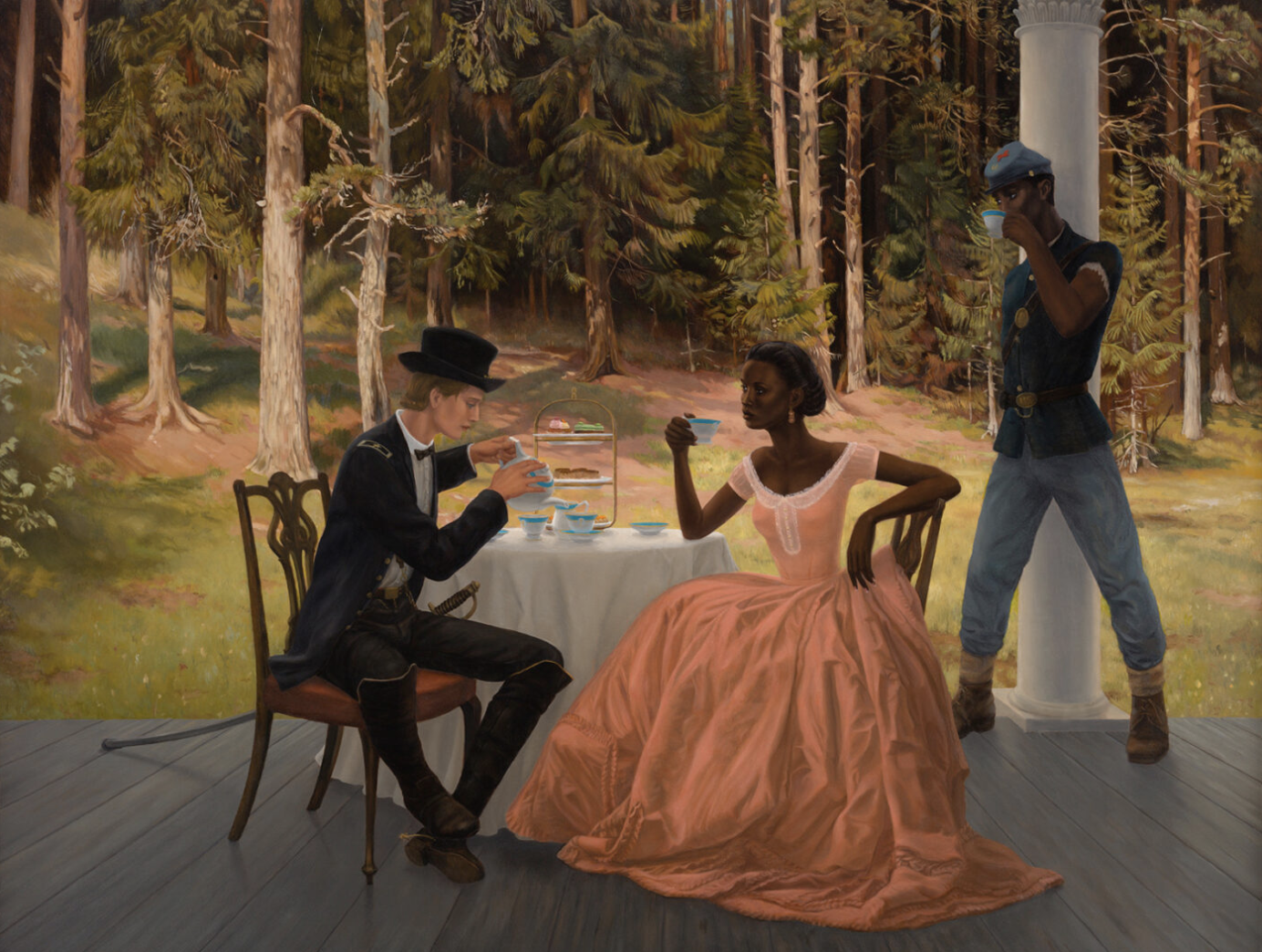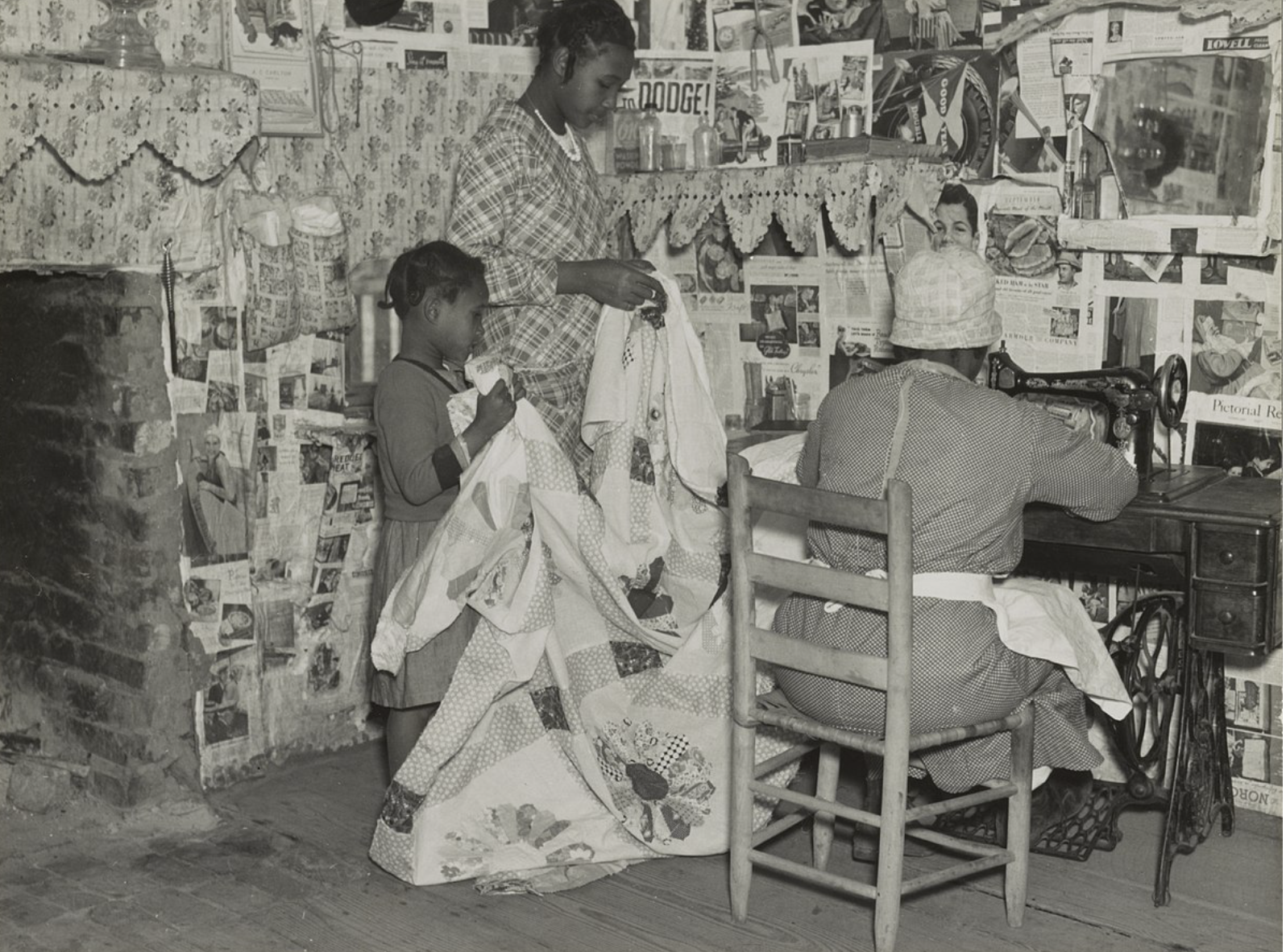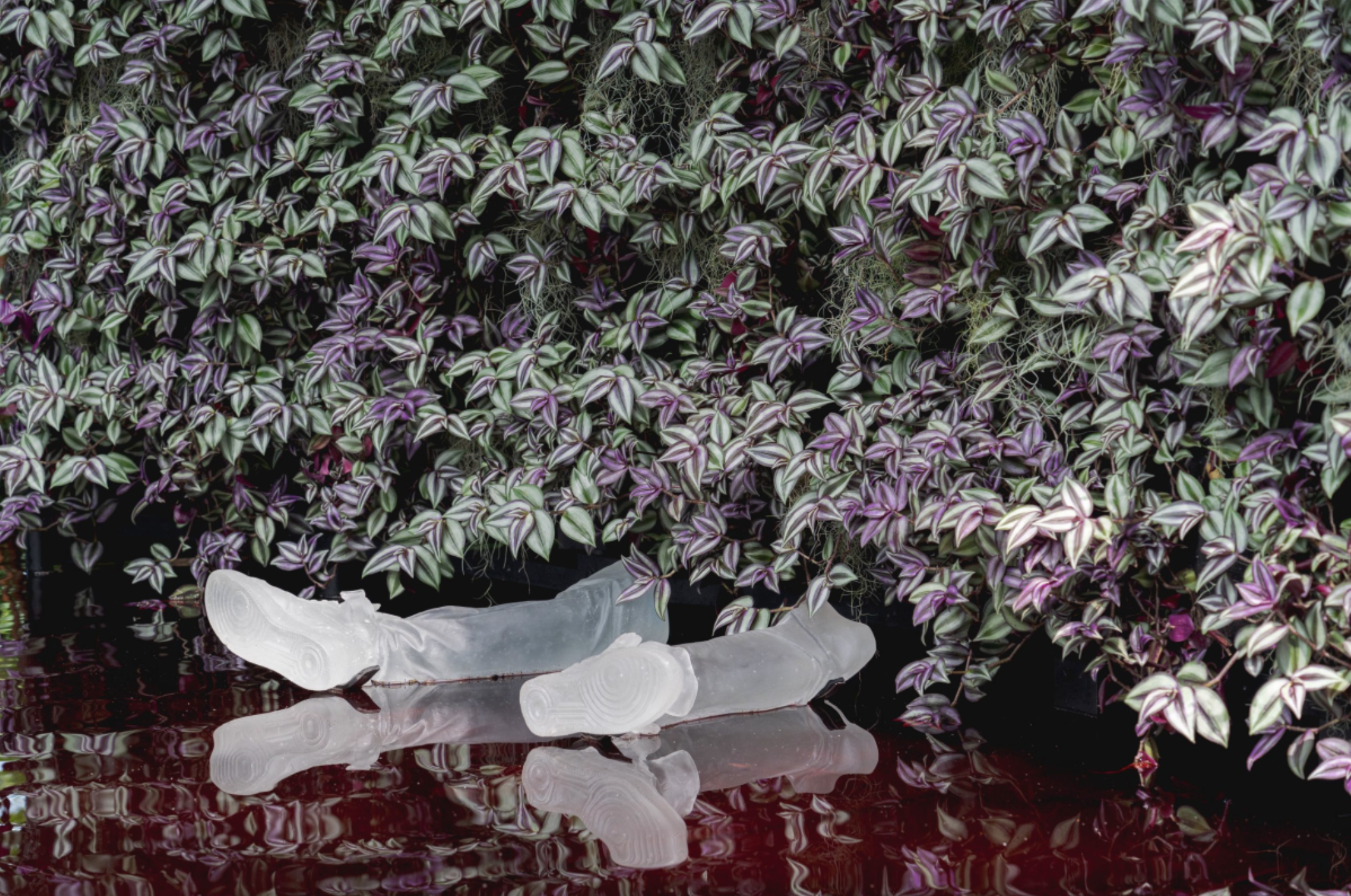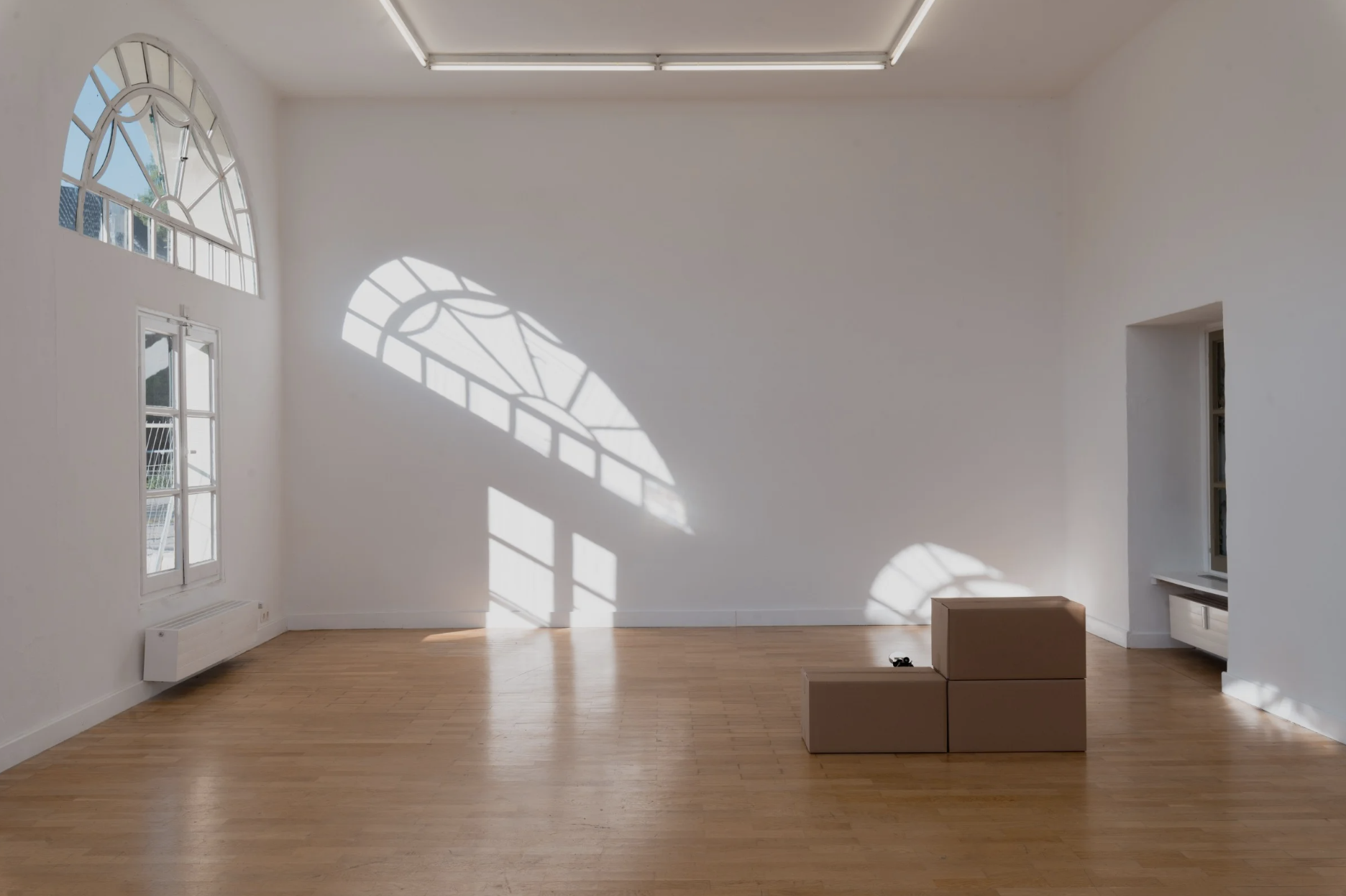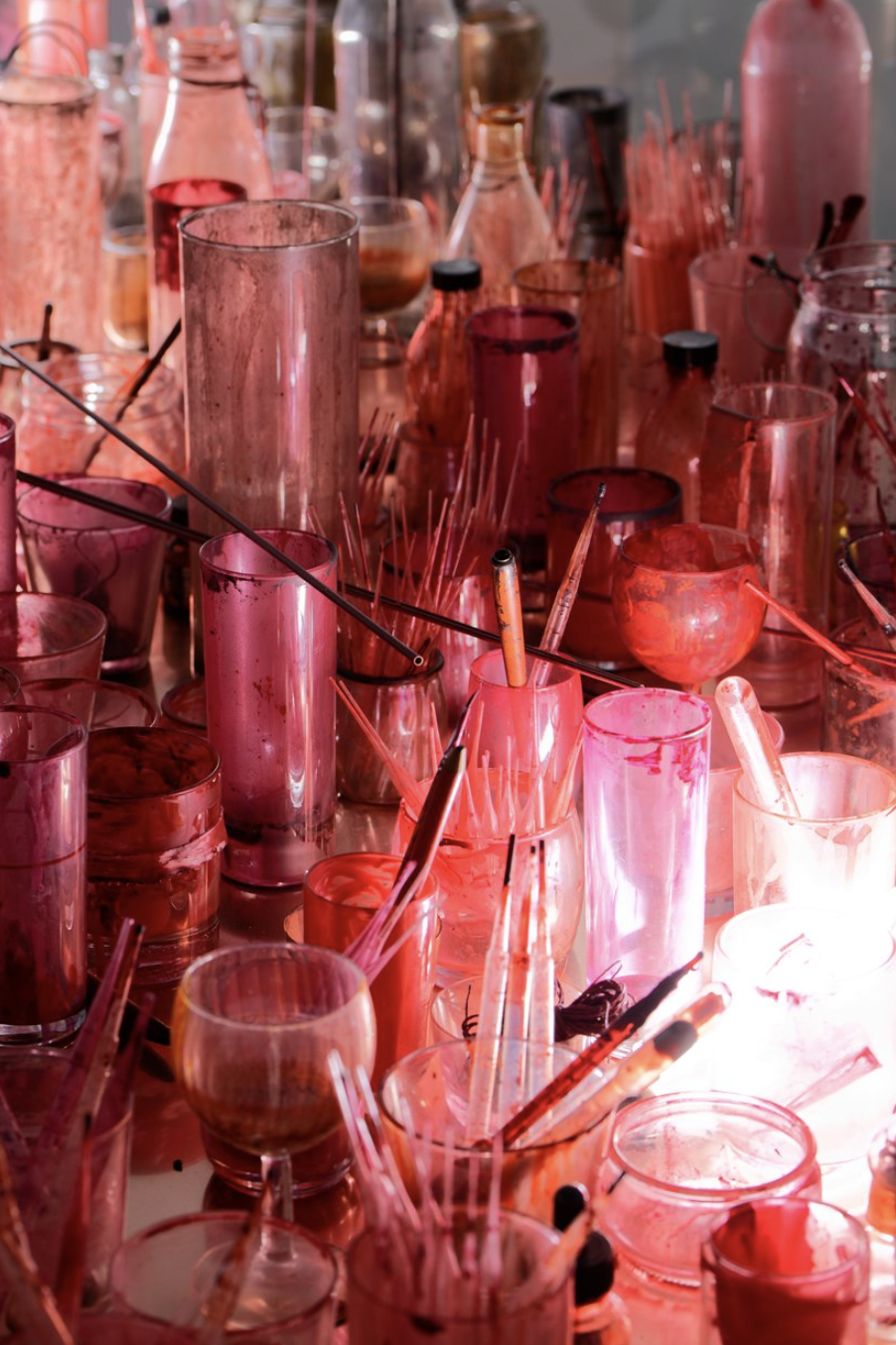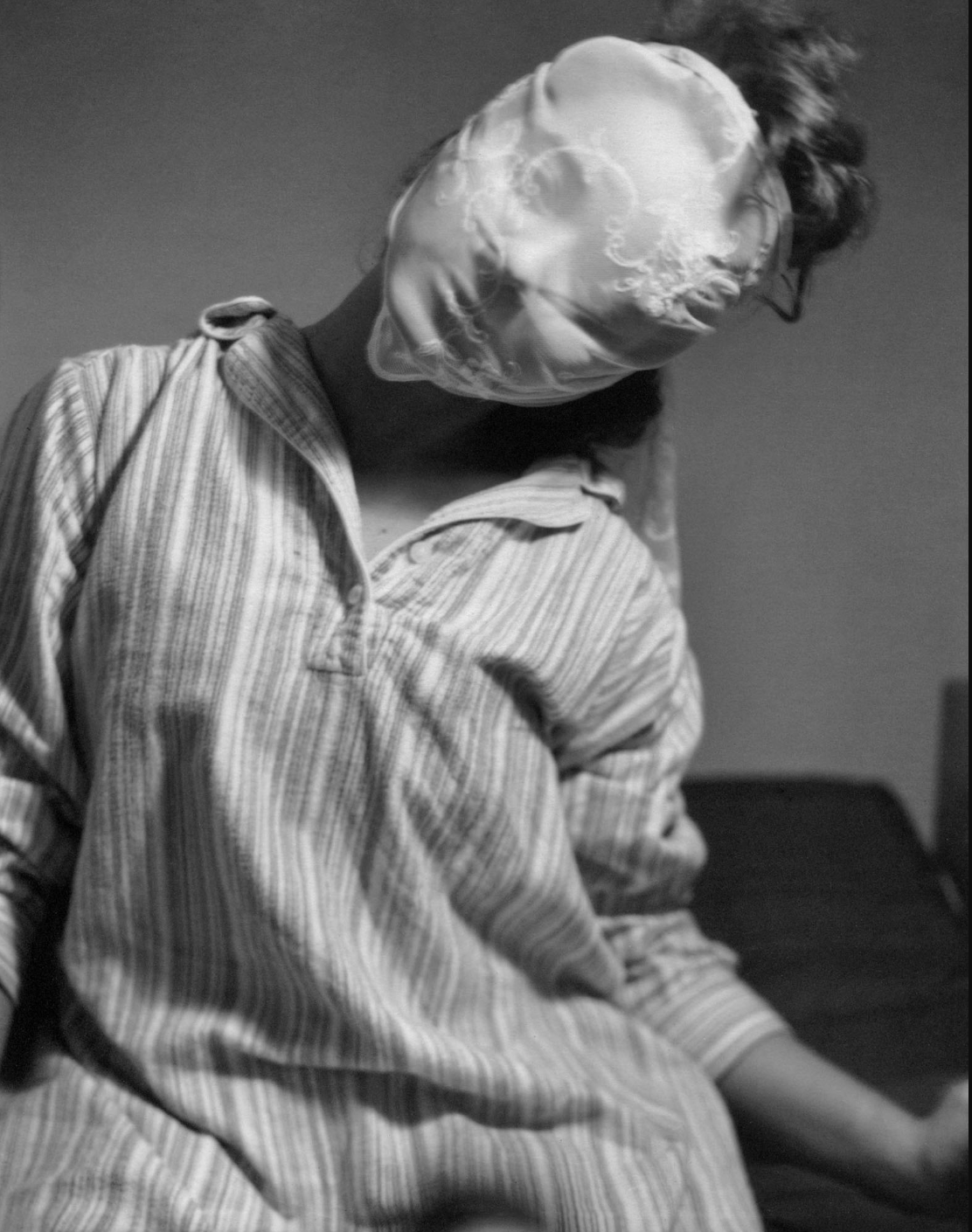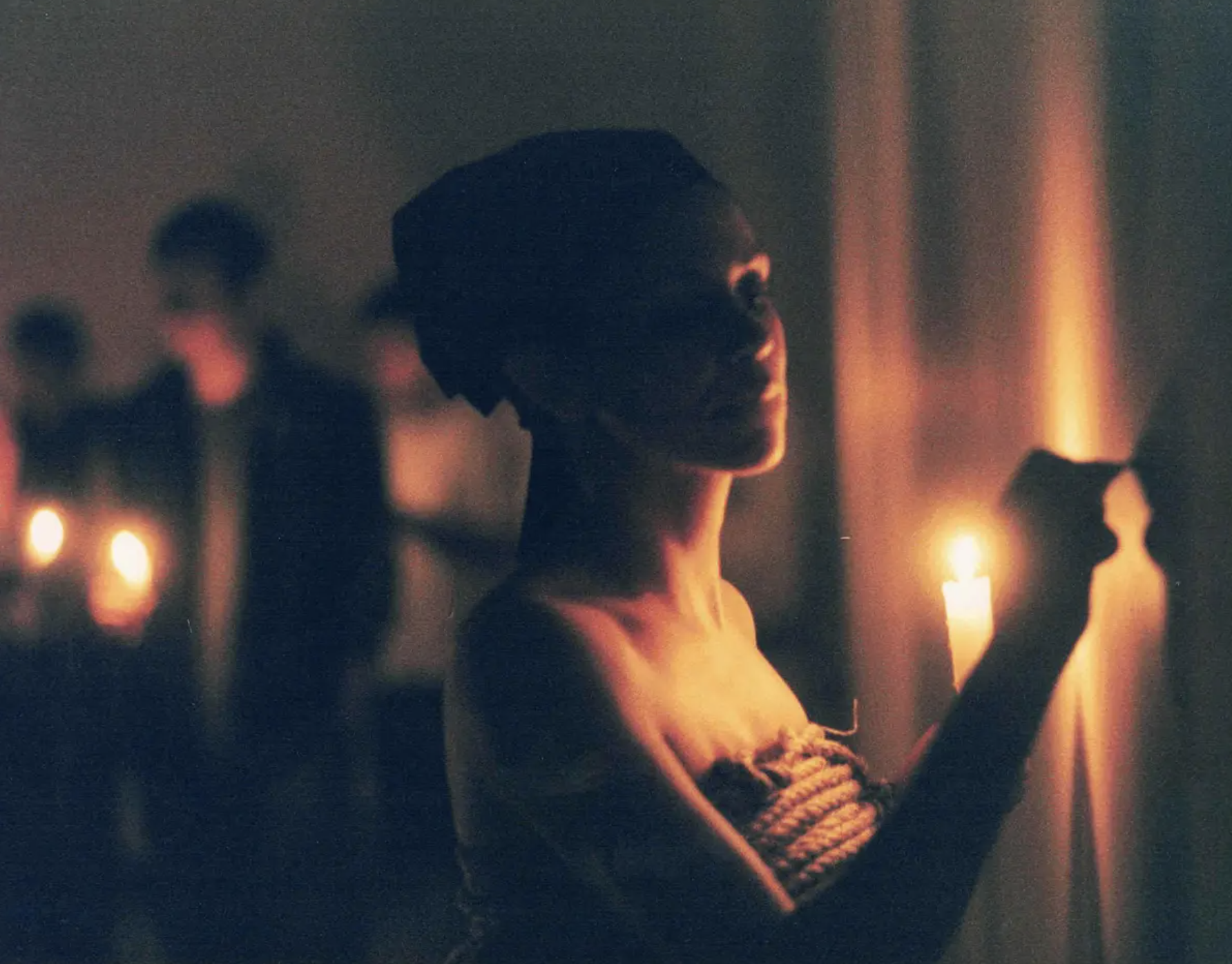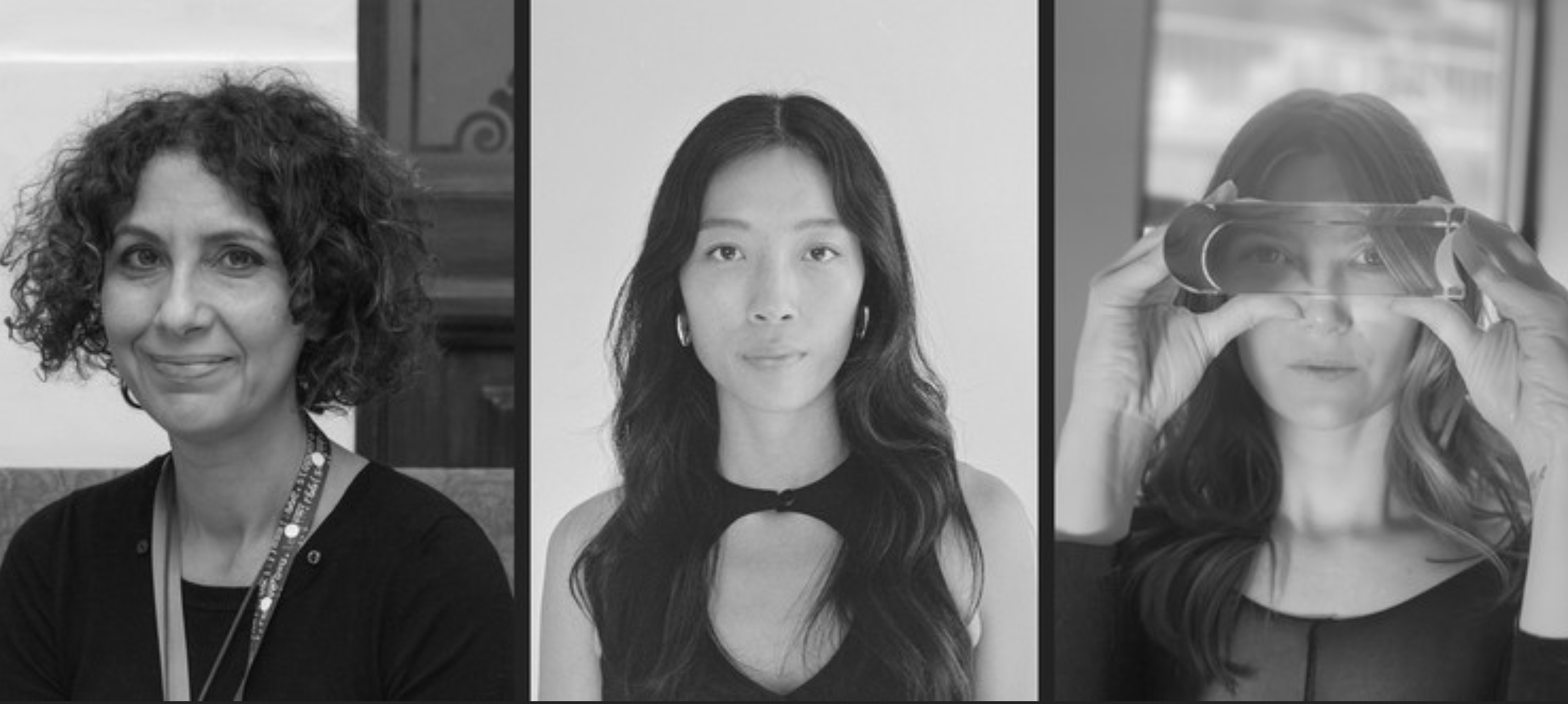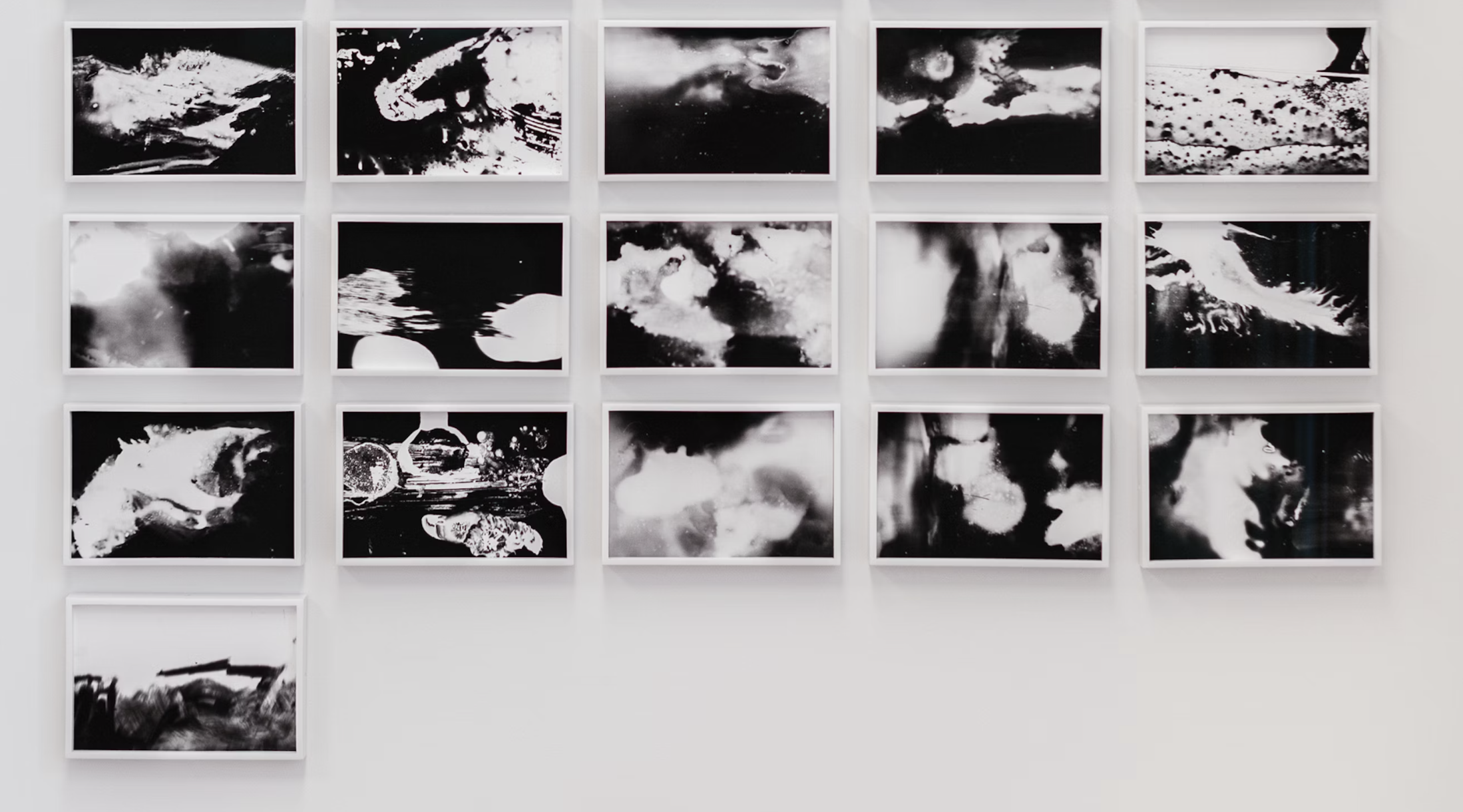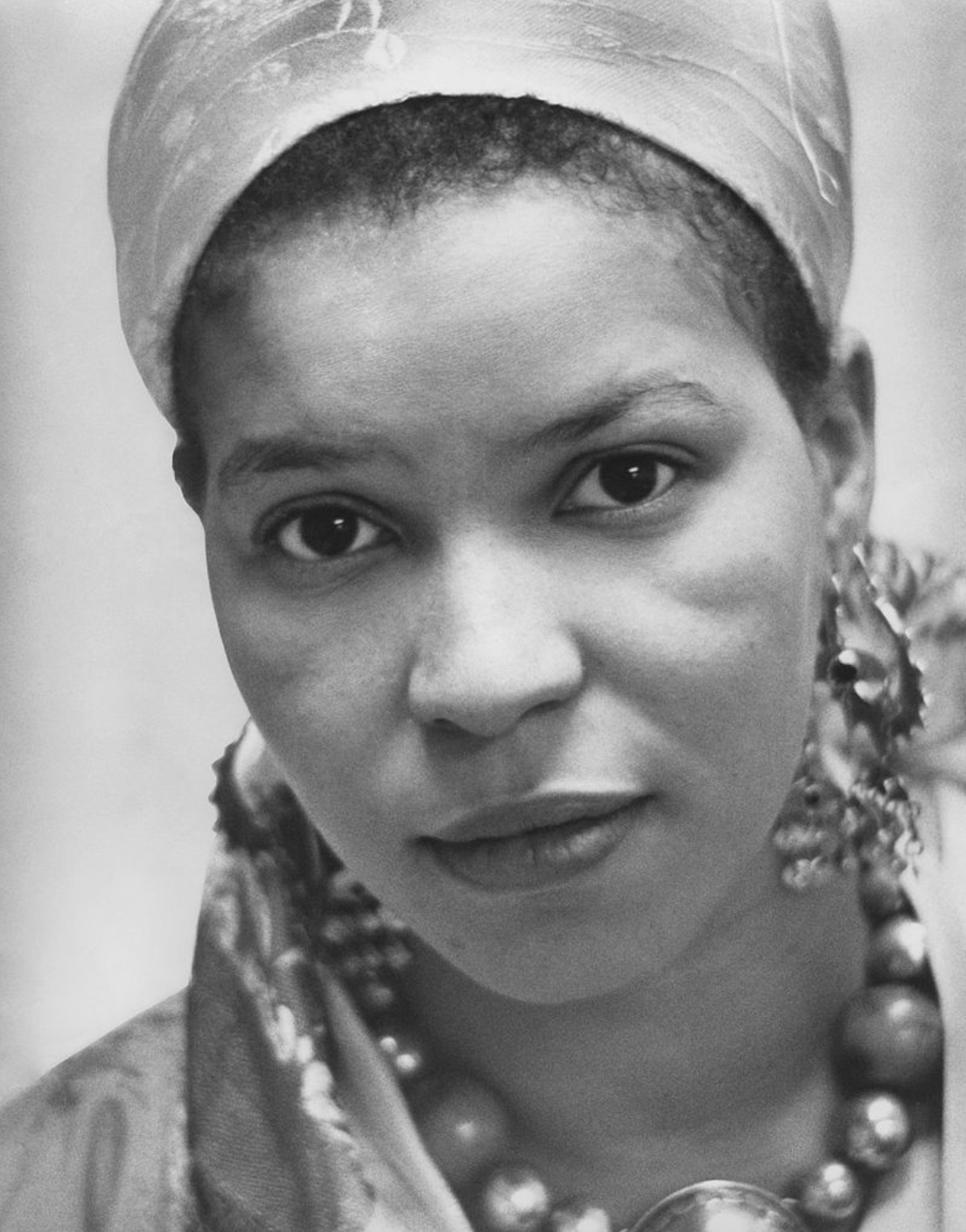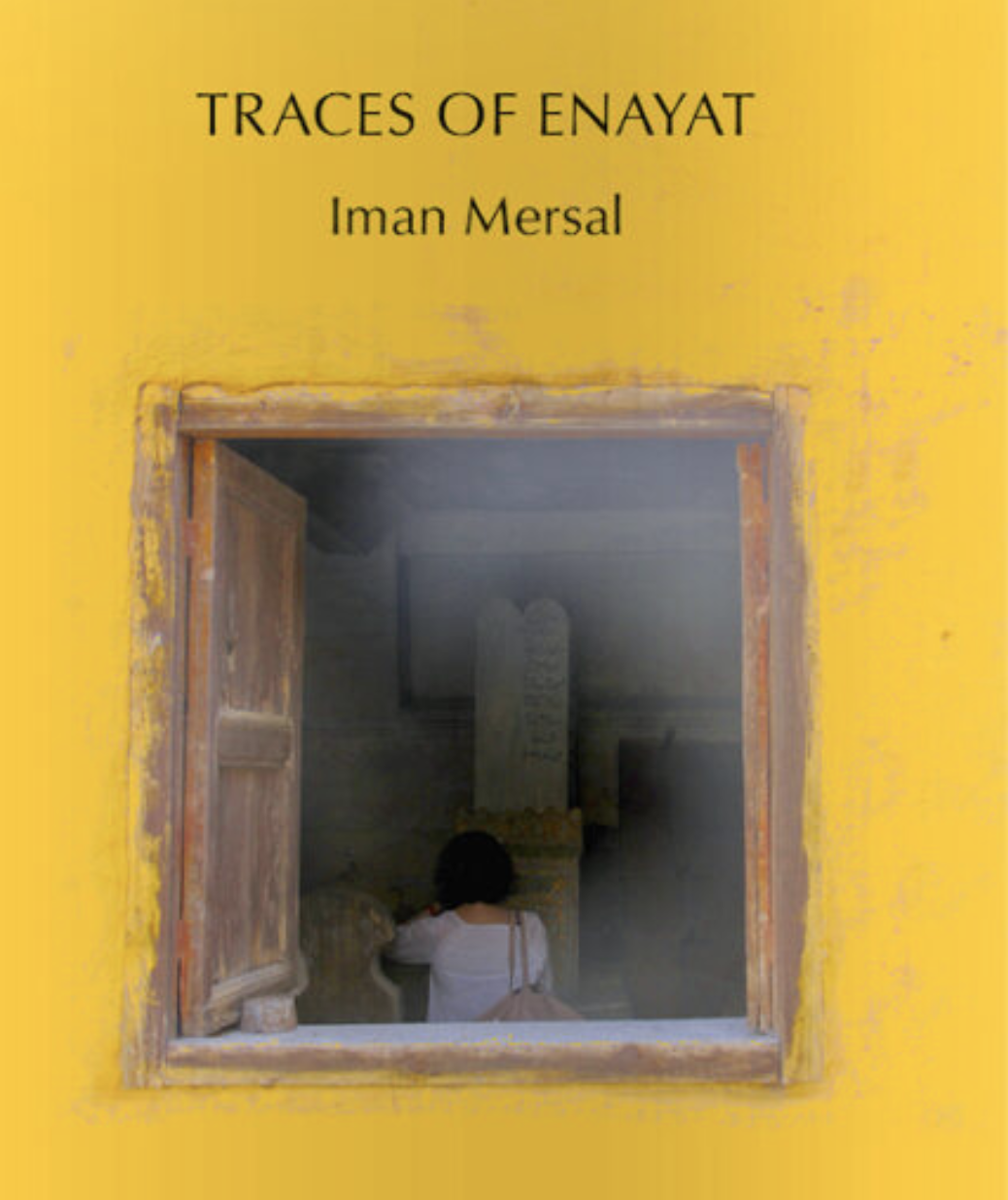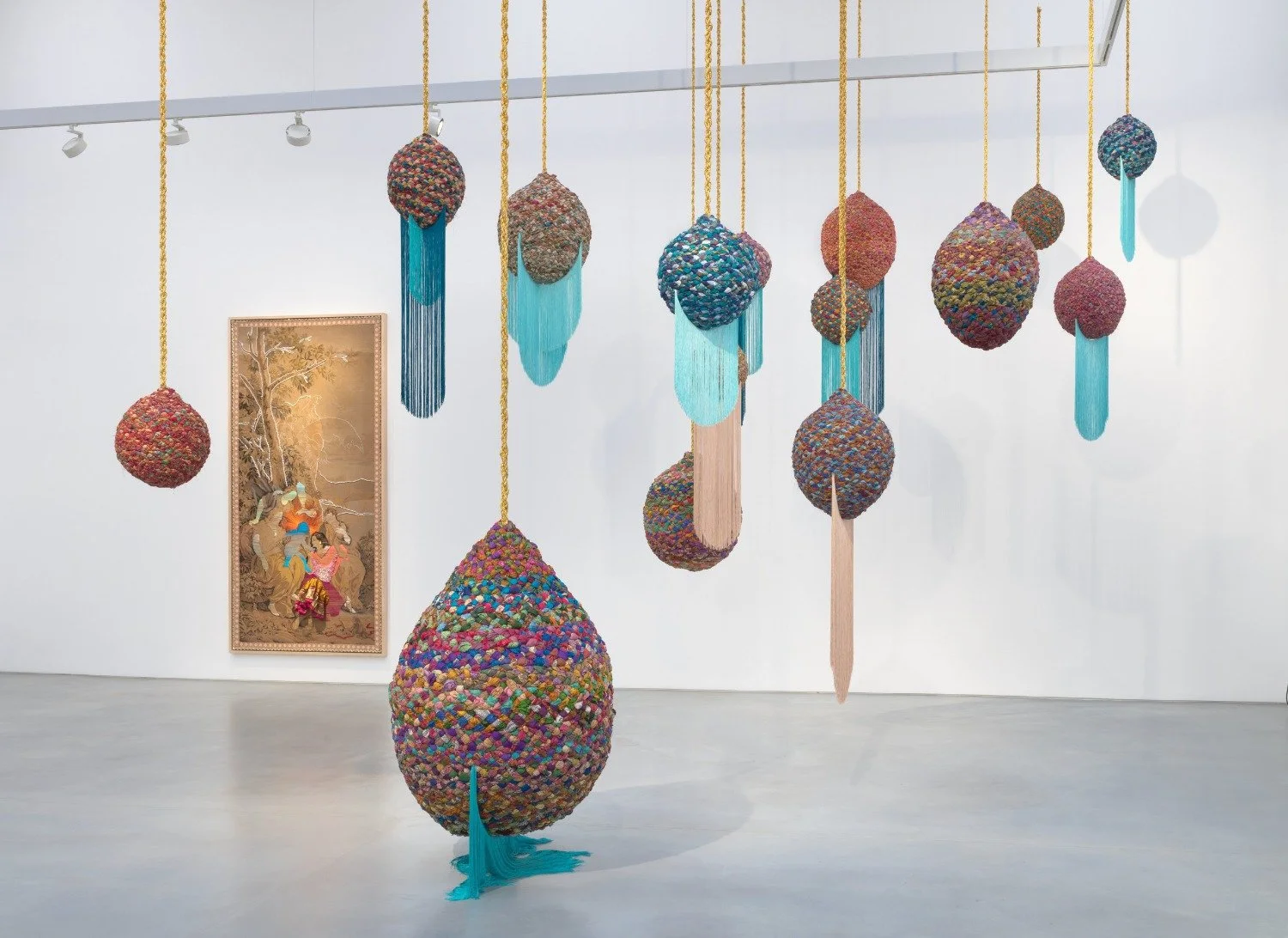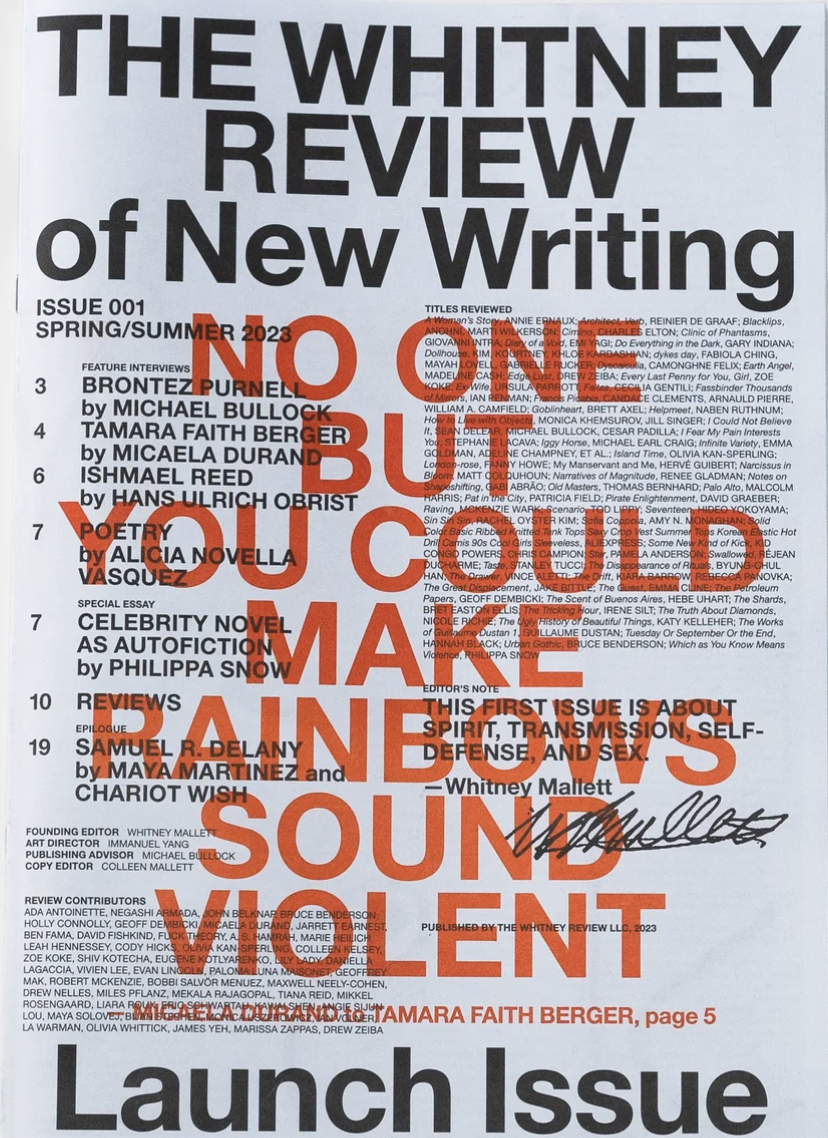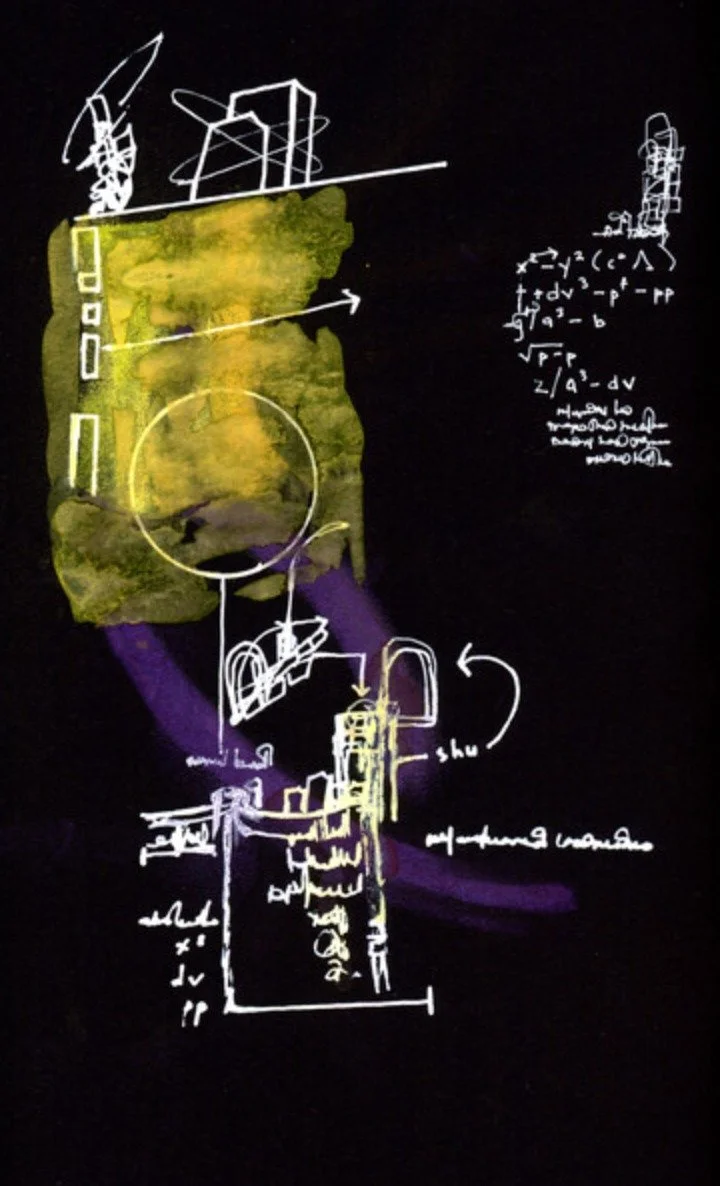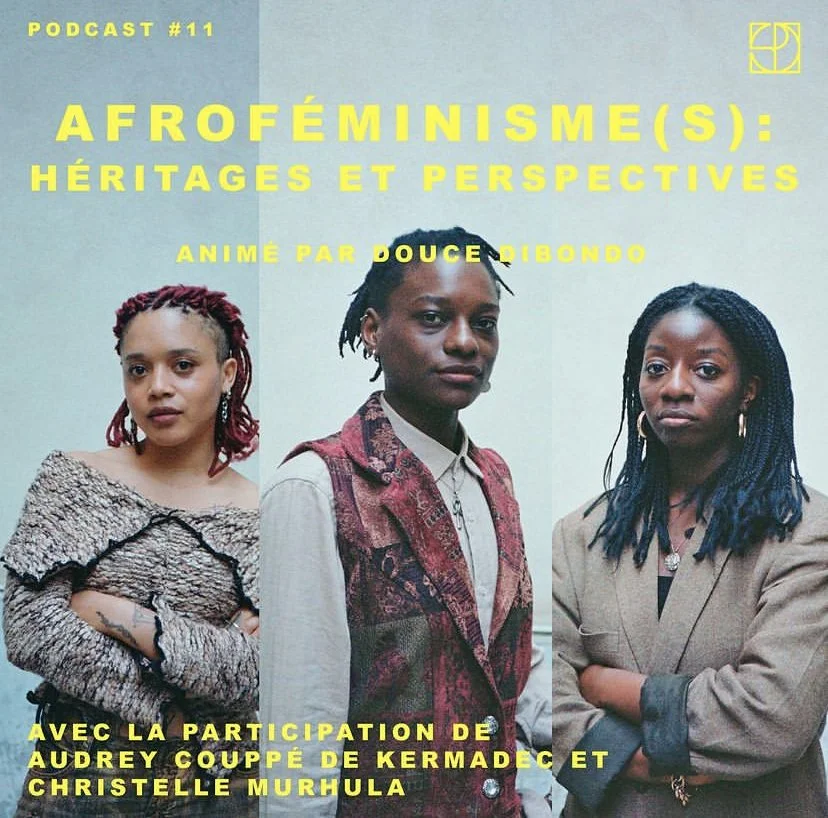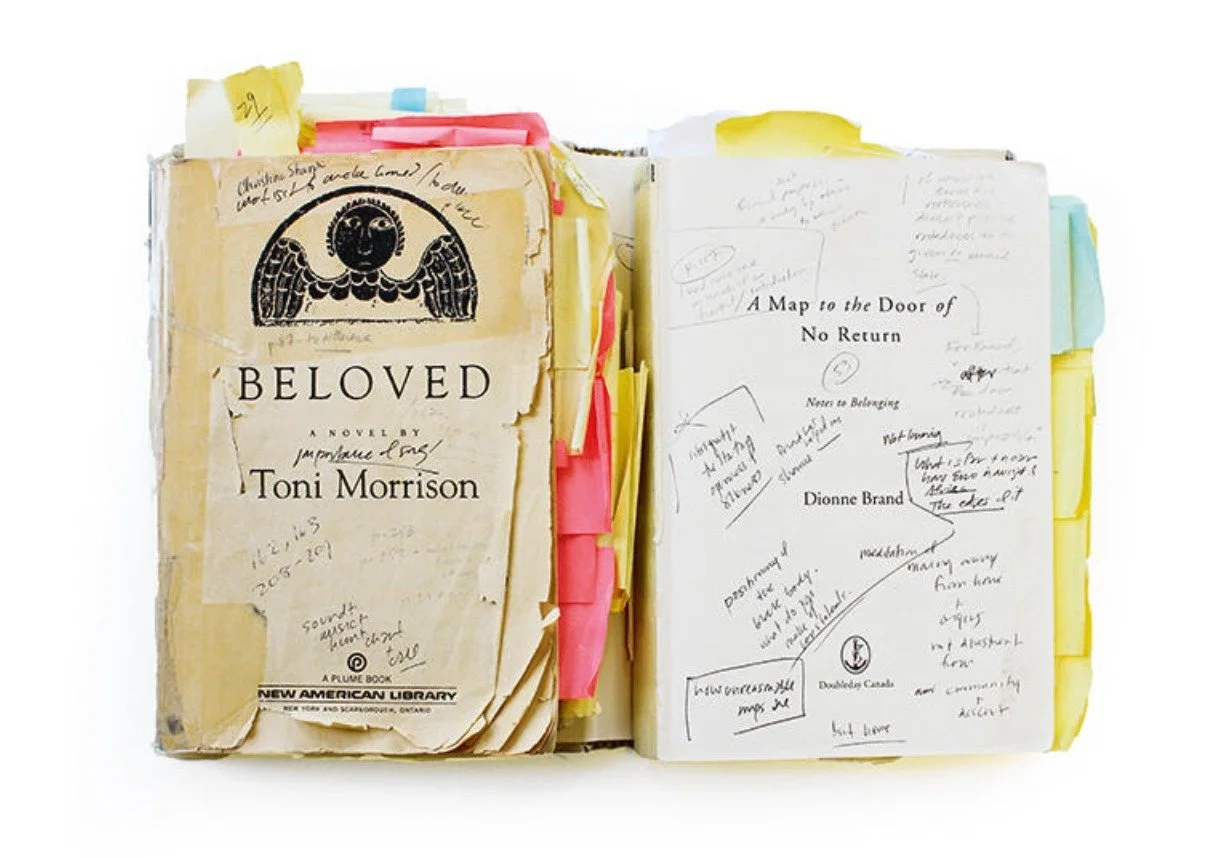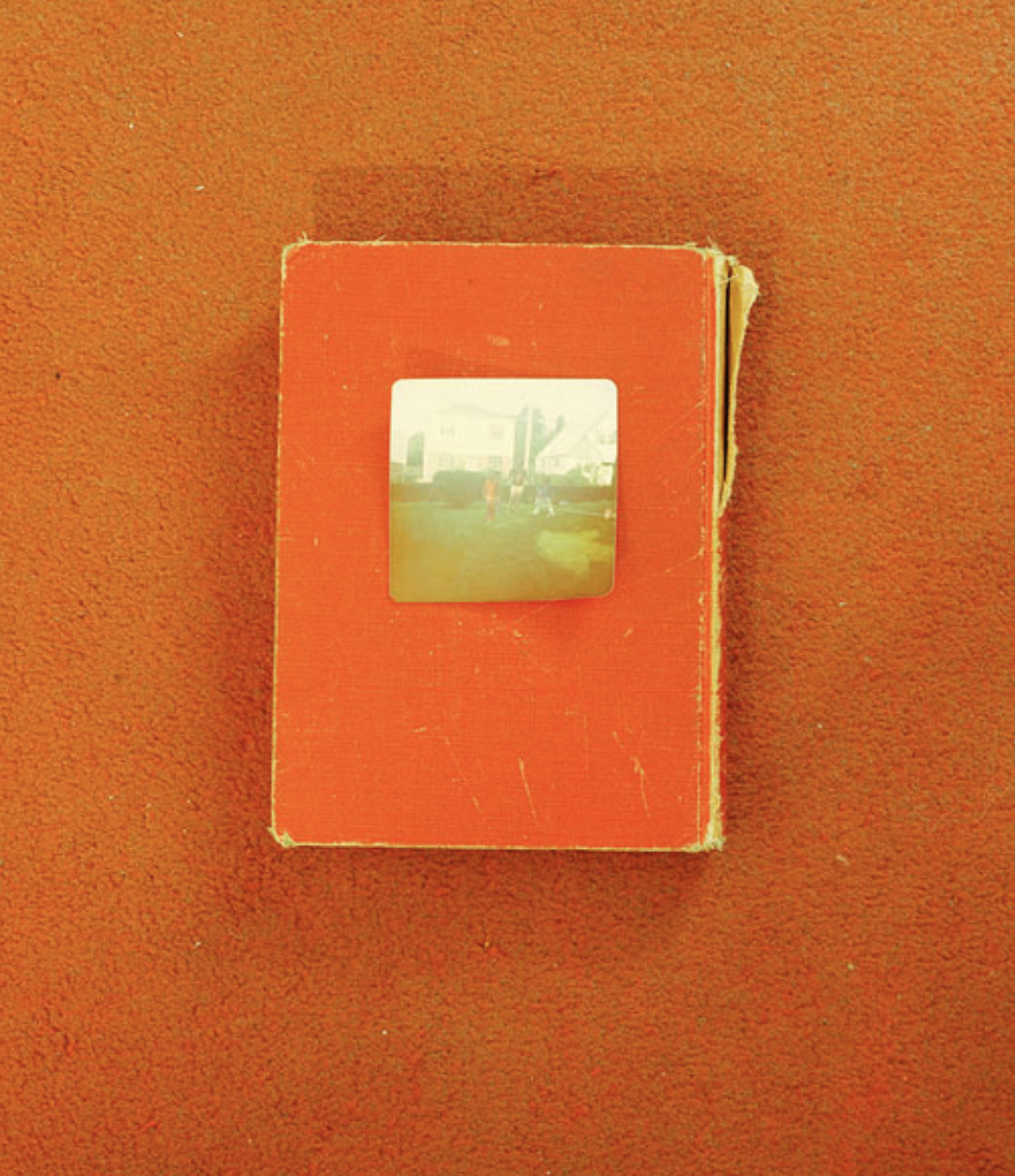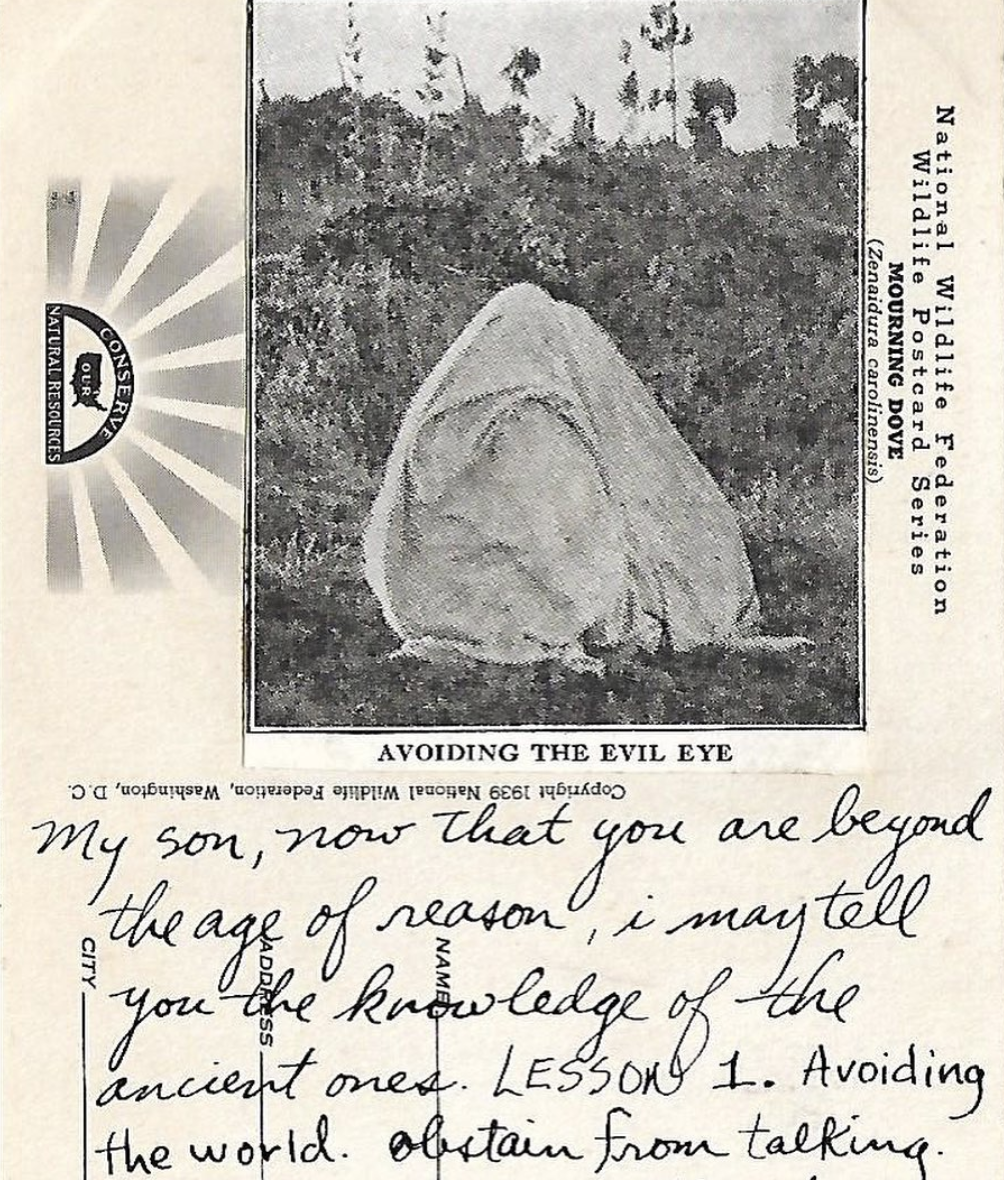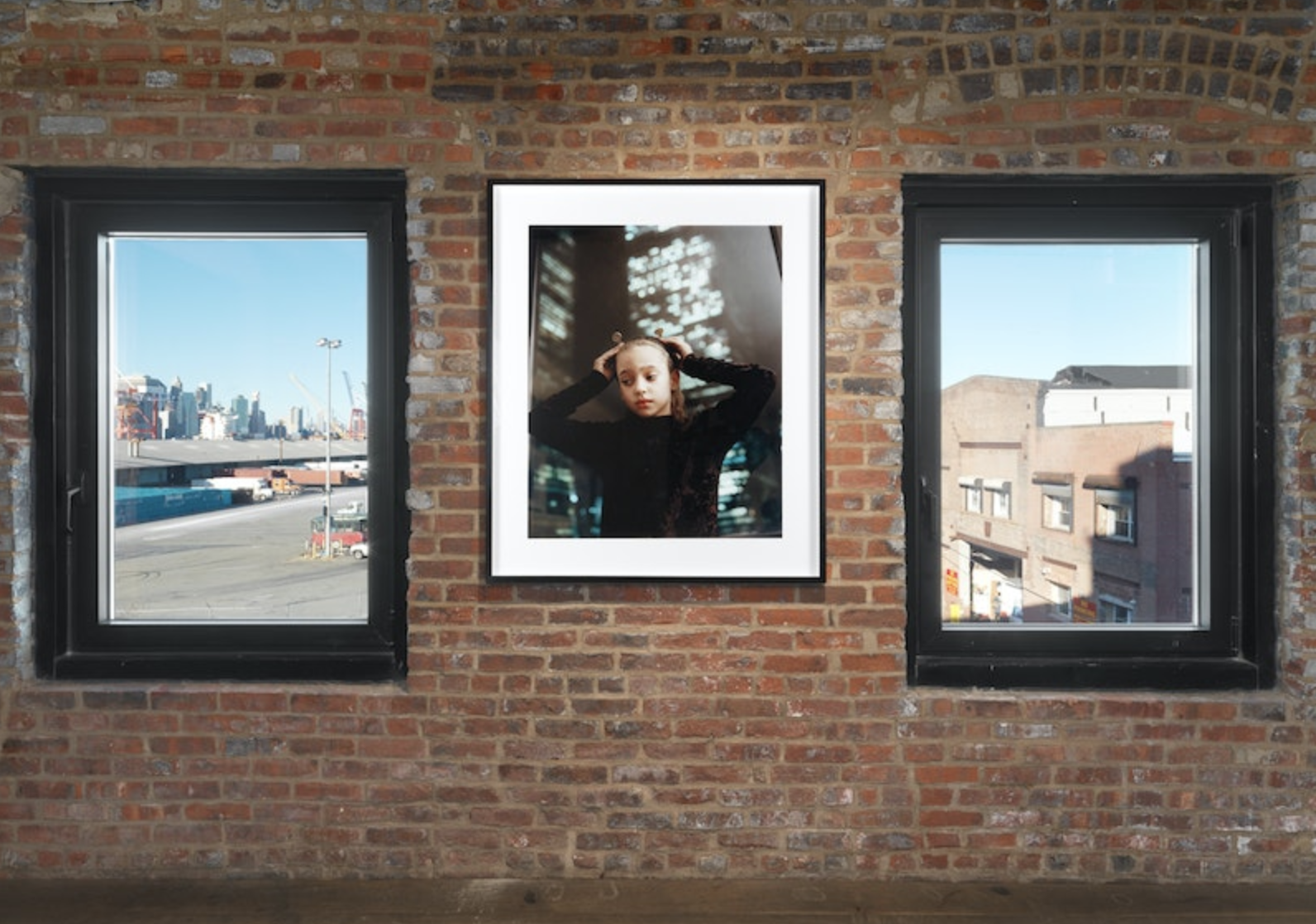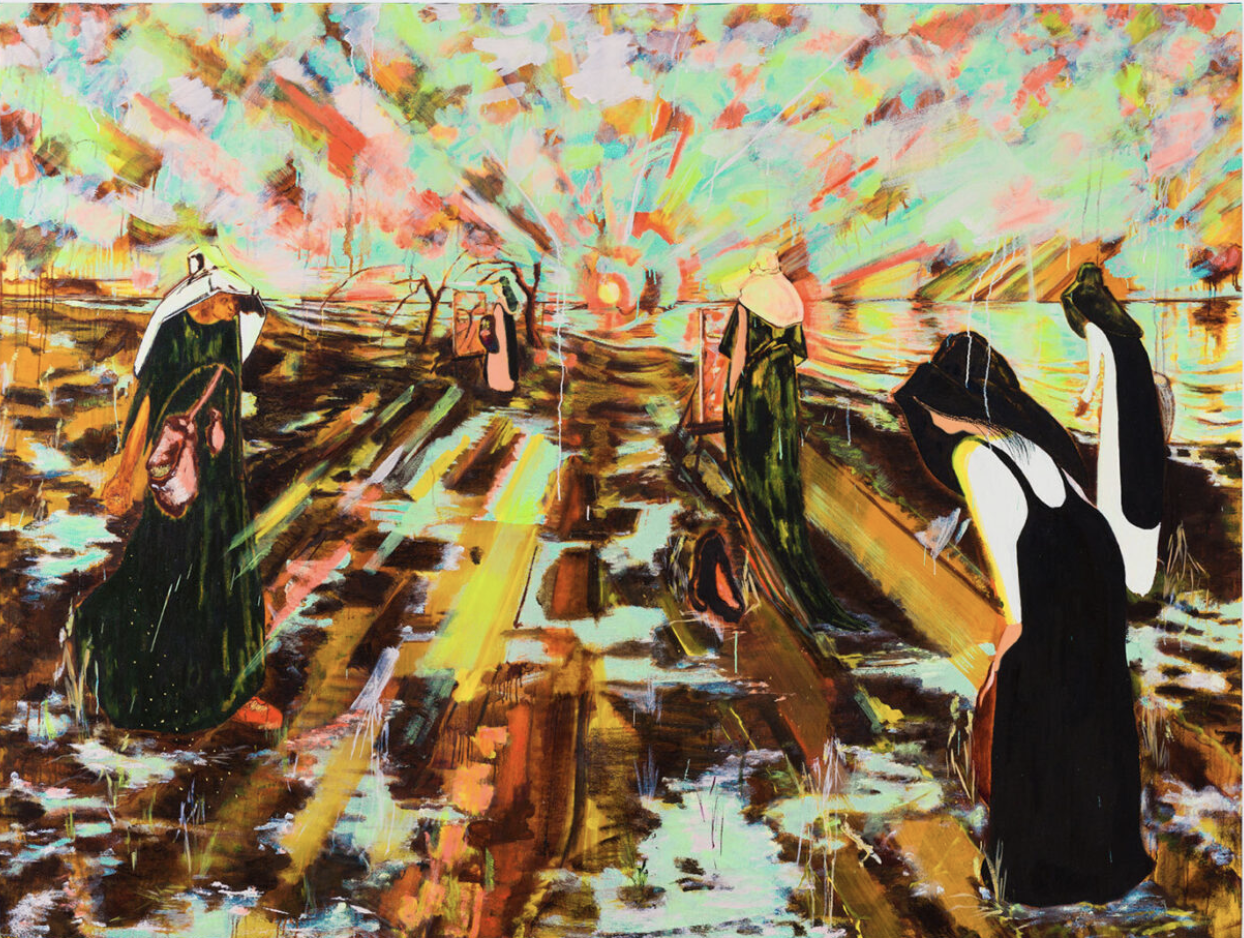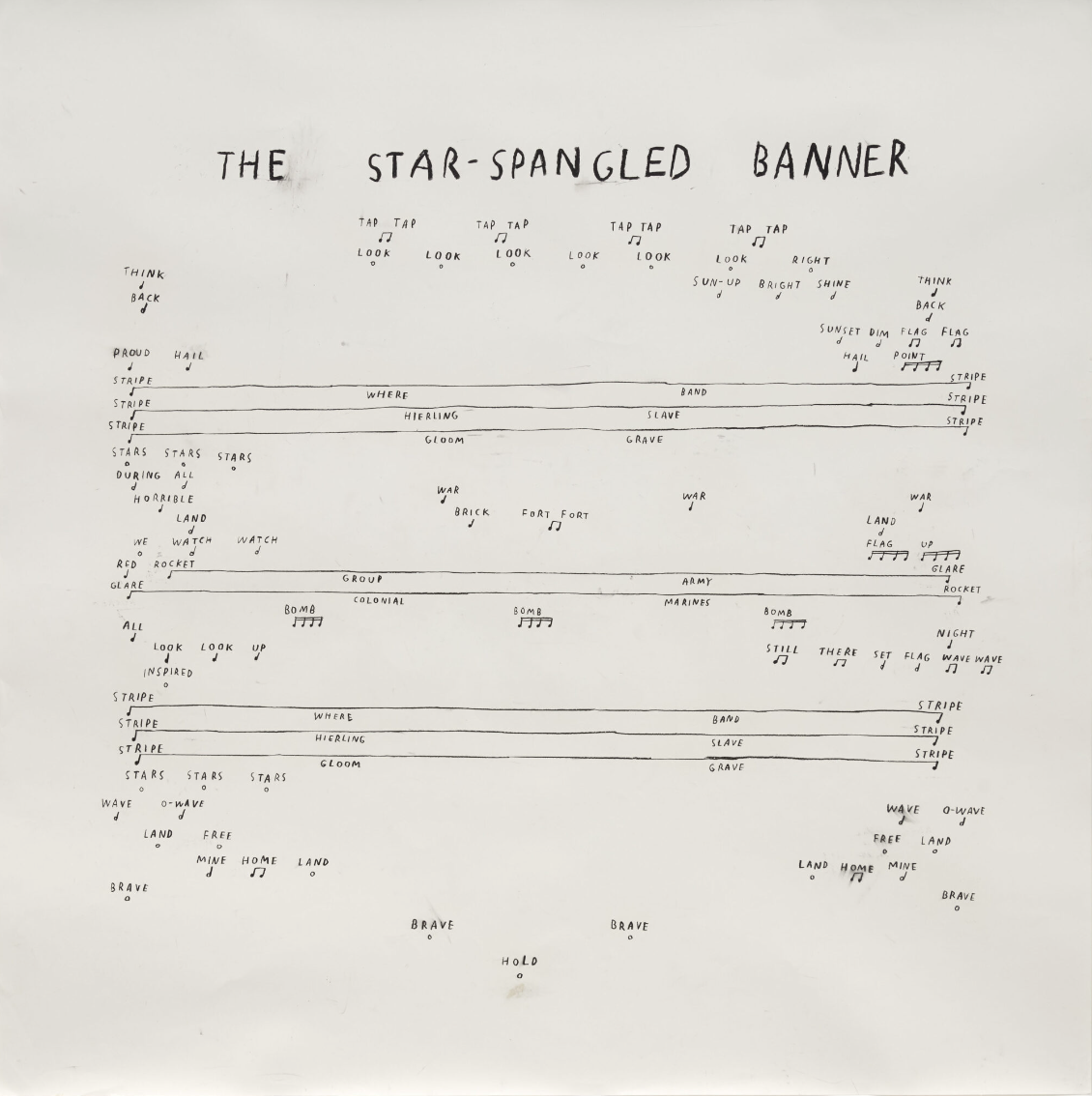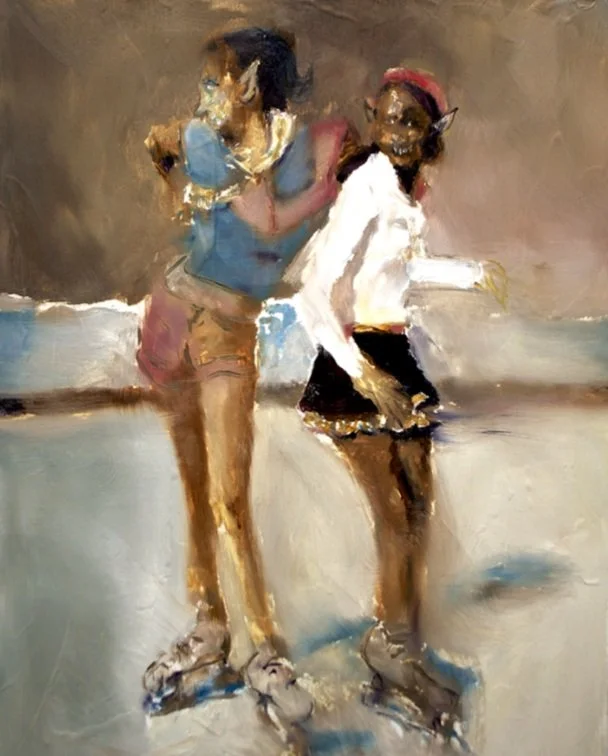Spring Curated Readings
-
![]()
Foraging in the ruins: Nguyễn Trinh Thi’s mycological moving-image practice
By Philippa Lovatt
Sensing a connection between her creative practice and Agnès Varda’s The Gleaners and I (2000), a film about people who make use of items that have been discarded by others, Vietnamese moving-image artist Nguyễn Trinh Thi has described herself as a ‘gleaner’ by virtue of her ecological approach to producing moving-image works.1Nguyễn uses montage to explore processes of historical erasure through found materials mostly sourced from the internet, due in part to the difficulty of accessing such materials via Vietnamese institutional archives.2 Collectively, these materials – including press photographs, tourist and colonial postcards, archival newsreels, drone footage, ethnographic film, popular and art house cinema – envisage the history of Vietnam through colonial, state and cinematic imaginaries.
Nguyễn brings these found objects into dialogue with her own video and audio recordings in her non-linear, experimental documentaries, essay films and audiovisual installations. This essay focuses on Nguyễn’s Landscape series – Landscape Series #1 (2013), Letters from Panduranga (2015), Fifth Cinema (2018) and How to Improve the World (2021) – and explores how the interrelated and shifting macro-histories of global and national politics, colonialism and the Cold War are made visible and audible through the micro-ecologies and environments that these works depict.
-
![]()
Writings Of Subversion: The Chiliean Arpilleristas
By Roberta Garieri
This is the story of not one, but many women who, in shared anonymity, chose to testify against a both neoliberal and patriarchal power. They are the arpilleristas, Chilean women and weavers, authors of subversive histories written with the help of the needle and thread. Already reused and enhanced in the 1960s by the Chilean artist Violeta Parra (1917–1967), this ancient artisanal tradition of arpilleras1 transformed itself into a spontaneous strategy of civil disobedience throughout Chile’s military dictatorship (1973–1990).
Some arpilleras subsequently migrated to various parts of the world with the wave of exiles, activating the deployment of an international solidarity network with the Chilean cause. This article aims to make visible the role of these women in the fight against domination, as well as the past and present value of these dissident objects on the border of art and craft, shedding light on the necessity to observe once again the relationship between artistic production and the historical and political context in which it is manifested.
-
![]()
LaToya Ruby Frazier’s Steady Gaze
By Rebecca Bengal, Zoe Leonard, Zora J Murff
An artist and activist whose work has illuminated stories of workers, women, and people of color, LaToya Ruby Frazier has devoted her career to resisting “historical erasure and historical amnesia.” To celebrate LaToya Ruby Frazier: Monuments of Solidarity, a retrospective of her work that opens at MoMA on May 12, we asked artists Zoe Leonard and Zora J Murff and writer Rebecca Bengal to reflect on a single photograph chosen from the exhibition. All three photographs include self-portraits of the artist. As Leonard writes in her reflection, “The best self-portraits in art history go beyond conveying a likeness or projecting a persona. They show us a person in the world, responding to and being shaped by their circumstances at a particular moment in their life.”
-
![]()
Faith Ringgold: “I am very inspired to tell my story, and that’s my story.”
By Will Furtado
Contemporary And
“Identity” and “identity politics” are terms with which artists from Africa and the Diaspora are often associated, whether they like it or not. This has been the case for decades, or rather ever since there has been a debate around artistic production by artists from African perspectives. The idea that those artists are working on “identity” may be one of the assumptions made by a “Western” audience — and this applies just as much to Black communities. But is this fair? Is it not also leading to a “burden of representation,” as Kobena Mercer once called it? What does it really mean to make work on our “identity”? And who gets to decide that? And what about those artists with African perspectives who aren’t addressing the issue of “identity”? Their work and viewpoints are relevant and important, as they move away from this “burden to represent.” In this round-table discussion, four intergenerational artists discuss the problematics of these terms and their usage.
-
![]()
Heroines, 2nd Edition
By Kate Zambreno
Introduction by Jamie Hood
Semiotext(e)
“I am beginning to realize that taking the self out of our essays is a form of repression. Taking the self out feels like obeying a gag order—pretending an objectivity where there is nothing objective about the experience of confronting and engaging with and swooning over literature.”
‘A manifesto reclaiming the wives and mistresses of literary modernism that inspired a generation of writers and scholars, reissued after more than a decade. I am beginning to realize that taking the self out of our essays is a form of repression.’
-
![]()
Shining Lights: Black Women Photographers in 1980s–90s Britain
Joy Gregory (ed) Taous Dahmani
Mack Books 2024
Description goeShining Lights is the first critical anthology to bring together the groundbreaking work of Black women photographers active in the UK during the 1980s and 1990s, providing a richly illustrated overview of a significant and overlooked chapter of photographic history. Seen through the lens of Britain’s sociopolitical and cultural contexts, the publication draws on both lived experience and historical investigation to explore the communities, experiments, collaborations, and complexities that defined the decades.
-
![]()
Kathy Acker Nox Love, Emily (vinyl LP)
Slow Moves 2023
The restored and remastered vinyl reissue of a sound performance by American writer Kathy Acker and French noise/experimental band Nox, published in 1987, with a poster and a previously unpublished set of documents, letters, texts and photos.
Originally released in a long sold-out edition of 50 cassette tapes, Love, Emily (Acte 3) was the third and final album of Michel Henritzi's industrial label AKT Production. Recorded in a Paris studio in 1987, this 25-minute collage of spoken word and noise saturations intersects two radical voices from literature and experimental music of the time: American author Kathy Acker reading excerpts from her book My Death My Life by Pier Paolo Pasolini, and Nox, mainstay of the French noise and industrial scene. Pulled from oblivion, restored and remastered for vinyl by Slow Moves, this archive gem crosses the clashing worlds of poetry and industrial music, melding Acker's thought-provoking words to absolute and inflexible industrial sounds. A lot of it is noise, but a lot of it is also play; research for a new mystique, generating unusual forms and unknown languages.
-
![]()
Hosen haben Röcke an : Pants Wear Skirts
Hatje Cantz & nGbK 2023
Founded in 1984 by women around Gabriele Stötzer, the Erfurt Women Artists’ Group pursued a radically creative lifestyle to counter the rigid structures of everyday life in the GDR, over a period of ten years. Subversive, witty, borne of a liberating sense of defiance against normative gender roles, their artistic expressions provide an insight into the little-known feminist subculture in the GDR. Their pioneering role in terms of an exploration of female identity is particularly reflected through five experimental Super 8 films, subsequent live performances, and fashion-object shows. Often unfolding intuitively from sequences of audio, dance, and literary elements, self-created and provocative costumes that served as alter egos of the artists took center stage. Their political commitment culminated in December 1989 in the first occupation of a Stasi, State Security Service, headquarters, initiated by five women, three of whom were part of the group.
The ERFURT WOMEN ARTISTS' GROUP remained active with personnel changes—Monika Andres, Tely Büchner, Elke Carl, Monique Förster, Gabriele Göbel, Ina Heyner, Verena Kyselka, Claudia Morca Bogenhardt, Bettina Neumann, Ingrid Plöttner, Marlies Schmidt, Gabriele Stötzer, Harriet Wollert and others—until 1994.
-
![]()
A World Apart, A Dialogue in Three Parts: Linda Mvusi by Liza Béar
Linda Mvusi
Liza Béar 1988
A World Apart explores apartheid through the eyes of the young daughter of political activists in Johannesburg in 1963. This interview is the second in a three-part dialogue with screenwriter Shawn Slovo, director Chris Menges, and actor Linda Mvusi.
-
![]()
Let’s Have a Talk: Conversations with Women on Art and Culture
Lauren O'Neill-Butler
Karma Publications 2021
This massive volume comprises over 80 interviews published across a 13-year span of Lauren O’Neill-Butler’s career as a writer, educator, editor and cofounder of November magazine. The majority of the interviews first appeared on Artforum.com’s interviews column, which O’Neill-Butler edited for 11 years. The book is divided into two sections, “Q&A” and “As Told To”―the first comprising interviews in a traditional format and the second recast by O’Neill-Butler in the interviewee’s voice.Conversations with leading women artists, composers and writers from Judy Chicago, Anohni and Lynne Tillman to Ellie Ga, Tauba Auerbach and Renee Green.
-
![]()
Cento by Cosima zu Knyphausen
Rahel Schrohe and Cosima zu Knyphausen.
BOM DIA BOA TARDE BOA NOITE 2024
A cento is a poem composed of verses or fragments from various literary texts that are collaged into a new one. The word comes from an ancient Latin term which means a blanket made of textile scraps.
This etymological root interweaves important aspects of Cosima zu Knyphausen’s practice: the materiality of a piece of cloth – the support of the paintings – with the process of quoting, paraphrasing and appropriating art historical motifs, in order to imagine an alternative canon that is shaped by lesbian desire.
Cento brings together a selection of paintings by Cosima zu Knyphausen from the last five years. Instead of following a chronological order, the works are presented in an intertextual reading that puts them in dialogue and show the range of interests that the artist has pursued in her versatile practice, such as her variations on the motif of ‘women reading’, Christine de Pizan’s medieval feminist utopia, the interior of a Berlin queer bar, and egg shell universes.
Accompanied by an essay by Rahel Schrohe, and a poem of the artist, the pages of Cento are overarching Cosima zu Knyphausen’s themes, as well as assembling the book itself as a context for the work: a mosaic, a patchwork garment, an egg.
-
![]()
Intuition and Play: Joining the Mundane & Mystical through the Lens of Childhood
On the work of Luna Izpisua Rodriguez by Ximena Prieto
How can play and humor unite the mundane and the mystical, breaking down the limitations of fixed identity formation?
In Bandoneon, Working with Pina Bausch, Raimund Hoghe notes the parallel between Walter Benjamin and Pina Bausch’s work in looking at childhood as “ a period of profound, sensuous knowledge…unashamed and curious...” highlighting the tools and adopting the child’s viewpoint that serves in “picking up seemingly innocuous, trivial details to say something revealing about the adults’ world…” In this vein, we find the indelible performances of Luna Izpisua Rodriguez, 2023 award winner of The Princess Grace Honoraria in Theater, who begins each of her pieces with a certain path, soon reverted and abandoned for unbarred exploration. To find the meeting point of mystical and mundane, she utilizes performance as a deft medium to present something familiar, gradually turning our initial perception on its head. Among her recent works: A Tiny Little Star is Born, Asleep and Dancing in the Rainforest, El Misterio, and Wealth and Hellness.
MARCH 2024
-
![]()
Shining Lights: Black Women Photographers in 1980s–90s Britain
Joy Gregory (ed) Taous Dahmani
Mack Books 2024
Description goeShining Lights is the first critical anthology to bring together the groundbreaking work of Black women photographers active in the UK during the 1980s and 1990s, providing a richly illustrated overview of a significant and overlooked chapter of photographic history. Seen through the lens of Britain’s sociopolitical and cultural contexts, the publication draws on both lived experience and historical investigation to explore the communities, experiments, collaborations, and complexities that defined the decades.
-
![]()
Kathy Acker Nox Love, Emily (vinyl LP)
Slow Moves 2023
The restored and remastered vinyl reissue of a sound performance by American writer Kathy Acker and French noise/experimental band Nox, published in 1987, with a poster and a previously unpublished set of documents, letters, texts and photos.
Originally released in a long sold-out edition of 50 cassette tapes, Love, Emily (Acte 3) was the third and final album of Michel Henritzi's industrial label AKT Production. Recorded in a Paris studio in 1987, this 25-minute collage of spoken word and noise saturations intersects two radical voices from literature and experimental music of the time: American author Kathy Acker reading excerpts from her book My Death My Life by Pier Paolo Pasolini, and Nox, mainstay of the French noise and industrial scene. Pulled from oblivion, restored and remastered for vinyl by Slow Moves, this archive gem crosses the clashing worlds of poetry and industrial music, melding Acker's thought-provoking words to absolute and inflexible industrial sounds. A lot of it is noise, but a lot of it is also play; research for a new mystique, generating unusual forms and unknown languages.
-
![]()
Hosen haben Röcke an : Pants Wear Skirts
Hatje Cantz & nGbK 2023
Founded in 1984 by women around Gabriele Stötzer, the Erfurt Women Artists’ Group pursued a radically creative lifestyle to counter the rigid structures of everyday life in the GDR, over a period of ten years. Subversive, witty, borne of a liberating sense of defiance against normative gender roles, their artistic expressions provide an insight into the little-known feminist subculture in the GDR. Their pioneering role in terms of an exploration of female identity is particularly reflected through five experimental Super 8 films, subsequent live performances, and fashion-object shows. Often unfolding intuitively from sequences of audio, dance, and literary elements, self-created and provocative costumes that served as alter egos of the artists took center stage. Their political commitment culminated in December 1989 in the first occupation of a Stasi, State Security Service, headquarters, initiated by five women, three of whom were part of the group.
The ERFURT WOMEN ARTISTS' GROUP remained active with personnel changes—Monika Andres, Tely Büchner, Elke Carl, Monique Förster, Gabriele Göbel, Ina Heyner, Verena Kyselka, Claudia Morca Bogenhardt, Bettina Neumann, Ingrid Plöttner, Marlies Schmidt, Gabriele Stötzer, Harriet Wollert and others—until 1994.
-
![]()
A World Apart, A Dialogue in Three Parts: Linda Mvusi by Liza Béar
Linda Mvusi
Liza Béar 1988
A World Apart explores apartheid through the eyes of the young daughter of political activists in Johannesburg in 1963. This interview is the second in a three-part dialogue with screenwriter Shawn Slovo, director Chris Menges, and actor Linda Mvusi.
-
![]()
Let’s Have a Talk: Conversations with Women on Art and Culture
Lauren O'Neill-Butler
Karma Publications 2021
This massive volume comprises over 80 interviews published across a 13-year span of Lauren O’Neill-Butler’s career as a writer, educator, editor and cofounder of November magazine. The majority of the interviews first appeared on Artforum.com’s interviews column, which O’Neill-Butler edited for 11 years. The book is divided into two sections, “Q&A” and “As Told To”―the first comprising interviews in a traditional format and the second recast by O’Neill-Butler in the interviewee’s voice.Conversations with leading women artists, composers and writers from Judy Chicago, Anohni and Lynne Tillman to Ellie Ga, Tauba Auerbach and Renee Green.
-
![]()
Cento by Cosima zu Knyphausen
Rahel Schrohe and Cosima zu Knyphausen.
BOM DIA BOA TARDE BOA NOITE 2024
A cento is a poem composed of verses or fragments from various literary texts that are collaged into a new one. The word comes from an ancient Latin term which means a blanket made of textile scraps.
This etymological root interweaves important aspects of Cosima zu Knyphausen’s practice: the materiality of a piece of cloth – the support of the paintings – with the process of quoting, paraphrasing and appropriating art historical motifs, in order to imagine an alternative canon that is shaped by lesbian desire.
Cento brings together a selection of paintings by Cosima zu Knyphausen from the last five years. Instead of following a chronological order, the works are presented in an intertextual reading that puts them in dialogue and show the range of interests that the artist has pursued in her versatile practice, such as her variations on the motif of ‘women reading’, Christine de Pizan’s medieval feminist utopia, the interior of a Berlin queer bar, and egg shell universes.
Accompanied by an essay by Rahel Schrohe, and a poem of the artist, the pages of Cento are overarching Cosima zu Knyphausen’s themes, as well as assembling the book itself as a context for the work: a mosaic, a patchwork garment, an egg.
-
![]()
Intuition and Play: Joining the Mundane & Mystical through the Lens of Childhood
On the work of Luna Izpisua Rodriguez by Ximena Prieto
How can play and humor unite the mundane and the mystical, breaking down the limitations of fixed identity formation?
In Bandoneon, Working with Pina Bausch, Raimund Hoghe notes the parallel between Walter Benjamin and Pina Bausch’s work in looking at childhood as “ a period of profound, sensuous knowledge…unashamed and curious...” highlighting the tools and adopting the child’s viewpoint that serves in “picking up seemingly innocuous, trivial details to say something revealing about the adults’ world…” In this vein, we find the indelible performances of Luna Izpisua Rodriguez, 2023 award winner of The Princess Grace Honoraria in Theater, who begins each of her pieces with a certain path, soon reverted and abandoned for unbarred exploration. To find the meeting point of mystical and mundane, she utilizes performance as a deft medium to present something familiar, gradually turning our initial perception on its head. Among her recent works: A Tiny Little Star is Born, Asleep and Dancing in the Rainforest, El Misterio, and Wealth and Hellness.
FEBRUARY 2024
-
![]()
Lynn Hershman Leeson Invented New Media Art. Her Next Frontier? Cheating Death
Ella Martin-Gachot
Cultured Mag, 2024
The pioneering artist reflects on her nearly six-decade-long career, which is far from over.For much of Lynn Hershman Leeson’s nearly six-decade-long career, her prolific contributions to the ever-evolving landscape of New Media—from her use of then-radical technologies like touch screens to her Tilda Swinton–starring cyborg comedy Teknolust—were treated as an asterisk. Thankfully, that oversight has begun to be corrected in the past decade, through a slew of exhibitions and catalogs. At 82, Hershman Leeson is busy making art about another kind of future: immortality.
-
![]()
The catalog of the Diane di Prima occult library
Kinniburgh, M.C., ed. and Diane di Prima
TKS Books, 2023
Several years in the making, this catalog contains introductory essay, photographs, and complete bibliography of poet Diane di Prima's occult library—a collection she alludes to her memoir, Recollections of My Life as a Woman.
The library contains numerous themes that appeared in di Prima's poetry, including alchemy, medieval mysticism, premodern history, the Kabbalah, Aleister Crowley, psychedelics, crystal healing, and more. Many of the books were inscribed by friends or annotated with reading notes by di Prima, which the bibliography notes.
-
![]()
Tiffany Sia: On and Off-Screen Imaginaries
Edited by Rachel Valinsky
Primary Information, 2024
This collection of writings by artist and filmmaker Tiffany Sia gathers six essays that offer a framework for an exilic, fugitive cinema. Sia addresses geopolitics in cinema, image circulation, and national imaginaries, highlighting the stakes of deterritorializing the discursive formation of new media and film practices and making the case for the continued relevance of cinema in an era of networked images and screen ubiquity.
-
![]()
Sorting through the Wreckage: The Stories of Diane Oliver
Tayari Jones
The Paris Review, 2024
“A year ago, I had never heard of the astounding short story artist Diane Oliver. This admission is embarrassing, as I am a novelist and professor. Furthermore, Oliver and I have a number of shared characteristics. We both are Black, Southern, daughters of educators, graduates of women’s colleges, and we both attended the University of Iowa. Born in 1943—the same year as my mother—she was a generation ahead of me, paving the way. Yet, somehow, I had never come across her work, not even at Spelman College, where Black women’s writing is the core of the English major. Initially, I blamed myself.”
-
![]()
Ana Mendieta: Aux commencements
Published with This Side Up and MUSAC, León, 2023
The monograph devoted the Cuban born, American artist Ana Mendieta at MO.CO. Panacée in 2023 brings together about one hundred works from over fifteen years of production (1968-1985). The exhibition explores in particular how the artist never ceased to reinvent herself, developing an original, ephemeral sculptural language, at times performative in act, nourished by her research into primitive myths and rock art. It focuses especially on revealing her relationship to the visible and the invisible, her way of rendering the unspeakable intelligible through the trace of the body, and how it relates to nature. It is not intended to be a retrospective show, but rather to celebrate the relevance of such political and vibrant contemporary work.
-
![]()
Grace Wales Bonner: Dream in the Rhythm
Edited by Grace Wales Bonner, with an afterword by Michelle Kuo, 2023
This volume, Grace Wales Bonner: Dream in the Rhythm—Visions of Sound and Spirit in the MoMA Collection, is an artist’s book created by the acclaimed London-based designer Grace Wales Bonner as “an archive of soulful expression.” Through an extraordinary selection of nearly 80 works from The Museum of Modern Art’s collection and archives, this unique volume draws multisensory connections between pictures and poems, music and performance, hearing and touch, gestures and vibrations, and bodies in motion.
-
![]()
Laura Barrón: Absentia
Book Handmade by Laura Barrón, 2018
“Absentia is a project that narrates a journey back to my hometown (CDMX), after having emigrated to Canada where I stayed for more than a decade. The book is composed of seven notebooks. Each notebook evokes my experience of navigating through seven cities: Cali, Buenos Aires, Quito, Lima, Havana, La Paz and Mexico City.
As a narrative tool I use my travel diaries, experimenting with different types of paper and printing processes, this project becomes a reconstruction of my own territory and explores issues related to cultural identity. Relating landscape, memory and territory it also talks about nostalgia, loss and belonging.”
-
![]()
Rosana Paulino: A costura da Memória
Livros e Catálogos
Pinacoteca São Paulo, 2018
A unique voice and one of the most influential of her generation, Rosana Paulino emerged in São Paulo art scene in the mid-1990s proposing an open debate on the issues of race and gender. The combination of mixed techniques, such as sewing, drawing, printmaking, sculpture and installation, produces a work that unites manual work, conceptual strength and historical investigation. From one to another, Paulino weaves the thread that connects her experience, as black woman in Brazil today, to the collective dimension of history, retrieving the experience of slavery to question the so-called Brazilian “racial democracy”.
-
![]()
Alien Daughters Walk Into the Sun: An Almanac of Extreme Girlhood
Jackie Wang
Semiotext(e), 2023
Compiled as a field guide, travelogue, essay collection, and weather report, Alien Daughters Walk into the Sun traces Jackie Wang’s trajectory from hard femme to Harvard, from dumpster dives and highway bike rides to dropping out of an MFA program, becoming a National Book Award finalist, and writing her trenchant book Carceral Capitalism. Alien Daughters charts the dream-seeking misadventures of an “odd girl” from Florida who emerged from punk houses and early Tumblr to become the powerful writer she is today. Anarchic and beautifully personal, Alien Daughters is a strange intellectual autobiography that demonstrates Wang’s singular self-education: an early life lived where every day and every written word began like the Tarot’s Fool, with a leap of faith.
-
![]()
Marilyn Nance: Last Day in Lagos
Edited by Oluremi C. Onabanjo
CARA/Fourthwall Books, 2022
From January 15 to February 12, 1977, more than 15,000 artists, intellectuals and performers from 55 nations worldwide gathered in Lagos, Nigeria, for the Second World Black and African Festival of Arts and Culture, also known as FESTAC’77. Taking place in the heyday of Nigeria’s oil wealth and following the African continent’s potent decade of decolonization, FESTAC’77 was the peak of Pan-Africanist expression.
JANUARY 2024
-
![]()
Pamela Sneed: Two Poems
Pamela Sneed
BOMB, 2023
“I always wanted to write a children’s story about a hero called poetry / That in dire times we can speak and create her”
-
![]()
Unbridled Abundance: Contemporary Feminist Art and Ageing
Jacqueline Millner
AWARE, 2023
There might be a noticeable spike in the incidence of major exhibitions and commissions of work by older women – think Cecilia Vicuña and Joan Jonas, current examples of the broader phenomenon of belated institutional recognition for the significant contribution to contemporary art by figures such as Alice Neel, Louise Bourgeois, Bridget Riley, Paula Rego, Ana Maria Pacheco, Sally Gabori and Barbara Hepworth among others. But this does not, however, equate with a surge in artistic engagement with ageing. Indeed, art historian Michelle Meagher’s 2019 assessment that “within the field of art, age and ageing are surprisingly underexplored” still rings sadly true.1 But might this be changing?
-
![]()
We are free to change the world: Hannah Arendt's lessons in love & disobedience
Lyndsey Stonebridge, 2024
Publisher: Jonathan Cape
A timely guide on how to live—and think—through the challenges of our century drawn from the life and thought of political theorist Hannah Arendt, one of the twentieth century’s foremost opponents of totalitarianism.
-
![]()
Ghana’s Da Grace: Independence-Era Intuitive Feminist and Modern Portrait Artist
Elsbeth Court
Post MoMA, 2022
Grace Salome Kwami (1923–2006) was undoubtedly a forerunner of modern art in the colonial Gold Coast, now Ghana.1 She was among the first women to undertake an academic training in fine art, which presaged her lifelong professional career in the teaching and making of art. In the absence of female role models, she shaped a practice characterized by a strong domestic sense, maternal sensitivity, and local affinities; she was an intuitive rather than reflective feminist. The year 2022 is an opportune time to recover her story because it resonates so clearly with three topical “moments”: the resurgence of figurative imagery, especially Black figuration; the recovery of Independence-era African artists, particularly women; and the heightened inclusion of clay and ceramic art forms in contemporary art as seen, for example, in the Biennale Arte 2022: The Milk of Dreams, the 59th International Exhibition in Venice.
-
![]()
Green Snake: women-centred ecologies
Stephanie Bailey
e-flux, 2024
Of all the works in this gathering of cosmological and ecological perspectives, one is anchored directly to the exhibition title. Two moon gates open up the wooden frame enclosing Candice Lin’s Kiss under the tail (all works 2023 unless otherwise stated), where floorspace padded with tatami mats hosts ceramic cats, one with a house for a head, and an indigo-dyed carpet whose patterning replicates a nineteenth-century diagram of a castration by a western missionary who studied eunuchs in China. These gates, and the transformational space they envelope, reference a central location in Tsui Hark’s 1993 movie, Green Snake, a retelling of an ancient Chinese folktale about two female snake demons who endeavored to become human. In the film, the single-minded White Snake pursues the love of a studious male, while the free-wheeling, shapeshifting Green Snake tries to understand the desire that drives her centuries-long companion to her doom.
-
![September Books]()
September Books
Pauline Hisbacq François Santerre, 2016
Publishing house specialized in picture books, founded in 2016 by Pauline Hisbacq and François Santerre. All their books are freely available in pdf on their website.
-
![]()
Haytham El-Wardany and Marie Darrieussecq on how sleep and sleeplessness shape waking life.
Haytham El-Wardany Marie Darrieussecq
Pioneerworks, 2024
Sleep has been elusive to me my whole adulthood. And, like a lot of things one has a precarious relationship to (say, a person, or money, or time), I tend to fixate on sleep, mystify it. I’ve slept with a phone under my pillow so apps can track and rate my slumber. I make daytime plans based on neurotic reverse calculations of the hours I can spend in bed. Of course, for the insomniac, time in bed is not time sleeping. As Marie Darrieussecq writes in her new book Sleepless, which is at once memoir and chronicle of the gravely awake throughout history, insomniacs “are desperate in search of sleep time, time that is always lost.”
-
![]()
In Conversation: Souvenir – Justine Daquin in conversation with Ohan Breiding and Shoghig Halajian
Justine Daquin
Speciwomen, 2024
Souvenir coalesces two seemingly disparate stories together—a family member's experience of surviving a tsunami and the longest transoceanic journey of marine organisms. It documents plastic debris that traveled from Tōhoku, Japan across the Pacific Ocean over the span of a decade and washed ashore on the Pacific Northwest coast of North America in 2022, covered with a diverse ecosystem of marine life. The two-channel video and sound installation employs various image technologies—an underwater camera, a cell phone, a drone camera—to build a visual vocabulary that can speak to the multi-scalar impacts of personal and ecological loss, and to speculate on strategies of survival across species and coasts.
-
![]()
Small Myths by Mikiko Hara
Mikiko Hara
Chose Commune, 2022
Mikiko Hara has her own way of secretly capturing the strangers who cross her path: a young man on the train, a couple holding hands, a little girl playing in a park… Sometimes their eyes meet briefly as she presses the shutter, but Mikiko Hara does not exchange with her subjects. Yet, these portraits reveal something infinitely personal, as if the photographer and her subjects were bound by an invisible pact: being in the right place at the right time.
DECEMBER 2023
-
![]()
Audre Lorde: Take My Word for Jewel
Audre Lorde, Carl Phillips
Pioneer Works, 2023
In archival readings from 1970, Audre Lorde reaches us in the midst of another necessary revolution.
“Audre Lorde, who was born in 1934 in New York City to Caribbean parents, became one of the foremost Black feminist writers and activists of the twentieth century. In the thirty years since her passing, her work—ranging from prose to poetry, autobiography to fiction, political to erotic—has only grown in resonance. On May 15th, 1970, aged 36, Lorde read a collection of her poems at the storied Fassett Studio, where they were recorded and archived for Harvard’s Woodberry Poetry Room. Many of the poems she chose to read speak of hunger and burning: the Lorde of these recordings was a poet and a woman at a crossroads, on her way to becoming the “Black lesbian feminist warrior poet mother” we know, learning how to negotiate, with language, a world where the stakes were always high.” — Pioneer Works Editors
-
![]()
‘La Singla’ Rewrites the Female Victim Narrative
Ellie Howard
Frieze, 2023
Documentary filmmaker Paloma Zapata restores the spotlight on the deaf gitano dancer who revolutionized flamenco, yet was written out of history.
”Cinema always liked the silent female victim. From early films such as Johnny Belinda (1948) and The Story of Esther Costello (1957), through to the big-bucks true crime industry that fetishizes suffering for a disproportionately female audience, the silent woman’s inability to testify often renders her vulnerable to further abuse. Ultimately, she is reduced to the role of narrative vehicle, a riddle to be solved or a figure with which to throw another person’s psychology into sharp relief. Director and producer Paloma Zapata restores her dignity in La Singla (2023), a documentary in search of a revolutionary deaf flamenco dancer who stormed the international stage before her sudden disappearance in the late 1960s.” — Ellie Howard -
![]()
Together: Rosa Anschütz
Rosa Anschütz, Hugo Scheubel
Speciwomen, 2023Rosa Anschütz is a twenty-six-year-old singer-songwriter and artist based in Berlin, Germany. Seeking to transform daily observations and interrogations into hauntingly beautiful and crafted records, her poetic and sharp lyrics oscillate between singing and spoken words in distinctively emotionally driven combinations of electronic music and analog instruments. Her 2019 EP Rigid was followed by two albums, Votive and Goldener Strom.
For Speciwomen, Hugo Scheubel met with Rosa Anschütz to discuss her influences and thoughts as a musician, writer, and artist, and the courage she gathered to look within herself to then dare her listeners to look at what she is, at last, observing.
-
![]()
Interview with Anila Quayyum Agha: Pattern is Political
Anila Quayyum Agha, Nadia Rawan
AWARE Women Artists, 2023
“This interview took place in the framework of the exhibition Re-Orientations: Europe and Islamic Art, from 1851 to Today held at the Kunsthaus Zürich from 24 March to 16 July 2023, which focused on the impact which the heritage of Islamic arts has had on Western fine and applied arts and cultural interactions between Europe and the Middle East. For this show, the artist Anila Quayyum Agha created a site-specific large-scale immersive installation featuring an interplay between pattern, ornament, colour, and light. Born in Lahore and based in the United States, she expresses her deep concerns regarding craft, gender, and environmental issues, as well as her vision of the relationship between East and West.” — Nadia Rawan
-
![]()
Amina Ross Interviewed by Ksenia M. Soboleva
Amina Ross, Ksenia M. Soboleva
BOMB Magazine, 2023
“Over the last three decades, artists have found compelling methods to utilize digital media as a tool to explore the ways in which our world is infiltrated by systemic forms of oppression and control. Amina Ross’s new video installation carcass/under glass (2023), now on view at Someday Gallery, reflects on the physical and emotional weight experienced by those whose bodies are continuously othered and policed in our society. Working in the legacy of the expanded cinema movement popularized by Gene Youngblood in his 1970 book, Ross’s artistic practice often employs deconstruction and fragmentation to convey the lived experience of dissonance. Might we be able to identify the pieces that are failing if we take things apart to their core? Deeply visceral, Ross’s imagery heightens viewers’ awareness of the relationship to their own body and its movements through a world that is seemingly more concerned with demolishing than building. In a moment marked by daily reminders of the complete disregard for human life, Ross and I embarked on a conversation filled with interruptions and disorientations of its own.” —Ksenia M. Soboleva
-
![]()
Shilpa Gupta: I did not tell you what I saw, but only what I dreamt
Priya Gandhi
The Brooklyn Rail, 2023
“A bodiless voice emanates from a microphone in a room lit by a single lightbulb. The voice states the names of 100 poets across time and space followed by the year they were detained or incarcerated by their state. A reverse-wired microphone renders an uncanny switch in communication; the microphone is unusable to the viewer. The speaker’s words are unshakeable, and the once-censored names now exist, quite literally, on the record. In Shilpa Gupta’s Untitled (2023), she utilizes the reverse-engineered microphone as a tool to make her audience listen and wonder what has been left unsaid. Throughout Gupta’s exhibition, spread across two spaces at Amant, the invisible takes up more space than the visible, highlighting the ways in which political censorship erases individual expression…” —Priya Gandhi
-
![]()
Who Will Wear A Crown? On Angela Schanelec’s ‘Music’
Laura Staab
Another Gaze, 2023
“In the beginning, there is fog and there is thunder. The Gods are enraged. It is a struggle to see the mountains and their trees. After some time, darkness comes; a night that would render the two figures in the landscape almost imperceptible if it weren’t for their cries. As dawn arrives, a man in red emerges, clambering up a steep incline. So far, so arduous—and seemingly doomed. Then, in the fourth shot of Angela Schanelec’s Music (2023), an ambulance and a car drive with relative ease down roads that wind through the mountains, now plain to see under the bright Grecian sun. Music continues to play out in that radiance; the fog does not return. However luminous the images in Schanelec’s cinema, the fragmented, supple narratives that thread those images together often result in the films being described as opaque…” — Laura Staab
-
![]()
Hannah Black’s “Politics” (2022) and “Broken Windows” (2022)
Anna Prudhomme
Speciwomen, 2023
“Based in Marseille [France], Hannah Black’s creative approach harmoniously integrates thought and emotion, through written texts, prints, videos, sculptural installations, or performances. She is most notably recognized for co-authoring alongside writer Ciarán Finlayson and critic Tobi Haslett, The Tear Gas Biennial an impactful open letter in which they critiqued, the co-chair of the Whitney Museum's board Warren Kanders, for his controversial philanthropic initiatives funded by the sale of tear gas and various weaponry through the American equipment company Safariland. Black’s work has been presented as solo exhibitions at The Art Gallery of York University in Toronto, the Luma Westbau in Züric, the Performance Space and Bodega of New York, among many others.” — Anna Prudhomme
-
![]()
Nerea Calvillo’s "Aeropolis: Queering Air in Toxicpolluted Worlds" by Jaffer Kolb
Jaffer Kolb
BOMB Magazine, 2023
Architect Nerea Calvillo redefines air as a queer ecology.
“Air is invisible, so we tend to pay it little attention until we can’t—as in airborne viruses, or pollution so extreme that it changes the atmosphere itself. In Aeropolis: Queering Air in Toxicpolluted Worlds, architect and researcher Nerea Calvillo calls us to “de-in-visibilize air”: to study its materiality, to imagine designing with and for it, and to explore its cultural significations. Air has been instrumentalized throughout history, and Calvillo relays how, as a tool of climate coloniality, nations have consolidated geopolitical power through its regulation. From the Industrial Revolution to the present day, air has been exploited as an “engine of ‘progress’ and capitalism,” from chemical warfare to cap-and-trade programs that monetize the right to pollute. Redefining air as a “queer ecology,” Calvillo asks whether we can accommodate new spatial relationships between bodies and buildings, ground and sky, city and region…” — Jaffer Kolb
NOVEMBER 2023
-
![]()
Rhea Dillon on Film, Ethics and the Genius of Toni Morrison
Rhea Dillon, Tiona Nekkia McClodden
Frieze Magazine, 2023
“I went to Ghana for the first time in 2021, where I visited the slave forts Elmina Castle and Cape Coast Castle. In the dungeon cells, they had these bottles of water that sat next to each other in clusters. No one was talking about them, but they were clearly there as offerings. It led me to a question: ‘What is a drink of water to the dry mouth of the dead?’ That stayed with me. Being from an island nation you can’t not think about sand; you can’t not think about land; and you can’t not think about movement and transportation. I was thinking about sand when I was on this beach in Jamaica last year. I went away to do some intensive reading of Sylvia Wynter’s writing and I bumped into a friend. She was telling me that the beach we were on had been ‘stolen’. Heaps of sand had been taken away; it made international news. Then, years later, a hotel suddenly popped up on that plot of excavated sand. That was a bit of gossip in the way that gossip and news in Jamaica intertwine with politics” — Rhea Dillon
-
![]()
For a Free Palestine: Films by Palestinian Women
Another Screen, 2023
New films will be added continuously.
Current line-up of filmmakers: Jumana Manna, Basma Alsharif, Rosalind Nashashibi, Razan AlSalah, Mahasen Nasser-Eldin, Larissa Sansour, Mona Benyamin, Layaly Badr, Shuruq Harb.
Coming Soon: Emily Jacir, Lokman Slim/Monika Borgmann, Pary El-Qalqili, Mai Masri, Aida Ka'adan.
Donations go to facilitating medical, legal, and infrastructure aid on the ground. Secondary donations go to as supporting filmmaking in Gaza; restoration projects of older Palestinian films; cultural centres for refugees in the Occupied Palestinian Territories & more.
Programmed by Daniella Shreir.
-
![]()
Silence Is Enough: On Emily Jacir
Cynthia Cruz
Hyperallergic, 2014
“Jacir’s works exists inside the negation, inside the emptiness. The rooms within which Jacir’s photographs are displayed are blank, empty, tabula rasa aside from the “shelves” of books, the displays of pages. There is no banner, no explanation, no photographs documenting the situation on the ground. Her photos document the echo of a people; they inhabit the emptiness of that echo.
Emily Jacir’s work is quiet. This is in sharp contrast to the violence associated with Palestine. We have been trained, as Americans, to see the Palestinian only as terrorist. That they have and continue to experience ethnic cleansing is not something Americans are privy to. We are told, instead, in the US news, that violence in the Middle East is due to Palestinian acts of violence, and not that they are under occupation, under the force of tanks, military gunships, and fighter jets. ” — Cynthia Cruz -
![]()
Learning How to Deal With Traumas With Martha Wilson's Joy
Martha Wilson, Ewa Giezek
AWARE Women Artists, 2023
“Martha Wilson is a feminist American artist; she uses performance art to approach notions of self-representation. By using photography and video, her work plays with the codes of feminine representations in our contemporary society. Her humor allows her to question political subjects while embodying characters such as the presidents of the United States. She also is the director of the organization Franklin Furnace Archive which goal is to promote and help avant-gardes artists. This interview focuses on how feminism influenced her work throughout her career.” — Ewa Giezek
-
![]()
In Conversation: Agnes Questionmark
Agnes Questionmark, Anna Prudhomme
Speciwomen, 2023
“In my work, I try to recreate that sort of hybrid experience in which I am half human, half sea creature – half terrain, half marine creature. I think since I was a child I always had this strong connection with the sea in a very existential way. There was this possibility of becoming a fish, feeling at home, at ease in a marine environment. It was so natural for me to swim under the water, to breathe under the water, it really changed something in my mind. I don’t feel human – I feel my brain has expanded in that way. Underwater feels like my habitat.” — Agnes Questionmark
-
![]()
Julie Fragar: The Painting and the Photograph
Louise Martin-Chew
Vault Magazine, 2023
“Julie Fragar’s images begin as digital sketches built from photographs, but in their evolution to paintings they mine personal experience, garner layers of fiction, dally with darkness and engage with a level of sociological capture to become artworks almost universally relatable. Silence isn’t always the same as voicelessness,” Fragar writes of Shhhhh (2020), a self-portrait produced among the frenetic noise that characterised the early days of the Covid-19 pandemic. Paintings don’t make sound, but they can speak volumes – and across Julie Fragar’s oeuvre meaning is multilayered, often enigmatic.” — Louise Martin-Chew
-
![]()
What Were "Ultra Girls"? Wome Artists in 1980s Japan
Yukiko Yokoyama
AWARE Women Artists, 2023
“In 1986, with the onset of the economic boom known as the “bubble economy”, the Japanese art world’s most influential publication, Bijutsu Techō magazine, released a special issue for their August edition. The issue, entitled Bijutsu no chō-shōjotachi [The Ultra Girls of Art, August 1986], reported on thirty-nine women artists active at the time. Today, anyone reading this title would raise an eyebrow at the use of a phrase like “ultra girls” to describe adult women. Nevertheless, the word “girl [shōjo]” offers us a glimpse of the stereotypical ideas—of “juvenility”, “innocence”, and “purity”—that men have about women. As a matter of fact, the then editor-in-chief of Bijutsu Techō was a man, but the editorial staff featured a gender-balanced system of three men and three women...” — Yukiko Yokoyama
-
![]()
Out of Bounds: Japanese Women Artists in Fluxus
Jenny Wu
The Brooklyn Rail, 2023
“Out of Bounds contains many subtle gestures. For instance, the first and last containers visitors encounter are soft bags rather than stiff briefcases. On one end of the exhibition is Ono’s Bag Piece (1964/2023), three semi-transparent sacks hanging on the wall. Ono said, regarding this work, “By being in a bag, you show the other side of you,” a “soul” without race, gender, or age. On the other end of the exhibition is Kubota’s Video Poem (1970–75), a single-channel video nestled inside a nylon sleeping bag, an artifact reclaimed from a romantic relationship. As the story goes, Kubota had made the sleeping bag for her then-boyfriend, Fluxus composer Takehisa Kosugi, to use in a performance, at a time when she worked three jobs to support his music career. Later, when he wanted to give her one of his works, he gave her the sleeping bag…” — Jenny Wu
-
![]()
Hilary Harkness Interviewed by Ksenia M. Soboleva
Hilary Harkness, Ksenia M. Soboleva
BOMB Magazine, 2023
“For over two decades, Hilary Harkness has created paintings that are executed with a meticulous attention to detail and invite hours of contemplation. Imbued with humor and social commentary, her elaborate cast of characters and the intricate worlds they inhabit are reminiscent of period pieces, informed by both history and imagination. Throughout all these years, Harkness has maintained a remarkable commitment to the human form, even during times when it was considered “unpopular” in the art world. While there has recently been an increased interest in queer figurative painting, many queer women artists continue to be overlooked in art-historical discourse and art writing on this topic. After meeting Harkness in the queer utopia that is Fire Island last summer, I figured (pun intended) that this would be the perfect time to finally sit down for a conversation and learn more about her practice.” — Ksenia M. Soboleva
-
![]()
Marianne Keating Traces the Irish Diaspora in Jamaica
Crystal Bennes
Frieze Magazine, 2023
“Over the last ten years, artist Marianne Keating has investigated colonial histories linking Ireland and Jamaica, particularly narratives of Irish migration to the Caribbean island around the Great Famine of 1845–52. An Ciúas / The Silence (2023), her new work on the subject, is presented as a three-screen, 57-minute film installation. Drawing heavily on state and broadcast-media archives, Keating’s film deftly combines found footage, news interviews and extracts from government documents with her own films of landscapes and the occasional new interview. But with at least eight separate sections, Keating has perhaps attempted to integrate too much material. The artist’s story begins with the an Gorta Mór evictions of around 1847. Black and white photographs of ruined homes segue into Victorian illustrations depicting mass emigration of the evicted rural poor travelling by ship to the US, France and Jamaica, where many arrived bound by indentured servitude agreements…” — Crystal Bennes
OCTOBER 2023
-
Zoë Buckman Interviewed by Philo Cohen
Zoë Buckman, Philo Cohen
Speciwomenn, 2023
“In my work, I try to recreate that sort of hybrid experience in which I am half human, half sea creature – half terrain, half marine creature. I think since I was a child I always had this strong connection with the sea in a very existential way. There was this possibility of becoming a fish, feeling at home, at ease in a marine environment. It was so natural for me to swim under the water, to breathe under the water, it really changed something in my mind. I don’t feel human – I feel my brain has expanded in that way. Underwater feels like my habitat.” — Agnes Questionmark
-
![]()
The Gee's Bend Quilt Collec-Tive: A Story of the South
Aby Gaye-Duparc
AWARE Women Artists, 2023
“Since the nineteenth century, in the small town in Alabama known as Gee’s Bend or Boykin, in the South of the United States, women from the Gee’s Bend community have practised and passed down the art of quilting. This technique involves carefully stitching together pieces of fabric to create quilts, composed of at least two layers of material enclosing a layer of padding. Most often, they are made from fabric scraps or repurposed used clothing. In nineteenth-century North America, quilting was practised by women from across the social spectrum, and was often a collective activity. Like Harriet Powers (1837–1910), a quilter from the neighbouring state of Georgia, the Gee’s Bend community has woven a unique strand in the American quilting story, and its artists’ works represent an important contribution to African-American art.
In 2002, the quilters’ work would be discovered by the general public, via The Quilts of Gee’s Bend, an exhibition opening in September of that year at the Houston Museum of Fine Arts, and which travelled on to the Whitney Museum of American Art in New York that December… ” — Aby Gaye-Duparc -
![]()
Bárbara Sánchez-Kane Disarms Masculinity in Mexico
Evan Moffitt
Frieze, 2023
“To try on an item of clothing designed by Bárbara Sánchez-Kane, you must visit the artist in her Mexico City atelier. It was there that I first met her, in May 2021. She greeted me in a red velvet and mirror-lined boudoir, dressed in French cuffs and a pinstripe suit with wide, open lapels, enthroned on a steel chair shaped like two scissoring pairs of women’s legs. The coolly seductive scene was as tailored as her attire. Her seat, for instance, referenced the splayed, high-heeled limbs that form the logo for Sánchez-Kane, the brand she founded in 2016.
Nearby, racks and shelves displayed garments whose central details were drolly at odds with the glamour of their surroundings: biker jackets of the finest leather with epaulettes fashioned from cheap coin purses; a corset made of vinyl boxing gloves; shoes with tiny supermarket shopping carts for heels; a pair of molcajetes – stone mortars used for grinding spices – hung like udders inside the fishnet casing around a sombrero. Objects sold on the streets outside made runway ready…” — Evan Moffitt -
![]()
Ebony G. Patterson Invites Us to Reconsider the Botanic Garden
Elaine Velie
Hyperallergic, 2023
“Off the Metro-North line in the Bronx, shimmering vultures hunch between mid-fall ivy blooms and low-lying wildflowers, and opaque glass body parts emerge from the densely vegetated rainforest inside the New York Botanical Garden’s (NYBG) conservatory. The exhibition, titled …things come to thrive…in the shedding…in the molting…, is the culmination of artist Ebony G. Patterson’s years-long residency and has now been extended through October 22. Patterson’s show expands across the sprawling grounds, but it starts in NYBG’s library.
A video titled “The Observation: The Bush Cockerel Project, A Fictitious Historical Narrative” (2012) plays across three screens in a dark room on the library’s ground floor. The film, staged in a lush, almost neon-green forest, depicts two adults caring for a young child. It invites reflection on the exoticization of tropical places: How do Americans perceive the people who call these locations home, and what does it mean to purchase a $35 ticket and walk through them as they have been reconstructed in New York?” — Elaine Velie
-
![]()
‘Nothing But Defeats’: Fassbinder Beyond Fragments
Hannah Proctor
Another Gaze, 2023
“Before I began reading Ian Penman’s Fassbinder A Thousand Mirrors, I wondered how I might have gone about writing about Rainer Werner Fassbinder’s many films myself. Fassbinder famously filmed fast and died young, leaving behind a huge oeuvre of over forty films and three TV series, as well as directing plays and acting in films directed by other people. When I thought back on Fassbinder’s films, most of which I’d watched over a decade ago, a series of scenes flashed through my mind. My memory retained stills, set pieces or tableaux rather than plots, characters or themes.
I thought of composing a compendium of interiors: the vast stage-like hotel reception overlooking the ocean in which much of the action of Beware of A Holy Whore (1971) plays out, the glam Baroque flocked wallpapered apartment in Fox and his Friends (1975), the watery metallic turquoise of the bar in the sci-fi miniseries World on a Wire (1973). I thought about objects and textures; there were not only thousands of mirrors but hundreds of door frames and windows…” — Hannah Proctor
-
![]()
Camille Blatrix according to Eloise Sweetman: "This is my favorite song to dissociate to."
Camille Blatrix, Eloise Sweetman
Fondation Pernod Ricard, 2023
“My son taps me on the chest like clockwork. It’s 3am. I know this without checking. I sit up for an early-morning nursing, but before I am ready, my son promptly curls up on my pillow and goes back to sleep. Without a place to lay my head or even a slither of space to lie down, I sit, looking at the shadowy room around me.
Ahead of me, on the wall to the right of my bedroom door, is Blatrix’s sculpture. In the dimness, the paleness of the artwork merges with the wall. I perch at the end of my bed, peering closer to see it without my glasses. As I squint, the shape becomes more present, then it is gone again, lost to the shadow.
It may be because I sat up too quickly, but the artwork continuously kaleidoscopes into new shapes—like one of those mash-up videos of different celebrity faces morphing into each other. As in all of Blatrix’s works, the piece is laden with detail, so much so that it is as if I had not looked at it properly before. Instead I was distracted by thinking about what I was looking at.” — Eloise Sweetman
-
![]()
"Vous les Entendez?" ["Do You Hear Them?"]: Laura Lamiel’s Solo Exhibition at Palais de Tokyo
Anna Prudhomme
Speciwomen, 2023
“On an expanse of shattered glass, nitrous oxide cartridges and small metallic objects are scattered. In the center, a chair is balancing on one leg as pushed by an imaginary gust of wind. Displayed in the basement space of Parisian museum Palais de Tokyo, Honey on a Knife is the installation welcoming the visitors to French artist Laura Lamiel solo exhibition Vous les entendez? [Do You Hear Them?].
Bringing together a collection of existing pieces and new productions, spanning from painting to installation, photography, video or drawings, this exhibition pay homage to the incredible work of the 80-year-old artist. For more than four decades, Laura Lamiel has been crafting a body of work characterized by a unique formal consistency, delving into various states of perception, cognition, and emotion. Through the artful arrangement and juxtaposition of found objects, raw materials, colors, and lights, her creations unveil spaces that straddle both the tangible and the psychological…” — Anna Prudhomme -
![]()
Game Changer: Dorothy Miller
Wendy Jeffers
Gagosian Summer Issue, 2023
“Dorothy Canning Miller was the first professionally trained curator hired at the Museum of Modern Art, which she joined in 1934, joining in a staff of thirteen (including a receptionist, a switchboard operator, and a man at the front desk who sold postcards and catalogues). In a field dominated by men, Miller’s rapid evolution into America’s first museum curator of contemporary art was not without setbacks, but she persevered: at MoMA she became the pivotal curator of her generation, championing American artists at a time when few curators were paying any attention to them.
Opening in New York and then touring across the country, the Americans series introduced several generations of American artists to a skeptical and often openly hostile audience. In 1958, Miller organized The New American Painting, an exhibition of seventeen artists and eighty-one works of art that toured European capitals for a year…” — Wendy Jeffers
SEPTEMBER 2023
-
![]()
Tender
Carla Williams
TBW Books, 2023
Made in private between 1984 and 1999 and kept mostly to herself for more than thirty years, the images in Tender comprise a complete, personal self-portrait of a young, queer, Black woman intimately exploring the realm of her own possibility.
When Williams was eighteen and studying photography at Princeton, she began making the black and white and color portraits in Tender to create pictures in her own image. Her mind was filled equally with the canonical images of the medium’s male-driven history and the posing women discovered during her youth in her father’s pornography collection. Using her own body, Williams created the portraits she had never seen before. Made with instant Polaroid 35mm and 4x5 type 55 film formats, Williams profited from the near instant result to continuously play with her own expression and form. An act of tender commune with herself, these are every version of the artist on full display: provocative, playful, sensual, gentle, powerful, mean, glamorous, forlorn, funny.
-
![]()
Coco Fusco: On her new monograph, her activism and why she remains sceptical of the art world
Coco Fusco, Gareth Harris
The Art Newspaper, 2023
In a new publication dedicated to the Cuban-US artist Coco Fusco (Tomorrow, I Will Become an Island), the art historian Olga Viso writes: “Fusco is a bellwether figure in the realm of performance art and its crossings. Her interdisciplinary art practice and scholarly and critical writing are foundational in contemporary performance studies.” Fusco has indeed been a powerful presence in the debates around identity, feminism, post-colonialism and geopolitics, especially in Cuba, since the 1980s, making this monograph, the first dedicated to the artist, long overdue. We asked Fusco about the significance of the book.
The artist also discusses her “meditation on death”, a film shot around and above Hart Island in the US.
-
![]()
The Future of the Internet
Fiona Duncan, Tiziana Terranova, Mindy Seu
Gagosian Spring Issue, 2023
In an effort to better understand the recent past, present, and future of the Internet, Fiona Duncan joins professors Tiziana Terranova and Mindy Seu to discuss their practices and their latest publishing projects.
The Internet and digital technologies, from smartphones to social media, have transformed everyday life for their users, mapping and multiplying the connections one makes, be they jokes or financial transactions. Communication and capitalism have accelerated. Surveillance has become a given; data is the new currency. These changes have been so epic and so swift, normalized but not yet naturalized, and often creepily imperceptible (how apps can manipulate the human nervous system, for example), that it’s been difficult to keep up with what is actually happening on a structural level, especially when an estimated 5 billion people worldwide are online to distract and overwhelm.
-
![]()
Collected Lectures, Writings, and Interviews
Phyllida Barlow, Sara Harrison (Ed.)
Hauser & Wirth, 2021
A handsome compendium of speculations on art and artists by a revered protagonist of postwar British sculpture.
Alongside her career as an artist, Phyllida Barlow (born 1944) has written, taught, lectured and been the subject of numerous interviews. Over the course of her lengthy career, she has become as well known for her writing and pedagogy as for her imposing, colorful and playful installations.
This massive volume compiles 50 texts by Barlow—prose, presentations, reflections on artists and conversations. This reader gives access to nearly 50 years of Barlow’s thoughts on making, teaching, drawing and artists such as Louise Bourgeois, Marcel Duchamp, Eva Hesse, Eduardo Chillida, Henry Moore and David Smith. Among her interlocutors in the conversations are Hans Ulrich Obrist, Fiona Bradley, Briony Fer and Mark Godfrey.
-
![]()
Interview with Laura Lamiel
Laura Lamiel, Yoann Gourmel
Palais de Tokyo, 2023
Laura Lamiel, whose show, Do you hear them?, is on view at the Palais de Tokyo, speaks with the exhibition’s curator, Yoann Gourmel.
Introspective more than retrospective, Do you hear them? presents, through a set of existing pieces and new productions, the different facets of his work: from paintings to installations including photography, video and her prolific drawing work. Filled with invisible voices and electric silences, it resonates at the garden level of the building in the form of a landscape to be explored in a half-light disturbed by the whiteness of the light sources emanating from the works themselves.
-
![]()
Releasing Language with Kameelah Janan Rasheed
Kameelah Janan Rasheed
The Art Institute of Chicago, 2023
Artist Kameelah Janan Rasheed believes in “a sacred responsibility to always be in the process of becoming, on the move—to be a learner,” and her multifaceted work reflects this.
While text has long featured prominently in Rasheed’s work, for her latest installation, Unsewn Time, commissioned for the Art Institute, Rasheed reconsiders the prioritization of the written word. Embracing alternative forms of mark-making, she invites new possibilities for communicating and understanding and simultaneously challenges the notion that clarity and comprehension should be the only goals of language.
A writer and author as well as a visual artist, Rasheed shared her thinking, questioning, and experiences that have grown into this new installation.
-
![]()
Women As/In Art: Episode 9: Penny Slinger
Penny Slinger, Leah Schrager
Women As/In Art, 2023
Penny Slinger sits down to discuss multimedia as cross-fertilization, the changing fashions of art and digital collage, the danger of the addiction to “Like”s and the power in choosing our own worth, hidden artists, tantric book burnings, the expression of the feminine, and Frida Kahlo’s ruthless honesty.
Penny Slinger (b. 1947, London, UK) is a Los Angeles-based artist who has been exploring feminism, eroticism and mysticism in her art for over fifty years. At the end of the 1960s, she decided to become her own muse and has embodies that concept over her long artistic career. Her early work was inspired by Surrealism, she went on to study and incorporate Tantra into her life and work. She continues to work in many mediums including collage, photography, drawing, sculpture/assemblage, performance arts and video, focusing on the liberation of the feminine.
-
![]()
Dark Rooms
Ntozake Shange
The Paris Review, 2023
“The following three short essays describe Ntozake Shange’s experience with psychoanalysis. After the success of for colored girls who have considered suicide / when the rainbow is enuf, she struggled with bipolar disorder, depression, anxiety, and drug addiction. Her mental health challenges continued for decades, and she was remarkably open about them and diligent in seeking help through psychoanalysis and traditional talk therapy. Characteristically, Shange’s complicated emotional landscape is rendered with tenderness and beauty, which is particularly important given our collective recognition of the importance of mental health care. In this, too, Shange was ahead of her time.” — Imani Perry
-
![]()
Let's Get Personal With Carrie Mae Weems
Carrie Mae Weems, Victor & Simon
LUMA Live, 2023
Carrie Mae Weems has often confronted the uncomfortable truths of racism and race relations over the course of her nearly 40-year career.
In this interview, Carrie Mae Weems talks about her exhibition The Shape of Things, in which she focuses her unflinching gaze at what she describes as the circus-like quality of contemporary American political life.
“When I started this exhibition, I was thinking about the circus of politics, about the craziness that happens around these misconceptions about race that exist in the world, including the art world.” — Carrie Mae Weems
AUGUST 2023
-
![]()
Frieze DJ in Residence: Zahra Bundakji
Zahra Bundakji
Frieze, 2023
For your listening (and dancing) pleasure: a playlist curated for issue 236 of frieze magazine by artist Zahra Bundakji, featuring a selection of her current go-to body movers.
The artist describes this collection as an homage to the nights at 'Chateau Kebab', a shawarma spot you would stop at to recharge and refuel between parties; then we're off again – party-hopping between dancefloors, soaking in different genres, and meeting new people.
-
![]()
Interview with Garrett Bradley
Garrett Bradley, Hannah Hutchings-Georgiou
The White Review, 2023
“The polymorphic work of American artist and filmmaker Garrett Bradley challenges notions of linearity to reveal the circularity in her subject’s lives, and the way the past continues to play out in the present. Through collagic sound scores, archival footage, a beautiful, mostly monochromatic visual aesthetic and process of collaboration, Bradley’s films address the erasure of African American history, the effects of the carceral state, and the psychological repercussions of the pandemic. Creating close studies of individual lives, Bradley expands upon the bigger socio-political issues facing underrepresented communities today…” — Hannah Hutchings-Georgiou
-
![]()
Iman Mersal Interviewed by Dina A. Ramadan
Iman Mersal, Dina A. Ramadan
BOMB Magazine, 2023
“Iman Mersal is a poet, essayist, translator, and literary scholar whose work is unrestrained by the confines of form. Instead, she has developed a unique voice, both sharp and refreshing, shaped by a series of concerns that echo across literary genres. She is the author of five collections of Arabic poetry, selections of which have been translated into a number of languages. Her most recent collection, The Threshold—shortlisted for the 2023 Griffin Poetry Prize—brings together poems originally published between 1995 and 2013. It reflects Mersal’s decades-long engagement with the development of Arabic prose poetry, shifting it from the margins to the center of the region’s literary scene. She has been a key figure in a movement that, since the 1990s, has rejected the grand narratives of “committed” literature, insisting on the place of the personal within the political.” — Dina A. Ramadan
-
![]()
Senga Nengudi: Spirit Crossing at Sprüth Magers, New York
Allison Abdallah
Speciwomen, 2023
“Senga Nengudi’s work has historically existed at the periphery of the art world - deemed too specific for the white women of the conceptual art movement to relate to, and too conceptual to be considered among other Black artists of her generation. (2) Nengudi’s remarkable body of work has resisted the confines of categorization. Consequently, its influence has spanned several decades, defying space and time - allowing itself to have applicability on varying scales - global, local, modern, and historic…” — Allison Abdallah
-
![]()
Suchitra Mattai’s European Pastorals Make Brown Women the Main Character
Harley Wong
Frieze, 2023
“At Roberts Projects, Los Angeles, the fruits of colonialism are on full display. Hanging from the ceiling are plump globes of braided fabric that resemble larger-than-life peach stones. From some, cascading blue strands burst outwards and fall towards the floor. Titled phala (fruit) (2023), the sculptural installation is named after a Sanskrit term that, in Hinduism and Buddhism, refers to the consequences of one’s actions.
Mounted on the gallery walls, reworked tableaux depict 18th- and 19th-century opulence: tapestries capturing lives of worry-free leisure and material excess. Often absent from these idyllic scenes are the grisly means by which such luxurious lifestyles were achieved and sustained. For the transgressors, karmic repercussions are not realized in this lifetime.” — Harley Wong
-
![]()
Enter the Hidden Discos of the Arab World
Nadine Khalil, Zahra Bundakji
Frieze, 2023
While electronic music has spread rapidly in the Arab world in recent years, the social networks and cultural nuances associated with dancefloors have been studied mostly from a Western perspective, with little attention paid to the Arab experience in Southwest Asia, North Africa or across the diaspora. This creates a dichotomy between the perspectives of those interested in understanding this vital part of contemporary Arab culture, and those who participate in it. I’m trying to bridge the gap between the two, by bringing the research to the dancefloor.
Music spaces are important sites of inclusion, bringing together people from diverse cultural and socio-economic backgrounds. However, they are commonly experienced as fleeting moments in fast-paced environments, rather than as something to be studied, which means there’s a blind spot concerning the social interactions they implicate.
-
![]()
On for the sake of dancing in the street
Sarah Yanni
Dirt, 2023
“The corner of the exhibition is a bedroom, built by Yasmine Nasser Diaz. Call it what you may––the imagined adolescent bedroom, a first-gen, third culture, daughter of immigrants bedroom. A Free Palestine tote, television set on, trinkets blending cultures and geographies. We, the daughters of the diaspora, know it well.
We live in a between state, a temporary land merging here and there. The artist’s bedroom installation takes this duality further––on the television are clips from the Arab Spring, while projected onto one wall are TikToks and short videos of women and queer people dancing. In the bedroom, past meets present…” — Sarah Yanni
JULY 2023
-
![]()
From the Collection: The Women of Photo-Lettering
Anne Galperin
Letterform Archive, 2023
“Sometime in the 1990s, my father-in-law Bill Hermes—who’d retired from his career as an art director—gifted me neatly organized boxes of his professional books, tools, and supplies. In this thrilling collection of stuff, which spanned decades, was the 1971 edition of Photo-Lettering’s One Line Manual of Styles. I browsed it often over the years, but, one day in the summer of 2018, something in the volume made me stop short. In the sea of 252 names—including titans of modern graphic design such as Joseph Albers, Milton Glaser, and Bradbury Thompson—I counted 10 women. At that moment I decided to try and find them.” — Anne Galperin
-
![]()
Marilyn Nance: Last Day in Lagos
Marilyn Nance
CARA/FOURTHWALL BOOKS, 2022
From 15 January through 12 February 1977, more than 15,000 artists, intellectuals, and performers from 55 nations worldwide gathered in Lagos, Nigeria. Formally titled the Second World Black and African Festival of Arts and Culture, FESTAC 77 drew on the Négritude foundations of Senegal’s 1966 World Festival of Negro Arts and emphasized themes of Pan-Africanism and global black liberation. Visual artist Marilyn Nance served as the official photographer for the USA contingent of the North American delegation to FESTAC.
The book “Last Day in Lagos” stages an in-depth encounter with Nance’s FESTAC photographic archive. With a sensitivity to recurring formal and conceptual themes, it contends with the scope of the archive’s 1,500 images of the festival and its adjacent events.
-
![]()
THE WHITNEY REVIEW Of New Writing Issue 001 Spring/Summer 2023
The Whitney Review, Spring/Summer 2023
A biannual print review dedicated to new writing Founded by Whitney Mallett and Art Directed by Immanuel Yang.Interviews with Brontez Purnell, Tamara Faith Berger, Ishmael Reed, and Samuel R. Delaney.
Reviews of novels, poetry, nonfiction, memoir, art books, periodicals, an AliExpress T, and more
This first issue is about spirit, transmission, self-defense, and sex.
-
![]()
Twelve Poets
Ursula Magazine, 2023
A collaboration with The Poetry Project, hosted by Nicole Eisenman.
For Ursula’s first-ever theme issue, we asked a dozen poets to create a chapbook of verse within the magazine.
Renee Gladman’s “Wind Studies” is featured in this special issue. Gladman is a writer and artist preoccupied with crossings, thresholds and geographies as they play out at the intersections of poetry, prose, drawing and architecture. She is the author of fourteen published works, as well as three collections of drawings. She makes her home in New England.
-
![]()
Afroféminisme(s) - Héritages et Perspectives
Douce Dibondo, Christelle Murhula, Audrey Couppé de Kermadec
Safe Place, 2023
Founded in 2018, the Safe Place association is a platform that encourages speaking out around feminist and LGBTQIA+ issues. The two representatives Thaïs Klapisch, Lisa Dayan like to present Safe Place as a mutual aid community, an inclusive sorority that encourages empowerment. It is a space of testimonies for those who want to exchange freely, and be listened to.
In this episode we take stock of the legacies and perspectives of Afrofeminist movements in France and elsewhere. This talk is hosted by Douce Dibondowriter, journalist, co-founder of the podcast Extimité. With the participation of Audrey Couppé de Kermadec, journalist and artist and journalist and author Christelle Murhula.
-
![]()
Torkwase Dyson’s Collaborative Exchanges with Christina Sharpe
Torkwase Dyson, Christina Sharpe
Frieze Issue 236, 2023
The artist and theorist share their thoughts on their intellectual work of interrogating legacies of slavery and anti-Black violence.
“ I wanted to hone in on something that I’ve added to my practice in terms of my methodological thinking: how distance influences questions of time and space and the becoming of Blackness in terms of the violent extraction and the brutal conditions of the transatlantic slave trade and the Middle Passage. I’ve been thinking about the oceans, the plantations, the enforced migration and how ideas of distance inform our languages, voices, movements and aesthetics. How do paintings and sculptures evidence the quotidian, the immediate, then form-shift to tell a tale?” — Torkwase Dyson
-
![]()
Audiobook Flash Sale
Fitzcarraldo Editions, 2023
Audiobook Flash Sale: 50 per cent off all audiobooks on Fitzcarraldo Editions’ website until Monday!
Their audiobook library includes the following titles: OWLISH by Dorothy Tse, narrated by Jennifer Leong; DARK NEIGHBOURHOOD by Vanessa Onwuemezi, narrated by the author; KING KONG THEORY by Virginie Despentes, translated by Frank Wynne and narrated by Maxine Peake; THE APPOINTMENT by Katharina Volckmer, narrated by the author; POND by Claire-Louise Bennett, narrated by the author; DRIVE YOUR PLOW OVER THE BONES OF THE DEAD by Olga Tokarczuk, narrated by translator Antonia Lloyd-Jones; LIMBO by Dan Fox, narrated by the author; and BOX HILL by Adam Mars-Jones, narrated by Malcolm Sinclair.Enter the discount code AUDIO50 at checkout to redeem the offer.
-
![]()
COUNTER MOVES: Onyeka Igwe’s Anticolonial Kinetics
Yasmina Price
Artforum, 2023
“A clip of women swirling the voluminous white clothes tied at their waists unfolds, instead, at a mesmerizing and unsettling molasses pace. This archival footage is punctuated with intertitles: “What happened when you looked down the lens? Or did they tell you not to?” “I want to make the camera move too. At the same time.” These words appear as white text on a plain black screen, episodes of visual pause and verbal emphasis in the stunning assemblage of Specialised Technique (2018). The video is by Onyeka Igwe, a London-based artist whose practice is shaped around challenges to visual domination and an enduring desire for movement.” — Yasmina Price
JUNE 2023
-
![]()
Possessions: Sadie Barnette and Leslie Hewitt
Jordan Jones
The Studio Museum in Harlem, 2023
“In the photographic series “Riffs on Real Time,” Hewitt composes sparse still lifes. Each image can be read in three layers. First: a setting of colorful carpet or hardwood flooring that place us in a home. Second: a piece of printed material, from a worn book to a single pulled-out page. These are not new objects, and each is made to feel precious by the merit of having been kept and cared for. Third: a candid photograph at the top of the pile. This series was inspired by Hewitt’s interest in her grandmother’s arrangement of family photos in albums with ‘total disregard for chronology or linear time.’ ” — Jordan Jones
-
![]()
The Lottery
Melissa Catanese
The Ice Plant & Witty Books, 2023
A wild, insomniac cousin to her somnambulist classic Dive Dark Dream Slow (The Ice Plant, 2012), Melissa Catanese's The Lottery reads like a work of speculative fiction: a glimpse into an anxious human civilization suspended between uncertain futures and the aftermath of its distant and recent past. Seamlessly combining her own recent photographs with anonymous vernacular photos, press images, and NASA archival imagery, Catanese's intuitive editing re-animates the images' dormant surfaces, evoking the mob mentality and tribalism of Shirley Jackson's short story “The Lottery” as well as the cosmic indeterminacy at the heart of our unfolding present.
-
![]()
Imaginary Dinner Party, Part Nine
Lynn Crawford
Three Fold Press Issue No. 10, Spring 2023
This is the ninth instalment of Crawford’s series Imaginary Dinner Party, a work of part fiction, part essay, exploring what happens when books join forces.
Lynn Crawford’s books include Simply Separate People (2002), Fortification Resort (2005), Shankus & Kitto: A Saga (2016), and Paula Regossy (2020). She is currently working on her next novel, Closely Touched Things. An excerpt from that book, Take Away From the Total, was published in issue no. one of Three Fold. -
![]()
Aura Rosenberg: "What is Psychedelic"
Joanna Seifter
The Brooklyn Rail, 2023
“Contemporary artist Aura Rosenberg’s untitled photograph of the Palais-Ephraim’s exhibition From a Good Home: The World of Children Around 1900 (1998) features perfectly preserved dolls and toys, imbued with what Rosenberg designates as “traces of living history.” The dolls, posed with outstretched arms as if awaiting playtime from the confines of their display cases, approximate the habitual stockpiling Walter Benjamin describes and mirror the writer’s curiosity piqued by these objects, held tantalizingly out of reach.” — Joanna Seifter
-
![]()
Shanna Waddell Interviewed by Emily Davidson
Shanna Waddell, Emily Davidson
BOMB Magazine, 2023
“Shanna Waddell’s work takes the form of pastoral scenes—women harvesting, gathering, painting, and planting—rendered in naturalistic earth tones and glowing pinks, golds, greens, and electric blues. Her elongated female figures and lush environs may evoke Edvard Munch, Pierre Bonnard, and Gustav Klimt, but Waddell renders her scenes with highly specific details designed to service s/heness society, her invented project in world-building. Equal parts nostalgic and futuristic, s/heness is an agrarian and anarchist group living at peace with art, nature, and each other. Waddell’s deep commitment to the fantasy makes the utopian vision seem convincing, not impossible.” — Emily Davidson
-
![]()
Chasing Things That Cannot Be Chased: An Interview with Kameelah Janan Rasheed
Kameelah Janan Rasheed, Courtney McClellan
Art Papers, 2023
“Kameelah Janan Rasheed is a learner—an elastic term that includes artist, writer, teacher, collaborator, and public speaker. In Smooooooooooooooth Operator, a new solo exhibition mounted this fall at the Athenaeum in Athens, GA, Rasheed centers what happens at the margins. Phrases, snippets, footnotes, attributions, and citations collide in an accumulation of layered drawing, text, and imagery, along with one video projection. As the viewer, I crouched, scanned, read, and reread while hypnotized by Sade’s “Smooth Operator,” for which the exhibition—which champions “bumpiness”—is named. Rasheed and I met via video conference and discussed authority in relation to annotation, opacity as an artist’s tool, and sustaining curiosity.” — Courtney McClellan
-
![]()
Christine Sun Kim: Staying Messy
Christine Sun Kim, Caroline Whiteley, Helsa Borinstein
Various Artists, 2023
In January Berlin-based artist Christine Sun Kim spent three months in London with her family at the invitation of Somerset House Studios and Goethe Institute. Edges of Sign Language, her resulting exhibition at Somerset House, concluded on 21 May. It presented four canvases whose shapes are modeled after the physical and spacial boundaries of the titles they represent in American Sign Language – the rounded edges of All Day All Night (2023) represent the cyclical nature of the sun rising and setting, while Echo (2023) takes a dynamic form of a bend, like the sound that moves from one place to another. The canvases function as a materialization of the titles of the works, challenging the viewer’s expectations of what a canvas ought to look like and what it should contain.
-
![]()
In Conversation: Taína Cruz
Taína Cruz, Charlotte Youkilis
Speciwomen, 2023
Taína Cruz (b. 1998, New York City) is an archivist, artist and researcher based in New York. Spanning 3D rendering, painting, and video, her work focuses on contemporary relationships with Indigenous American and West African material, ritual and visual culture. Cruz reconstructs geographic and digital spaces in her works, with imagery drawn from agriculture, graffiti, Tumblr and Dump FM, into which she places her (often) mystical characters.
Writer and curator Charlotte Youkilis spoke with Cruz about her image-making practice, browser-based works, and spirituality.
To access readings prior to June 2023, click here.



